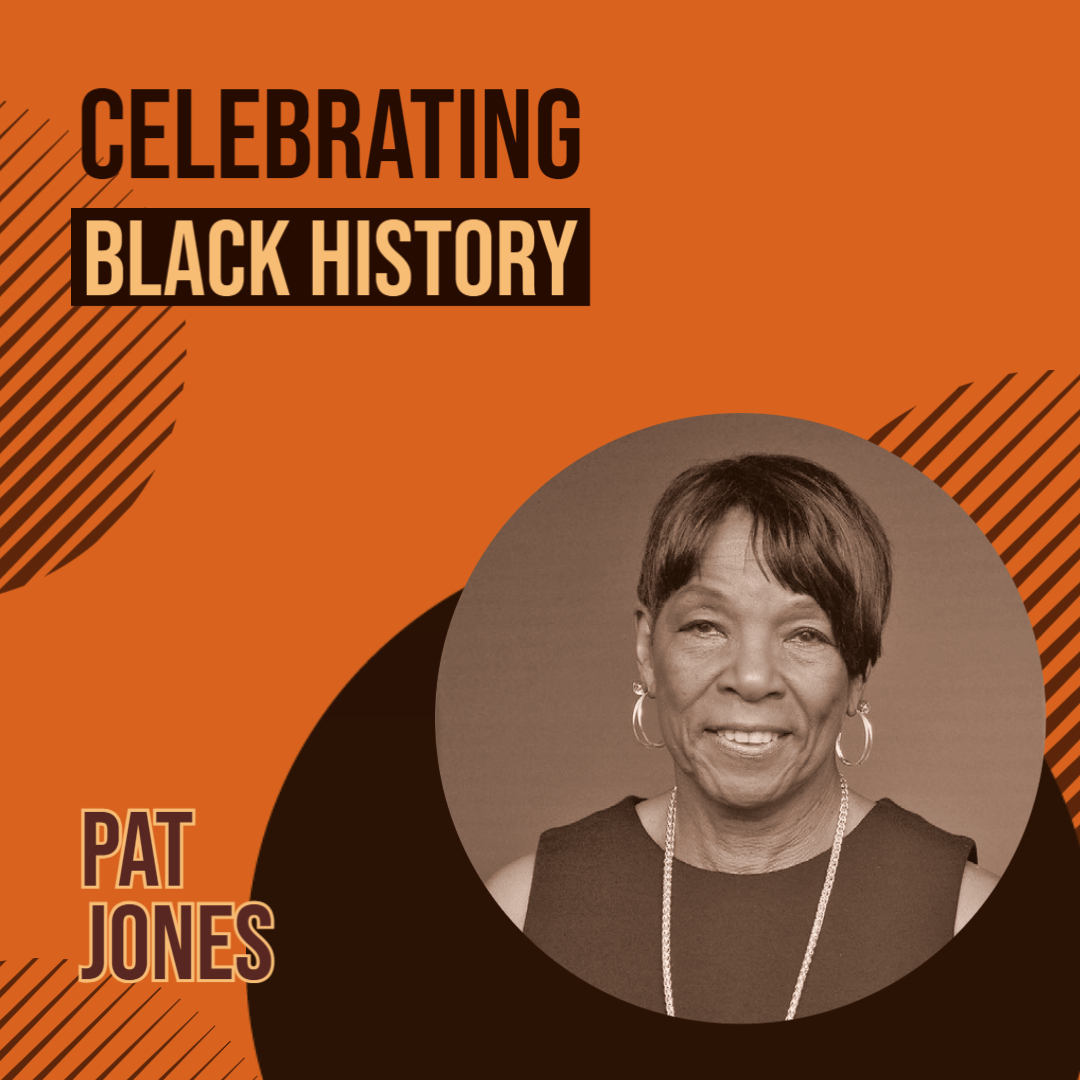Black History
2024 Black History Month
Each day in February we will take a moment to highlight Black leaders, innovators, and change-makers across our great state. These individuals have a connection with North Carolina and have made an impact reaching far beyond the borders of our state through their talent, passion, and perseverance.
Celebrating Black History - Nina Simone
Nina Simone was born as Eunice Kathleen Waymon on February 21, 1933, in Tryon, NC. She was a singer, songwriter, pianist, arranger, composer, and civil rights activist who often used her entertainment platform to promote civil rights. Nina is featured on a mural in her hometown that is part of the NC Musicians Mural Trail.
Celebrating Black History - Hiram Rhodes Revels
Hiram Rhodes Revels became the first African American senator in 1870. He was born in Fayetteville, North Carolina, and was elected to the United States Senate to represent Mississippi in 1870 and 1871. Hiram Rhodes Revels was the first African American to serve in either chamber of the U.S. Congress.
Celebrating Black History - Thomas Sowell
Thomas Sowell is a social theorist, author, and economist born in Gastonia, North Carolina in 1930. He has played a prominent role working as a faculty member at Cornell University, Amherst College and the University of California, Los Angeles (UCLA). He is a Senior Fellow on Public Policy at the Hoover Institution and a political commentator.
Celebrating Black History - Chris Paul
Chris Paul is a professional NBA basketball player from Winston-Salem, NC. He played for Wake Forest University for two years and is currently the NBA point guard for the Golden State Warriors. He is regarded as one of the greatest point guards of all time and he established a foundation to support marginalized students and community organizations to support leadership development.
Celebrating Black History - John Coltrane
John Coltrane was a legendary jazz saxophonist born in Hamlet, North Carolina in 1926. He spent the first seventeen years of his life in High Point and started playing the saxophone while he attended William Penn High School. After moving to Philadelphia, he collaborated with jazz greats such as Dizzy Gillespie, Earl Bostic, Thelonious Monk, and Miles Davis. He is featured on a mural in Hamlet as part of the NC Musicians Mural Trail and a statue of him appears in downtown High Point.
Celebrating Black History - P.B. Young
P.B. (Plummer Bernard) Young Sr. was a newspaper editor and publisher who ran The Norfolk Journal and Guide which became the largest selling Black newspaper in the South. Before moving to Norfolk, VA, P.B. Young was born in Littleton, NC and assisted his father who was the founder and publisher of The True Reformer in their hometown.
Celebrating Black History - Thelonious Monk
Thelonious Monk was a jazz pianist and composer who was born in 1917 in Rocky Mount, North Carolina. In 1920 his family moved to New York City where he began taking piano lessons and went on to be the second-most recorded jazz composer after Duke Ellington. He has been recognized as one of the most inventive pianists of any musical genre and is featured on the NC Musicians Mural Trail in Rocky Mount.
Celebrating Black History - Sugar Ray Leonard
Sugar Ray Leonard is a legendary sports icon, Olympic champion, and professional boxer. He was born in Wilmington, NC before moving to Washington, D.C., and later Maryland. Sugar Ray competed professionally between 1977 and 1997, winning world titles in five weight classes. He established The Sugar Ray Leonard Foundation to fund research and create awareness for childhood type 1 & 2 diabetes.
Celebrating Black History - Anna Julia Cooper
Anna Julia Cooper was a writer, sociologist, teacher, and activist who championed education for African Americans and women. She was born into slavery in 1858 in Raleigh, earned a BA and a master's degree in mathematics, and later went on to earn her doctorate from the University of Paris, Sorbonne, making her the fourth Black woman in the United States to earn a PhD. She established and co-founded several organizations to promote Black civil rights.
Celebrating Black History - Charlie Sifford
Charlie Sifford was born in Charlotte and later became the first African American to play on the PGA Tour. He was introduced to golf as a young teen when he worked as a caddie at the segregated Carolina Country Club. He was the first Black golfer to be inducted into the World Golf Hall of Fame and in 2014, he was awarded the Presidential Medal of Freedom.
Celebrating Black History - Sarah Boone
Sarah Boone was born near the town of New Bern in 1832. She was the daughter of enslaved parents. Using a network tied to the Underground Railroad, she migrated with her husband and children to Connecticut where she worked as a dressmaker. She created an ironing board that improved her work and applied for a patent making her one of the first African American women to earn a patent.
Celebrating Black History - Michael Jordan
Michael Jordan was born in Brooklyn, NY, but moved with his family to Wilmington, NC when he was a toddler. He played college basketball for three seasons with the UNC Tar Heels before becoming a professional basketball player for the Chicago Bulls, winning six NBA championships. He is a global cultural icon and businessman who provides funding for many philanthropic organizations including medical clinics in North Carolina.
Celebrating Black History - Dr. Darin Waters
Dr. Darin Waters is the Deputy Secretary of the Office of Archives and History at the NC Department of Natural and Cultural Resources. Originally from Asheville, he was an Associate Professor of History at UNCA and the Executive Director of UNCA’s Office of Community Engagement.
Celebrating Black History - Romare Bearden
Romare Bearden was an artist, author and songwriter born in Charlotte, NC in 1911. His family eventually settled in Harlem and he graduated from New York University. His early paintings often focused on scenes of the American South and much of his work were collages of photographs and painted paper depicting aspects of American black culture in a style derived from Cubism. He is considered one of the most important African American artists of the 20th century.
Celebrating Black History - Golden Frinks
Golden Frinks was a civil rights activist who brought early civil rights victories to North Carolina. At age nine, his family moved to Tabor City, NC, and at age sixteen he joined the US Navy. After moving to Edenton, he began the Edenton Movement, a series of protests and pickets in the early 1960’s to desegregate public locations that helped successfully desegregate the courthouse, library, and high school in Edenton. He earned the name “The Great Agitator” from his picketing methods and frequent arrests. Frinks served as a field secretary of the Southern Christian Leadership Conference and worked closely with Dr. Martin Luther King to organize civil rights activities.
Celebrating Black History - Betty Davis
Betty Davis was born Betty Mabry in Durham, NC in 1945. She is a pioneer funk, soul and rock singer-songriter. She moved to New York City in the 1960s where she captivated jazz legend Miles Davis, whom she would later marry. In the early 1970s, Betty Davis embarked on her solo career and became a trailblazer for women artists in the music industry. You can see her featured on the NC Musicians Mural Trail in her hometown of Durham.
Celebrating Black History - Buck Leonard
Walter “Buck” Leonard was one of the best pure hitters to play in the Negro Leagues. He was born in 1907 in Rocky Mount, NC, played semi-pro baseball for the Rocky Mount Elks and Rocky Mount Black Swans, and went on be a key player with the Homestead Grays, who had some of the best Negro League teams of the 1930s and 1940s. Leonard wasn't able to get a high school diploma until the age of 52, because his hometown didn't have a high school that allowed education for African-Americans. Always an advocate for civil rights, he was an ambassador for Negro League baseball and was elected to the Hall of Fame in 1972.
Celebrating Black History - Moms Mabley
Loretta Mary Aiken was a stand-up comedian and performer known by her stage name, Jackie “Moms” Mabley. She was born in Brevard, NC and joined the vaudeville circuit at age 14. She became a regular performer at the Cotton Club, recorded multiple comedy albums and was the first female comedian to play the Apollo Theater.
Celebrating Black History - Dennis Robinson
Dennis Nelson Robinson was born in Brevard in 1942 and attended high school in Hendersonville before the schools were integrated in Brevard. At age 14, he joined the Tams, a rhythm and blues band that became popular at universities along the east coast. In Los Angeles he acquired the stage name “Mr. Excitement” and played bass guitar for the Ike and Tina Turner Revue. His entertainment career spanned decades in California and North Carolina.
Celebrating Black History - Crystal Fox
Crystal Fox is an actor and singer who was born in Tryon, NC, raised in Detroit for twelve years and grew up in Atlanta. She is best known for her work playing Luann Corbin in the series In the Heat of the Night and Hanna Young in The Have and the Have Nots. She is also the niece of famed singer Nina Simone.
Celebrating Black History - Brad Daugherty
Brad Daugherty is a former professional basketball player who played college basketball for the UNC Tar Heels and in the NBA with the Cleveland Cavaliers. He was born in Black Mountain, NC and led the Charles D. Owen High School Warhorses to the state finals. He was inducted into the NC Sports Hall of Fame and was a five-time NBA All Star.
Celebrating Black History - Pic & Bill
Charles Edward Pickens and Billy Mills were soul singers from North Carolina. Charles (Pic) grew up in the southside community of Asheville. Charles was a member of the band The Untils when he heard about a competitive group in nearby Brevard, NC called The Tams with William (Bill) Mills. Charles and William would come together to the soul group Pic and Bill. They recorded their first album for Smash Records and would record over 25 songs and music for commercials. In 1965 they were based in Fort Worth, Texas where they recorded many singles and an album, Thirty Minutes of Soul. Charles Pickens took part in the production of their eleven singles of the era as well as writing many of the songs. They went separate ways for other projects, but in 1987 the duo reunited under an Asheville label to release additional songs.
Celebrating Black History - Roberta Flack
Grammy Award-winning singer, songwriter, and pianist Roberta Flack was born in Black Mountain in 1937. The daughter of two pianists, Flack began playing piano at age 9 and later received a bachelor’s degree in music education from Howard University. Flack has won four Grammy awards and her album 1973 Killing Me Softly was certified double platinum. In 2009, she was inducted into the North Carolina Music Hall of Fame, and she is featured on the NC Musicians Mural Trail in her hometown of Black Mountain.
Celebrating Black History - Harthorne Wingo
Harthorne Wingo was born in Tryon, NC in 1947. He made history as a senior by being part of the first integrated class at Tryon High School. The Tryon High Tigers won the Foothills Conference regular season and tournament championships with Wingo. He played for a year at Friendship Junior College and moved to New York City where he signed with the New York Knicks. He played four seasons and won a league championship with the team in 1973.
Celebrating Black History - Shirley Hemphill
Shirley Hemphill was born in Asheville in 1947. She was a graduate of Stephens-Lee High School, and she worked at American Enka and an outpatient clinic of Mission Hospital before starting her comedy career. She caught the attention of Flip Wilson with her stand-up recordings in the 1970s and moved to Los Angeles where she was cast as Shirley Wilson on the sitcom “What’s Happening!!” She would later star in her own sitcom “One in a Million” and “What’s Happening Now!!”
Celebrating Black History - William Barber
Rev. Dr. William J. Barber II is minister, professor and social activist who moved to Washington County, NC as a child with his parents who participated in the desegregation of the public school system. He received his bachelor's degree in political science from NCCU, a Master of Divinity degree from Duke University in 1989, and a doctorate from Drew University with a concentration in public policy and pastoral care in 2003. Later he served as president of the North Carolina NAACP and has led the Moral Movement with marches and protests to fight injustice.
Celebrating Black History - Elizabeth Cotten
Elizabeth "Libba" Cotten was born in Chapel Hill in 1893. She taught herself to sing and play the guitar and left an profound mark on the folk music genre with her unique style and fingerpicking technique. At a young age, Libba learned to play her brother's guitar, but she played it upside-down and left-handed, which created a distinct sound that became her trademark. Her musical talent remained unknown until she was discovered by the Seeger family, in the late 1940s.
Celebrating Black History - Chuck Brown
Chuck Brown is known as the "Godfather of Go-Go" and pioneered a musical blend of Latin beats, African call-and-response chants, rhythm and blues, and jazz linked to the District of Columbia. The guitarist, bandleader and singer was born in Gaston, NC before moving to the nation’s capital. He formed a group called the Soul Searchers and earned further fame with his song and album titled “Bustin’ Loose.”
Celebrating Black History - Greensboro Four
On February 1, 1960, four black students (The Greensboro Four) from North Carolina A&T State University, staged a sit-in at the Woolworth store in Greensboro, NC. David Richmond of Greensboro, Franklin McCain of Union County, Ezell Blair Jr. (Jibreel Khazan) of Greensboro, and Joe McNeil of Wilmington, sat at the ‘white only’ counter of Woolworths and were refused service. Known as the Greensboro Four, they peacefully protested and inspired thousands of demonstrators including Hendersonville twins Frank and Harry Wilson Jr. who participated. Five and a half months after the sit-in began, local businesses agreed to serve African Americans alongside their white patrons.
2023 Black History Month

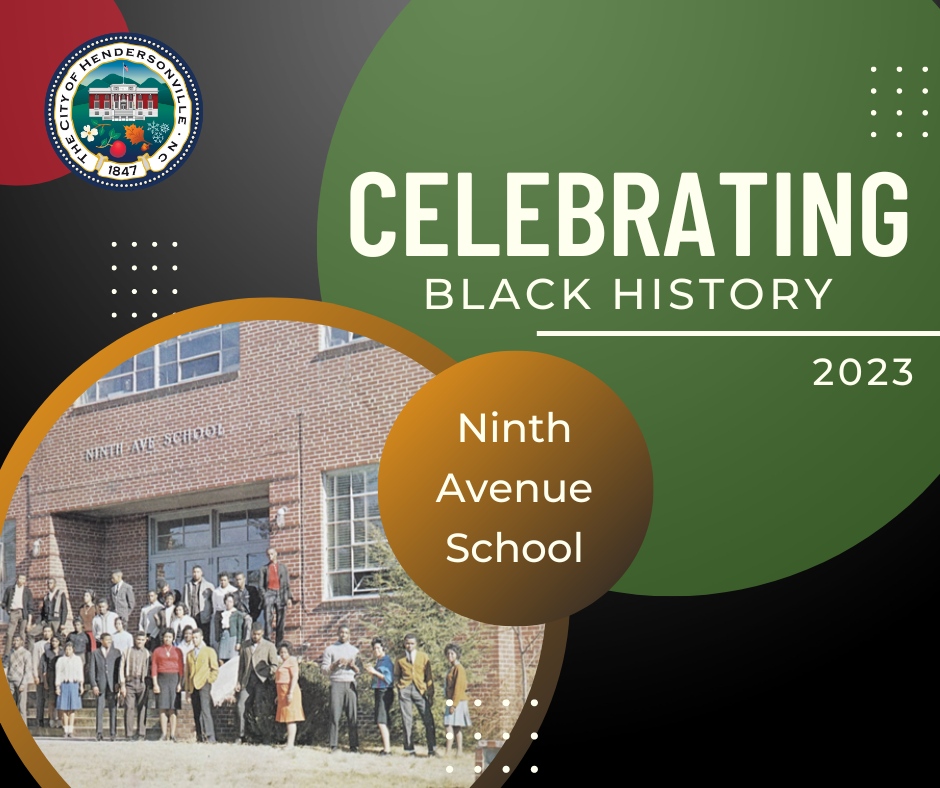
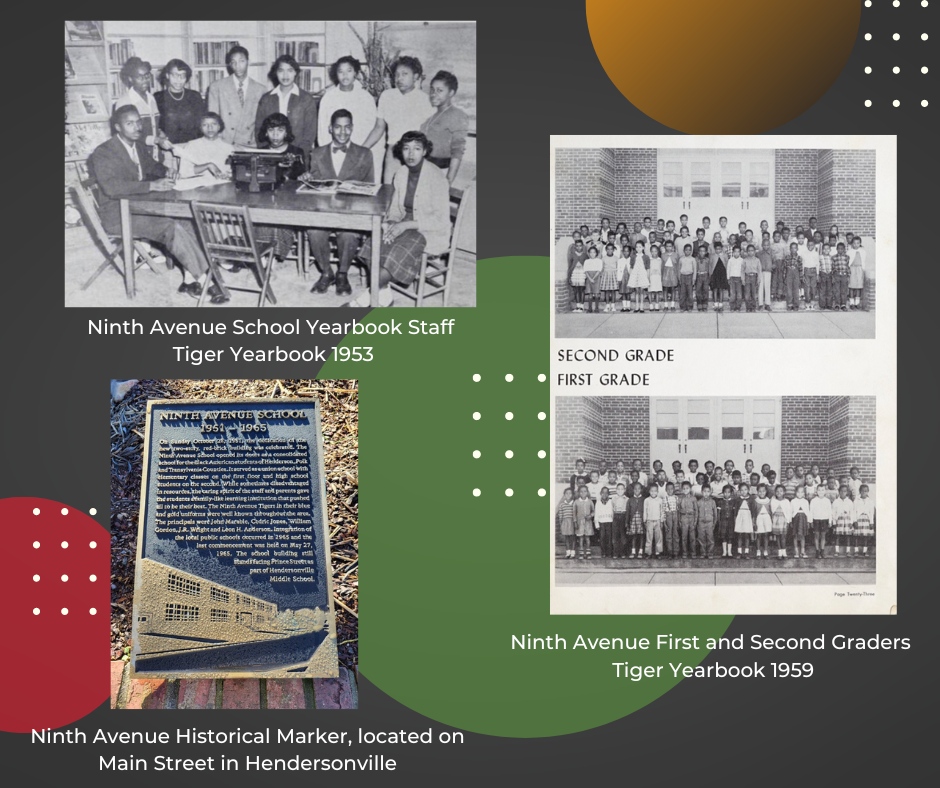
The Sixth Avenue School was located at the northeast corner of Sixth Avenue and Valley Street. The two-story structure opened its doors to area Black American students in 1916. There were classrooms on the first floor and an auditorium on the second floor which served as multiple classrooms as well as a community center.
During the Great Depression, a former wooden frame gymnasium that was no longer needed at Hendersonville High School was dismantled and moved north of the Sixth Avenue School to serve as a high school annex. It was the first Ninth Avenue School, dubbed “the Gym.” The principals of these schools were Rev. John Wesley Neill, W.M. Robinson, Spencer Durante and John Marable.
Photo Credit - 6th Avenue School Students – courtesy of the Henderson County Genealogical and Historical Society
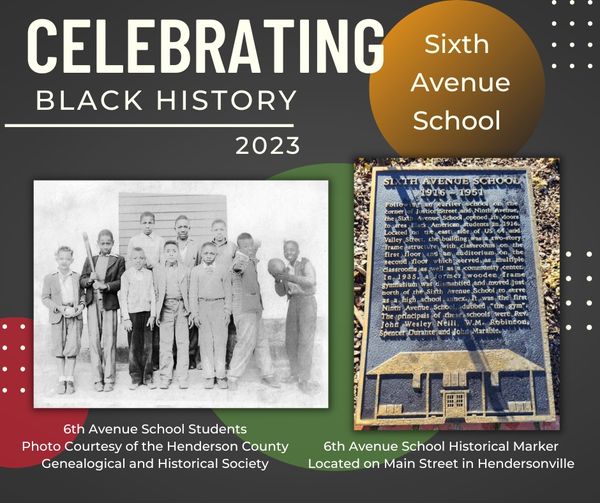
The People's Museum is located within Hands On Children's Museum-WNC. Make sure to stop by this month to see their Black History Month art display and learn more about Hendersonville's history.
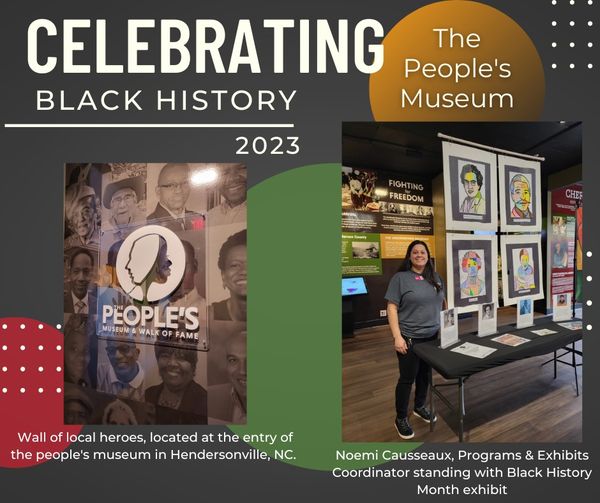
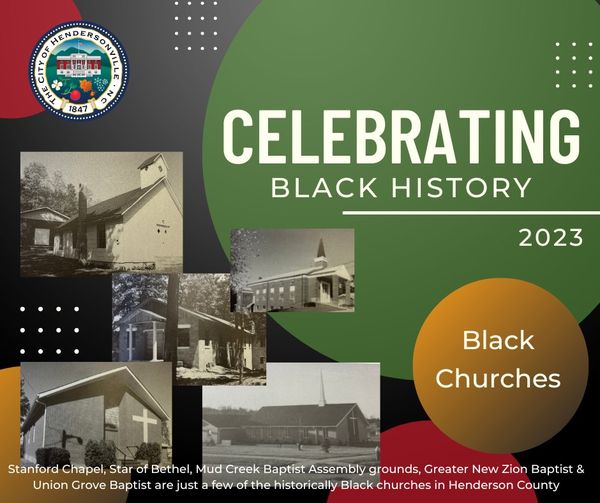
In the mid-nineteenth century there were not many locations for Black believers to worship in the outlying areas of Henderson County. In 1865 a small group of believers persevered in their desire to worship and were given an opportunity to hold services on the land of Mr. and Mrs. J. R. Leverette in Horseshoe, NC. They assembled on Sundays within the confines of a grove of trees next to a small stream called Shaw’s Creek. Due to the weather and outdoor elements, the group built a brush arbor under which they could carry on their worship. The Leverette family offered the small congregation land to build a more permanent structure and the members worked together to build a church building.
For twenty-five years the members saved their money until 1890 when they had saved fifty dollars and bought the two and a half acres of land surrounding the church from the Leverettes. The church was originally named Logan’s Chapel after Rev. John Wesley Logan who was born as an enslaved person and served for over 17 years at the chapel that was named in his honor. The church was eventually renamed Shaw’s Creek African Methodist Episcopal Zion Church after the small stream that flowed through the property.
St. Paul Tabernacle A.M.E. Zion Church was formed out of Shaw’s Creek to provide a church that was closer to Hendersonville.
Info by Black History Research Committee of Henderson County https://blackhistories.org/
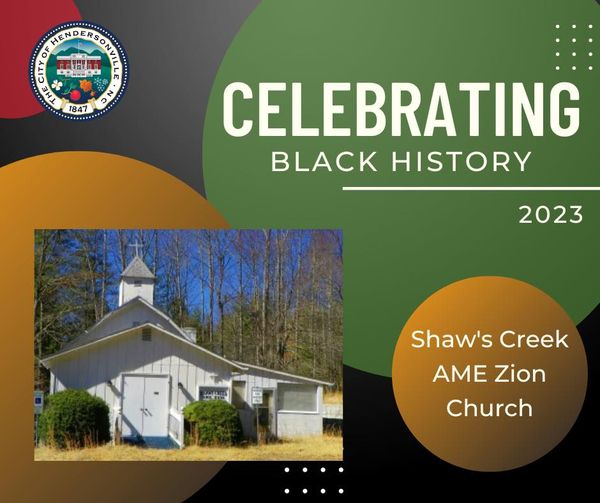
In the early 1870s a group of Shaw’s Creek AME Zion Church members in Horseshoe, NC, decided a new congregation should be formed in Hendersonville. Some of Shaw’s Creek’s members found employment in Hendersonville and moved into town. Inadequate transportation options and rough roads causing next to impossible travel in harsh weather prompted a new church to be formed. The new congregation did not have a building so they would alternate between the school building and Star of Bethel Church to worship. In 1872 a record for a parcel at Sixth Avenue and Fleming was purchased by trustees of the church and in 1880 St. Paul Tabernacle AME Zion Church was founded. As the city population increased and tourism grew, the church found itself surrounded by hotels and boarding houses. ‘Some dissension began to be voiced because of our high emotions and late-night services,’ according to St. Paul’s 150th anniversary history book, but the new site allowed the congregation to create community on the main thoroughfare. A new church and parsonage were completed in 1921 at the current location at 813 6th Avenue West. In the early 1990s the church building was found to be structurally unsafe, and a new church was constructed and reopened on Mother’s Day in 1993.
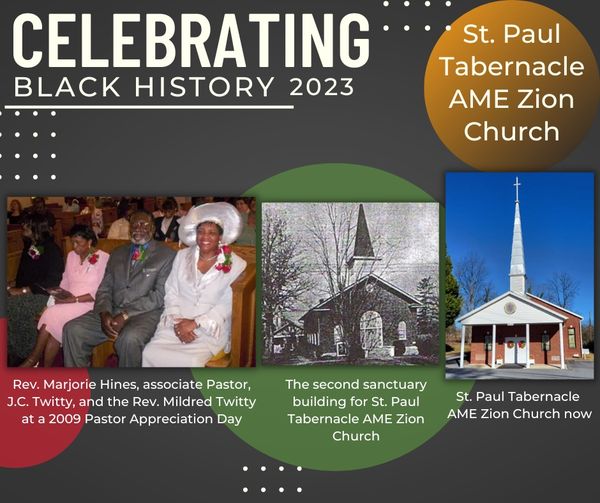
Organized in 1873 under the pastorship of Rev. B. F. Hemphill, Star of Bethel was first located on Ninth Avenue near Justice Street and then moved to Grove Street. The church started out small with fourteen charter members. A need was seen for the church building to be brought closer to the residential area of its members and in 1947, the property at the church’s current location on N. Whitted Street was purchased. The first worship service in the new Star of Bethel church building was held on May 25, 1952, with Rev. G. E. Weaver officiating. Rev. Charles E. Rowe has served Star of Bethel Missionary Baptist Church as pastor since 1988.
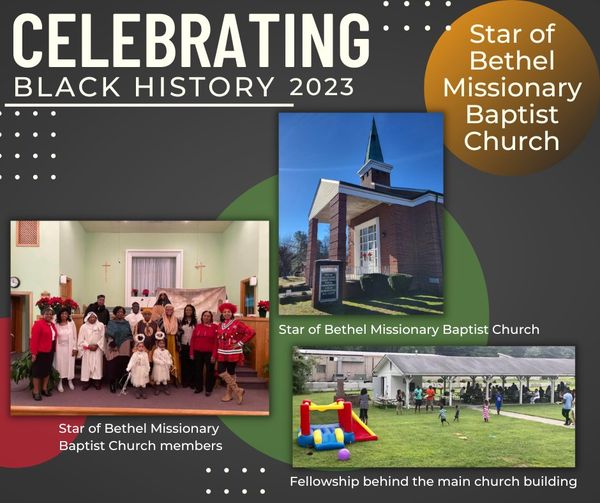
Union Grove Baptist Church was organized as a congregation in 1909, first meeting in homes until land was purchased on Ashe Street and a church building was constructed in 1918. It was also called Little Union Grove in its early years. After outgrowing its original facility, a new church building was completed in 1955. Union Grove has a strong history of groups and choruses that were broadcast over the radio station WHKP during the 1950s and 1960s. According to A Brief History of the Black Presence in Henderson County, Union Grove’s Silver Stars were the first Black group in Henderson County to be featured on a local radio show. In 1974 urban renewal forced the congregation to leave their building on Ashe Street. Regarding the sale of the church and the uncertainty during this time, Union Grove’s history webpage boldly proclaims: “The crisis did not falter our faith.” Services were held at the Mud Creek Baptist Association Assembly Hall in East Flat Rock until the new Union Grove sanctuary was completed in 1975 on Robinson Terrace. In 1984 new classrooms were added and in 2006 the Family Life Center was dedicated. Rev. Billy T. Waters has faithfully pastored the congregation since the early 2000s.
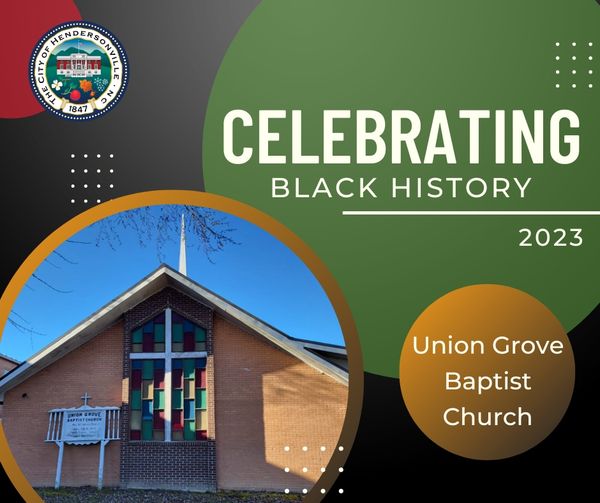
Mud Creek Missionary Baptist Church was formally founded in 1868. In the years prior, the white Mud Creek Baptist Church allowed Black worshippers to use their meetinghouse for worship on designated Sunday afternoons. The group originally called itself “Hendersonville Colored Baptist Church” and later “Mud Creek Colored Baptist Church.” The congregation continued to worship for a time at the white Mud Creek sanctuary, in other white meetinghouses, in members’ homes, and beneath brush arbors. Members of the newly founded church bought a 1.5-acre parcel of the Heidelberg estate (modern-day Bonclarken) in 1889 and built a sanctuary in the 1890s. In 1929, with assistance from the Society of Necessity, the congregation bought land at the intersection of Roper and Mine Gap Roads and erected a new church there in 1932–33. Additions were made over time and the church was renamed Mud Creek Missionary Baptist, which at its peak claimed a membership of nearly 150.
Photos courtesy of the Henderson County Genealogical and Historical Society. Information compiled from Terry Ruscin’s Beyond the Banks series and A Brief History of the Black Presence in Henderson County
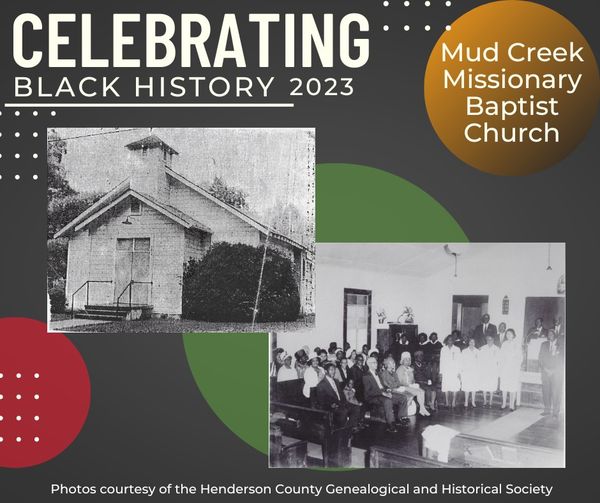
Dr. Martin Luther King Jr. Park was originally named Walnut Park. In 2004, Hendersonville City Council voted to rename the park Dr. Martin Luther King Park following input from a committee charged with finding ways to honor the civil rights leader. The park was upgraded and expanded to include picnic tables, benches, a small walking path and an engraved memorial honoring the park’s namesake in 2006. A portion of U.S. Hwy 64 East/Four Seasons Blvd. was renamed Dr. Martin Luther King, Jr. Boulevard following a community petition and City Council resolution in the early 2000s.
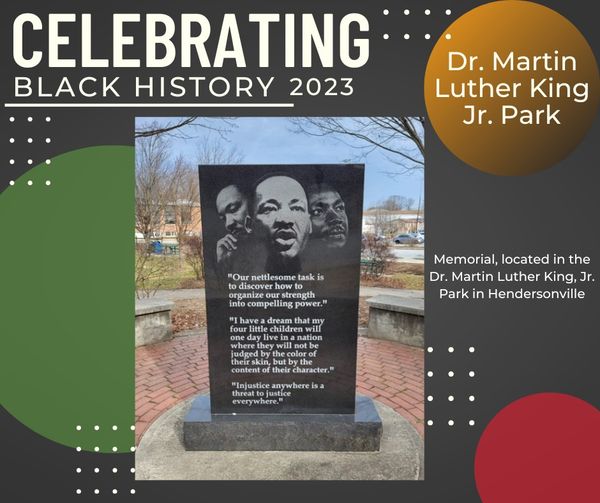
William H. King Memorial Park is located between the Oklawaha Greenway and Sullivan Park off 7th Avenue. It is approximately six acres and features a baseball field and walking trail. The land that became the park was part of the Northeast Area Urban Renewal Project platted in 1975. In 1980, a Land and Water Conservation Fund grant was used to develop the baseball field. In 1982, Gloria Rudisill represented a group of Green Meadows residents who petitioned the City Council to rename this section of Green Meadows Park after the late Mr. King. On October 11, 1982, the park was dedicated as the William H. King Memorial Park.
William H. King was a Hendersonville native and an active civic leader. For close to 30 years, he worked at Berkeley Mills starting as a janitor and working his way up to a job in the warehouse as receiving supervisor. Early in life, he worked for McFarlan Bakery prior to enlisting in the Army. He was the scoutmaster for Boy Scout Troop 684, Sunday School Superintendent for the Union Grove Baptist Church, and started the Junior Church (youth program) and ran it for about ten years. He led church trips with Union Grove where a bus or multiple buses would be rented, and members of Union Grove and other churches would visit places like Clingman’s Dome and Grandfather Mountain. Mr. King coached Little League and organized fundraisers for the Little League program. He was chairman of the Western Carolina Community Action Board, Chairman of the Community Chest of Berkeley Mills, and served as President of the PTA for Ninth Avenue School for the last few years before integration.
Edward, one of Mr. King’s sons, says his father was all about education. In order to help his family, William King had to drop out of school in the 4th grade to help support his family. He did not want his children to be behind in school, so he went to night school to assist with their education. He pushed his children to work hard and excel in school and remained active in mentoring youth throughout his life.

J. H. Sullivan Park was born out of the Brooklyn neighborhood that was displaced by the urban renewal movement. The park is approximately 18 acres and includes a covered basketball court and playground. In 1997, the park previously named Green Meadows Park was changed to J. H. Sullivan Park following a neighborhood petition to honor Reverend James H. Sullivan by naming the park for him.
Rev. Sullivan was an active community leader and Hendersonville native. He was the first Black crossing-guard officer and strong leader to churches for over 30 years. He is also remembered for being a Council Member for the Ninth Avenue School for many years and was also part of the Asheville Ministerial Alliance that was instrumental in the Billy Graham Crusade in the 1970s.
Rev. Sullivan and William H. King were childhood friends. As adults they both worked with the youth in the old Brooklyn community and built the first playground in that area. Rev. Sullivan and Mr. King asked for permission to clear off the property below the railroad tracks and built a basketball court, horseshoe pits and benches.
Recently, the City’s Stormwater Division was awarded $310,000 to restore the creek that runs through Sullivan Park that has been named ‘Brooklyn Creek’ through a program led by the Stormwater Division and RiverLink in partnership with community members.
Photo Credit - Crystal Cauley
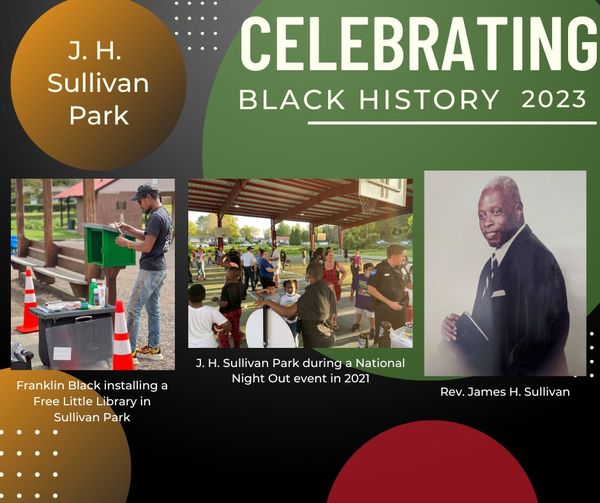
Oakdale Cemetery was constructed as Hendersonville’s municipal cemetery in 1885 following a need for a public burial ground on the outskirts of the city. Shaw’s Creek Road, modern-day US 64, split the white section and the African American section, as during this time African Americans were not permitted to be buried alongside the white deceased. Later additions were made to both sections as well as a Jewish section. A pauper section in both the white and African American sections were also added for people who could not afford a grave marker.

Walter H. Bryson is possibly Henderson County’s only “Buffalo Solider.” Born between 1876 and 1878, Walter enlisted in the US Army. The “Buffalo Soldiers” were established by Congress after the Civil War as the first peacetime all-black regiments in the regular U.S. Army. Plains Indians, noting their tightly curled hair resembled that of the bison, gave these Black GIs the name "Buffalo Soldiers".
During Bryson's service as a cavalryman with the 9th and 10th Cavalries, he saw the last sputters of the Indian Wars and, with the establishment of the huge national parks in California, including Yosemite and Sequoia, with the Black cavalrymen he trained and served as one of the first park rangers before "park rangers" existed.
Bryson died in Henderson County in 1917, soon after he retired from the Army, where he compiled this extraordinary record. His gravesite resides in Oakdale Cemetery in the City of Hendersonville.
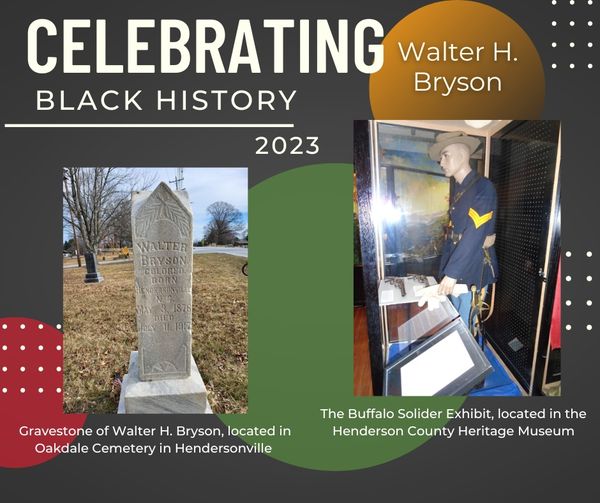
7th Avenue Community Garden
The 7th Avenue Community Garden is an area that brings all generations together with planting each year. Located on Ashe Street across from Sullivan Park, this area has garden beds that are cared for by local volunteers and produce that is shared with the community.
Photo credit: Crystal Cauley & Green Meadows Community
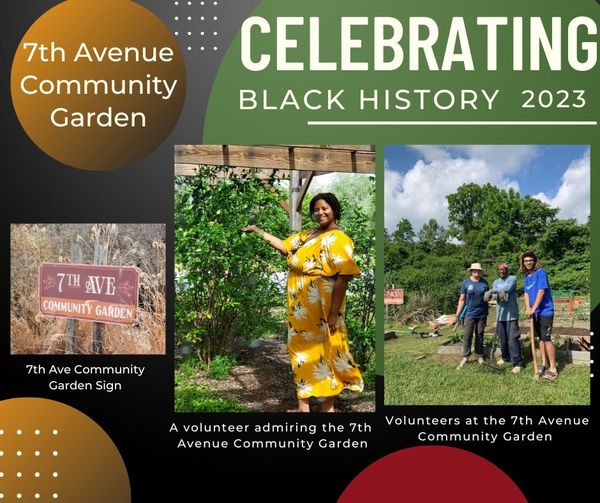
Patton Memorial Hospital
Patton Memorial Hospital was dedicated on July 4, 1913. It began with a staff of four physicians and was in operation for forty years. In the early years, very few African-Americans were treated at the hospital. According to ‘A Brief History of The Black Presence in Henderson County’ operations would be performed, but Blacks were sent home in an open wagon to recover from surgery. It wasn’t until the 1920s that Black community members could stay at Patton Memorial, and even then, they were relegated to a ‘black wing’ in the basement of the building.
Alberta Jowers (Mooney) arrived in Hendersonville in the early 1920s with a nursing degree from the Savannah School of Nursing. She was the first Black nurse at the hospital. She performed nursing duties and lived at the hospital being called on day and night. She had a high level of responsibility and served patients with care and professionalism.
Fred Means joined the Patton Hospital staff doing yard work and was soon promoted to head orderly. For forty years he faithfully served at Patton Hospital and later at Pardee Hospital.
The Patton Memorial Hospital building still stands in the Hyman Heights area and has been converted into apartments.
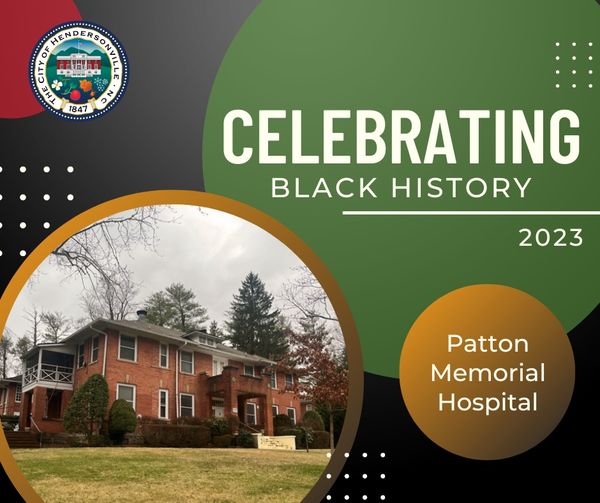
Robert Quinn
Located on 5th Ave., a one-story frame building housed Robert Quinn’s office and electrical appliance shop. According to the WPA Federal Writers' Project Collection, his was the ‘only business in town conducted by a Negro, other than those kept strictly within the confines of the Negro districts.’
Robert Quinn worked as an electrician for an electric lighting company and later began his own business as an electrical contractor and appliance repairman. He and his wife were featured in the Federal Writers’ Project as part of the U.S. Work Projects Administration when Eliza Quinn was interviewed about their lives in 1939. Eliza’s interview gives a glimpse into the struggles faced by African American families. Read ‘A Negro in Business’ at https://www.loc.gov/resource/wpalh2.27080215/?sp=2
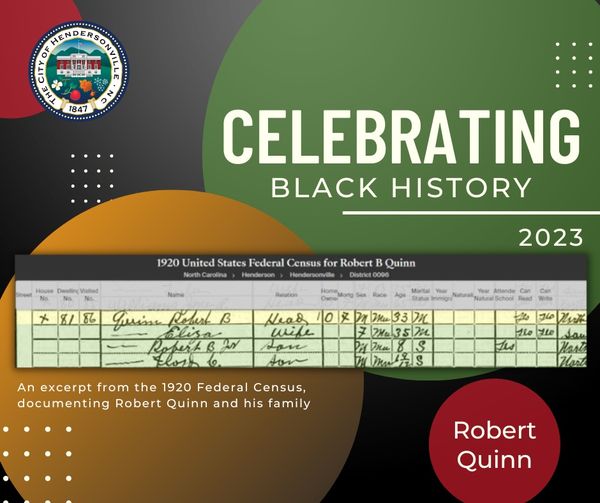
Black Bottom Community
Black Bottom was the area of Hendersonville surrounded by Kanuga, Barnwell, and South Church Streets. According to Terry Ruscin’s Hidden History of Henderson County, it was called ‘Black Bottom’ because the neighborhood consisted of mostly Black families, and it was at the bottom of Hendersonville. Many of the homes in Black Bottom were razed when residents were displaced to housing projects in the 1970s and the area transitioned to commercial buildings.
Photo: Map courtesy of Blackhistories.org and drawn by Debbi Pridmore

Peacock Town Community
Peacock Town is known as the neighborhood in and around Allen Street, First Avenue West, Whitted, and Oak streets. In the book Hidden History of Henderson County, the community was likely named for Samuel Peacock (1914-1980), who owned and sold lots in that sector of town and also owned a cafe and store there. Black-owned businesses like Kathleen’s Beauty Shoppe, the Landina Guest House, and more operated in Peacock Town and drew patrons from far beyond Hendersonville.
Photo: Map courtesy of Blackhistories.org and drawn by Debbi Pridmore
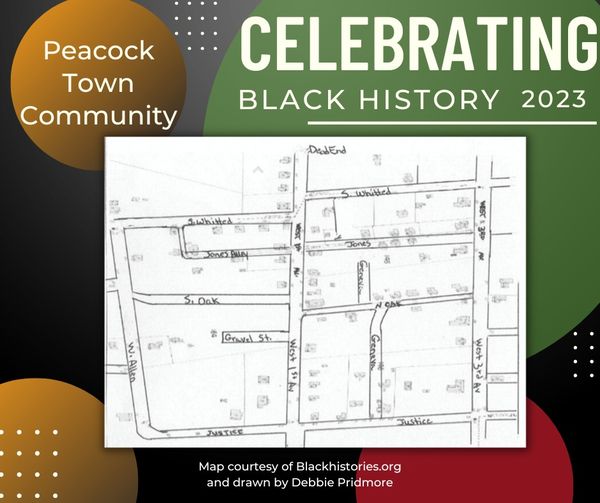
West End Community
West End was historically known as a predominantly Black neighborhood in and around Oak, Adams, Blythe, and Valley Streets between Fifth and Ninth Avenue with Highway 64 West running through the center of it.
Photo: Map courtesy of Blackhistories.org and drawn by Debbi Pridmore

Brooklyn/Green Meadows Community
Though specific details of its origin are lost, Brooklyn (originally known as Brook Land) was established in the late 1860s by emancipated African-Americans looking for a place to call home after a lifetime of enslavement. Over the next century, the neighborhood grew into the local area’s cultural hub for people of color. A community that valued education, entrepreneurship, perseverance, and ingenuity, the people of Brooklyn were poor in social status but rich in heart. United by necessity, neighbors were generally considered members of an extended family, and resources were often communally shared.
At its height, Brooklyn spanned the area east of the railroad tracks from south of 7th Avenue to above Lincoln Circle and encompassed many homes, businesses, and places of worship. Tin Top Alley, a lodging area for migrant farm workers, also occupied a small section of Brooklyn. A variety of fruit trees could be found throughout the village, and livestock dotted the landscape along with the simple wood frame homes of its residents. Community businesses included juke joints, beauty and barbershops, restaurants, laundry services, and the taxi stand. Local churches and their leaders often served as a voice for the community in municipal affairs, especially during the civil rights era of the mid-20th century. One such church leader, Deacon “Uncle Henry” Johnson was even affectionately known as the “Mayor of Brooklyn” for his prominent role in community advocacy.
In the 1960s, the Village of Brooklyn became a victim of the urban renewal movement, and its residents were displaced during the development of the Green Meadows housing project. Few residents were able to purchase new homes occupying the land they previously rented, and the physical cohesion of the community was lost. The deep-rooted human connection of the community, however, remains embedded within the cultural memory of Hendersonville’s African-American citizens.
Photo: Map courtesy of Blackhistories.org and drawn by Debbi Pridmore
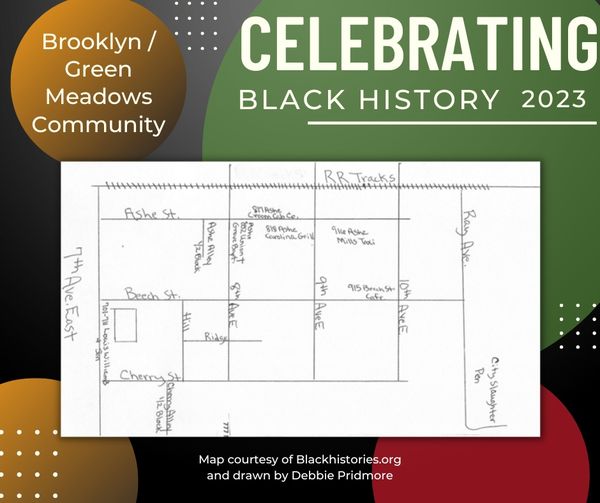
Highlighting Brooklyn’s Businesses
Brooklyn was established during the era of segregation. This prompted Black community members to establish their own neighborhoods like Brooklyn and other neighborhoods. In addition to the residential aspect, many Black-owned businesses were established to not only provide income and employment opportunities, but to meet unmet needs in the community.
Today we will be highlighting some of the Black-owned businesses of Brooklyn. In the next few days, we will highlight additional businesses from across the City as well as posting about historical hotels, salons, and civic organizations.
Much appreciation goes to Melinda Lowrance and Aisha Abdul-Ali for their efforts in compiling business locations that have contributed to the legacy of the Black community in Hendersonville.
Ed Green Café / Homer Davis Café - 1950 – 1960, located on Ashe St. between 9th & 10th Ave. This was a favorite night spot for socializing, dancing, and meeting friends. Both young and old enjoyed this favorite place. It was also a major hangout for the seasonal migrant workers who lived in the nearby camps.
Byrd’s Café / George Byrd Cafe - 1930s, Ashe St. & 9th Ave. It was operated by George and Minnie Byrd and known for good food and great hospitality.
Maude’s Café - Brooklyn
Herschel Thomas Café - 912 Ashe St.
Carolina Grill - Ashe St.
Croom’s Cab Co. / Croom’s Cab Service - Ashe St. - Later the business was called Freeman’s.
Brooklyn Cab Co. - 916 Ashe St. – Managers: Green & Mills
Mills Taxi - Ashe St.
King’s Auto - Ashe St.
Blue Ridge Cleaners - 7th Ave. East
George Boyd Wood Craft Shop – Robinson Ave.
Photo from A Brief History of the Black Presence in Henderson County. Caption: Croom’s Cab operated by Marion Croom (left) and Floyd Johnson in 1946

Hotels, Motels, & Guest Houses
Brewster's Hotel / Bruster Hotel - Maple St. just off 7th Ave. This was probably one of the oldest hotels in Brooklyn during segregation and integration. The inn was named the Station Hotel when it first opened in the early 1900s, and was later known as the Ford and the Caldwell Inn. The Brewster / Bruster Hotel catered to out-of-town visitors, touring jazz bands, and singers.
Jefferson Hotel / Ben Jefferson Hotel / Jefferson Boarding House - 1930-1962 - Corner of Whitted & 7th Ave. Another favorite hotel in Hendersonville.
Logan’s Apartments – 7th Ave. West
Sylvester and Estell Rooming House – Black Bottom / Church St. area
Young’s Tea House – Oak St.
Gus Seawright’s Rooming House – Cherry St.
Jeanette Sim’s Boarding House - Ashe St.
Landina Guest House – 710 1st Ave. West - The Landina Guest House was operated by Hollis T. and Ozzie M. Landrum and served as a gathering spot for Black residents for thirty years. The guest house was listed in the Negro Motorist Green Book from 1960-1961. During the Jim Crow era, African American travelers were often denied service at white-owned hoteIs and restaurants. The Green Book was published as a resource for motorists to let them know where they could safely find lodging, food, gas, and restrooms. At the Landina House Black travelers could “rent a room with a private bath with meals to satisfy.” In 2022, the City of Hendersonville’s City Council, Diversity and Inclusion Committee, and Historic Preservation Committee approved the installation of a historical marker to recognize the Landina House.
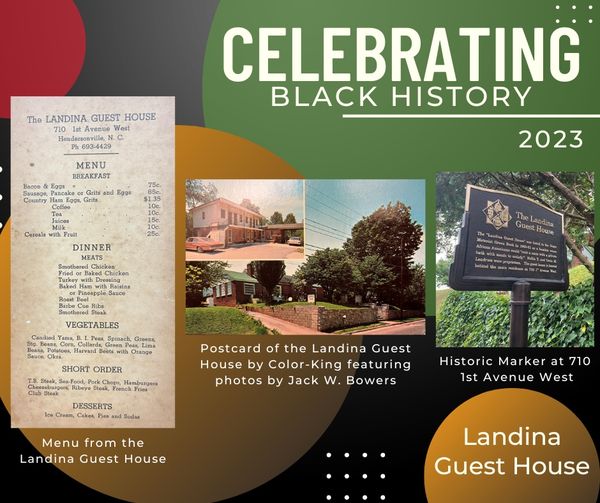
Beauty Shops & Barber Shops
Alberta Jowers Mooney Beauty Shop - Alberta Jowers opened a beauty parlor that employed local women. In 1948 she was appointed as a field representative for the NC State Beautician and Cosmetologist Association and started the Beauticians Chapter 28 in Hendersonville.
Kathleen’s Beauty Shop – 730 1st Ave West – The salon was operated by Kathleen Williams on Maple Street and later moved to Peacock Town.
Geneva Beauty Shop / Geneva Green – Ashe St.
Lydia Landrum – 702 1st Ave. E
Marie Russell – Harris St.
Georgia Mim’s Hair Salon – Holmes St.
Belle’s Beauty Shop – 917 9th Ave. Owned by L.B. Quinn
Young Barber Shop – Ashe St.
Carl Frazier – Whitted St.
Herbert Rhodes – Ashe St.
Jeff Bennet – Ashe St.
Lomax Barbershop – 920 Ashe St.
Photo from A Brief History of the Black Presence in Henderson County. Caption: Western North Carolina Beautician’s Association meeting in Oct. 1954, at the Star of Bethel Baptist Church
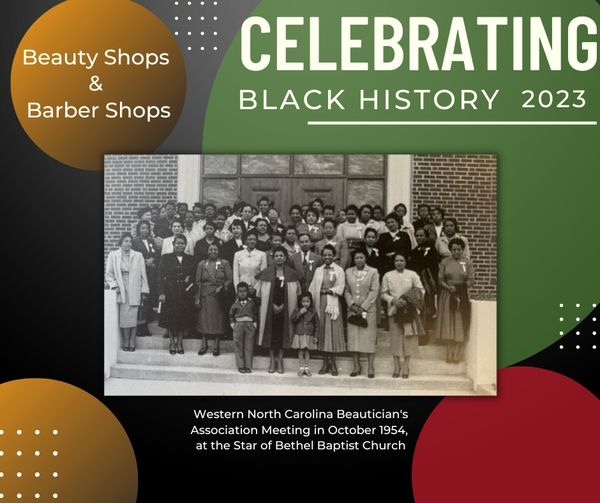
Civic/Community Businesses & Organizations
Teenage Canteen – Ashe St. - The Teenage Canteen was maintained by the Brooklyn community and managed by Carl Ferguson and Alberta Jowers Mooney. Amenities included pool and ping-pong tables, pinball machines and a jukebox.
Elks Lodge / Black Elks Club – site of the current YMCA
American Legion – 812 N. Whitted St. – where Black servicemen would gather
Patrick House – 815 N. Whitted St.
Play and Learn Day Care – Brooklyn
Beech Street Hall - Brooklyn
Knights of Pythias Hall – Brooklyn
Masonic Hall – Brooklyn
Odd Felows Hall - Brooklyn
Rest Haven Nursing Home / Horne’s Nursing Home – 1st Ave. West - Bessie Thompson Horne operated Rest Haven Nursing Home from apartments on 1st Avenue West and later from Ninth Avenue. In the late 1970s Horne earned the name ‘Best Rest Home Operator’ for her contributions to the community.
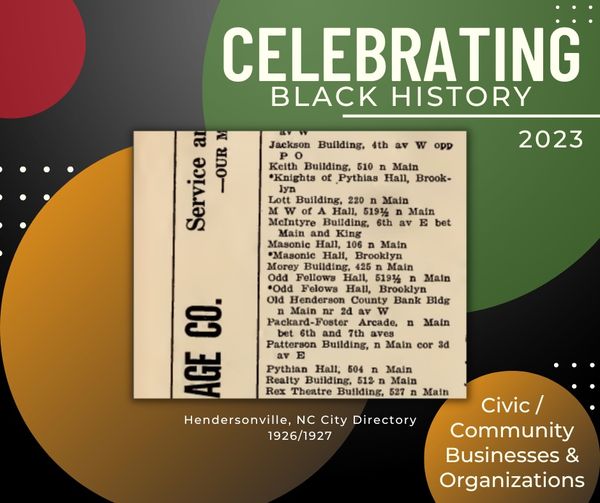
More Black Owned Businesses
The county’s earliest recorded black commercial enterprise according to A Brief History of The Black Presence In Henderson County was a confectionary shop owned by C. E. McKenzie. McKenzie’s show provided customers with groceries, sweets, candles, soap, tea, coffee, and spices.
Lawrence Rhodes Upholstery – 7th Ave. West
El Morocco Grill - 1974-1989 - 701 N. Whitted St. - Owned by Henry and Shirley Perkins.
Lewis Clay Auto – Oak St.
Drake’s Laundry – 1st Ave. East
Sam Peacock Store – Williams St. & 2nd Ave.
Johnny Young Concrete – Brooklyn & 1st Ave. West
Buster Robinson Cab – Whitted St.
Robinson Store – 930 Whitted St.
Logan’s Café - 7th Ave. West
Sylvester & Estelle Store and Café - 7th Ave. West
Quinn’s Electric - 4th Ave.
Will Robinson’s Pressing Club (Dry Cleaner) - Main St. – estimated they were operating in 1915 - 1917
Gus Summey’s Plumbing
Minnie Mills Tailor Shop
Blue Goose
West End Tavern
Pilgrim’s Funeral Home – 836 3rd Ave. West - Pilgrim’s Funeral Home was founded in 1934 by James Pilgrim as Hendersonville’s only black funeral home. Mr. Pilgrim graduated from Stephens-Lee High School and learned his trade with Thomas Shepherd’s Funeral home. He purchased his own funeral home and it operated for more than 60 years. Mr. Pilgrim served as chaplain of the National Funeral Directors Association and was named “Man of the Year” by the organization in 1977.
Photo: Baker-Barber Collection photo of Pilgrim's Funeral Home
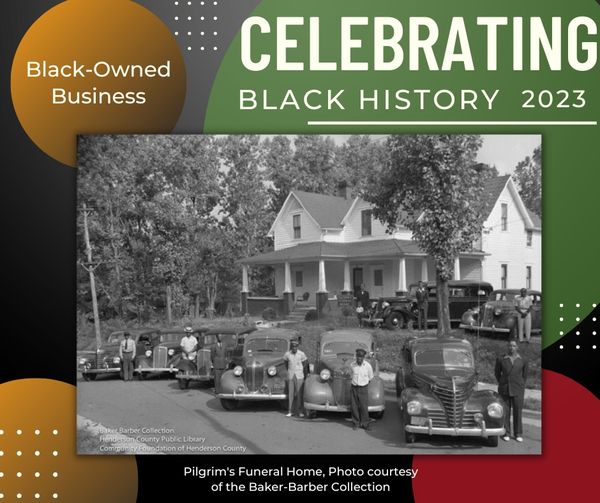
Thank you for joining us this month as we looked at some of the historic landmarks that have contributed to the legacy of our community. We appreciate the collaboration of the following people, groups, and resources who assisted in the compilation:
City of Hendersonville’s Diversity & Inclusion Committee, Melinda Lowrance, Aisha Abdul-Ali, Ronnie Pepper, Crystal Cauley, Eric & Katy Gash, Edward King, Henderson County Genealogical & Historical Society, Henderson County Public Library, The People’s Museum, David Fox, Terry Ruscin’s writings, A Brief History of The Black Presence in Henderson County, Black History Collective of Henderson County, NC, Green Meadows Community, BlackHistories.org
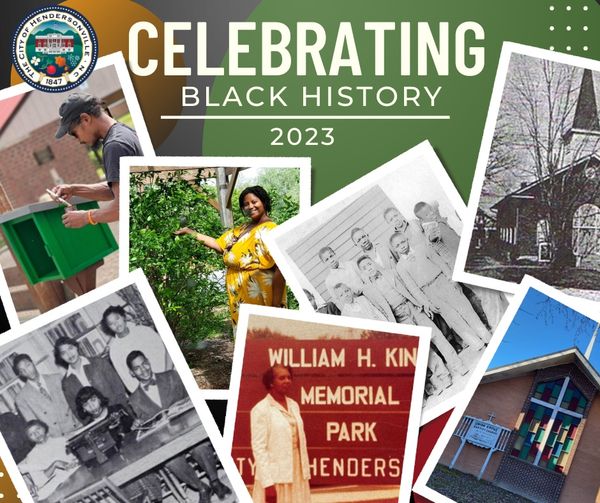
2022 Black History Month
The City of Hendersonville is celebrating 175 years! As part of Black History Month we will be paying tribute to local leaders who have made big impacts on the City’s history. These trailblazers, role models, and community-focused individuals have contributed to the progress and vibrancy of the City of Four Seasons.
The list of honorees was compiled by the City’s Diversity and Inclusion Committee. Thank you to committee and everyone who has contributed information and photos to help us celebrate black history in the City of Hendersonville! There are many more champions beyond this list.
2022 Black History Month
Rena Clay
Rena Joanna Clay was a lifelong resident of East Flat Rock. She graduated from the Ninth Avenue High School and attended Winston-Salem Teachers College for two and a half years. She got a job with the health department in 1950 when it had a staff of seven people working out of four rooms in City Hall. Over the years Rena did a variety of jobs for the health department. She ultimately became a certified nursing assistant and did vision and hearing tests, sterilized equipment, kept up with laboratory paperwork, and stocked examination rooms for clinical staff. She worked for the Henderson County Health Department for 47 years and at the time of her retirement, she worked for the county longer than any other employee. She was also an active member of Mud Creek Missionary Baptist Church. Photo – Times-News Photo
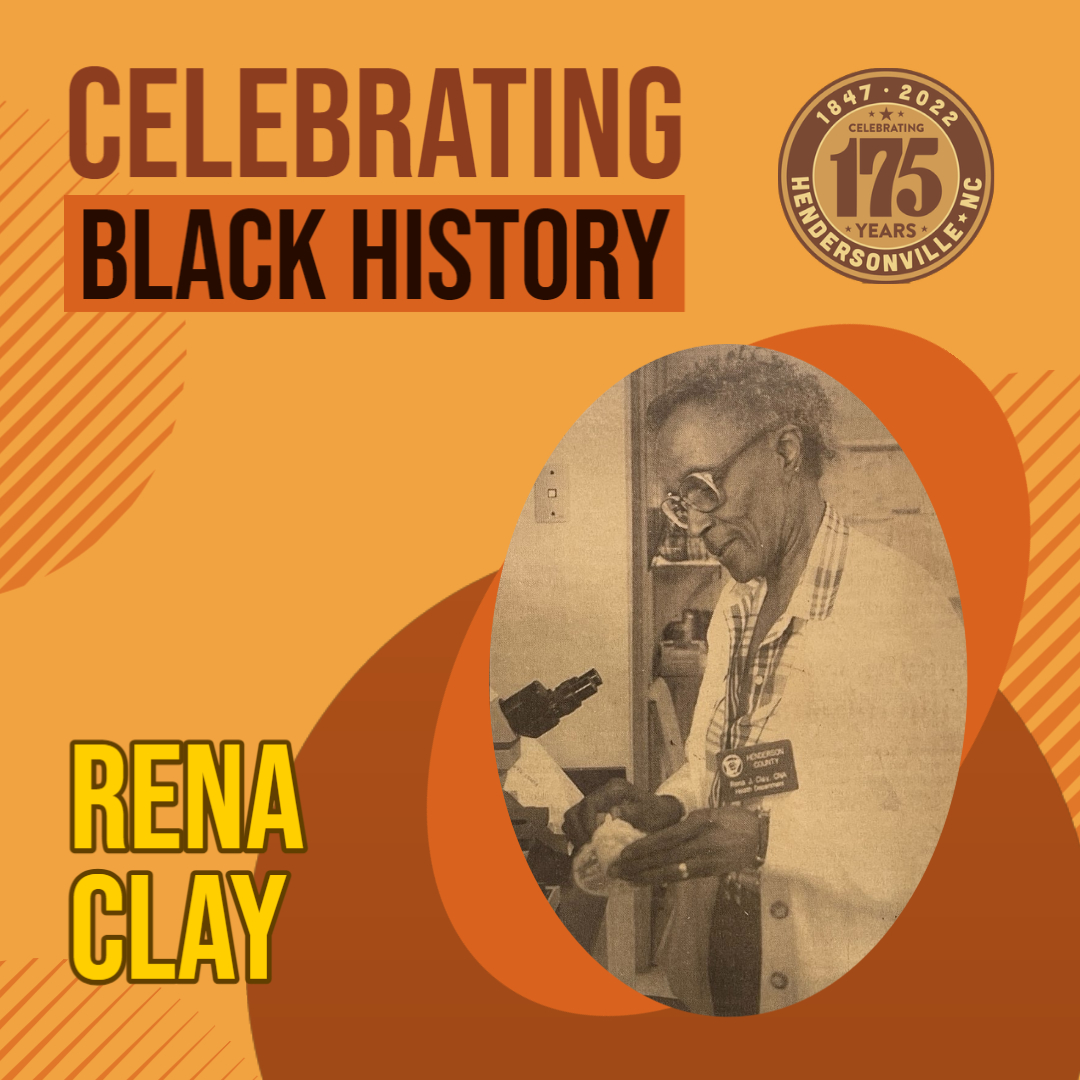
Bessie Horne
Bessie Thompson Horne was the owner and operator of Horne’s Rest Haven nursing home from 1950 to 1979. Her first home was on First Avenue West in Hendersonville, and she later lived in a home at 1003 9th Avenue West. She had a passion for helping people, especially the elderly, the handicapped, the homeless, and the hungry. She appears in the photo with her sons, Kenneth and Michael.
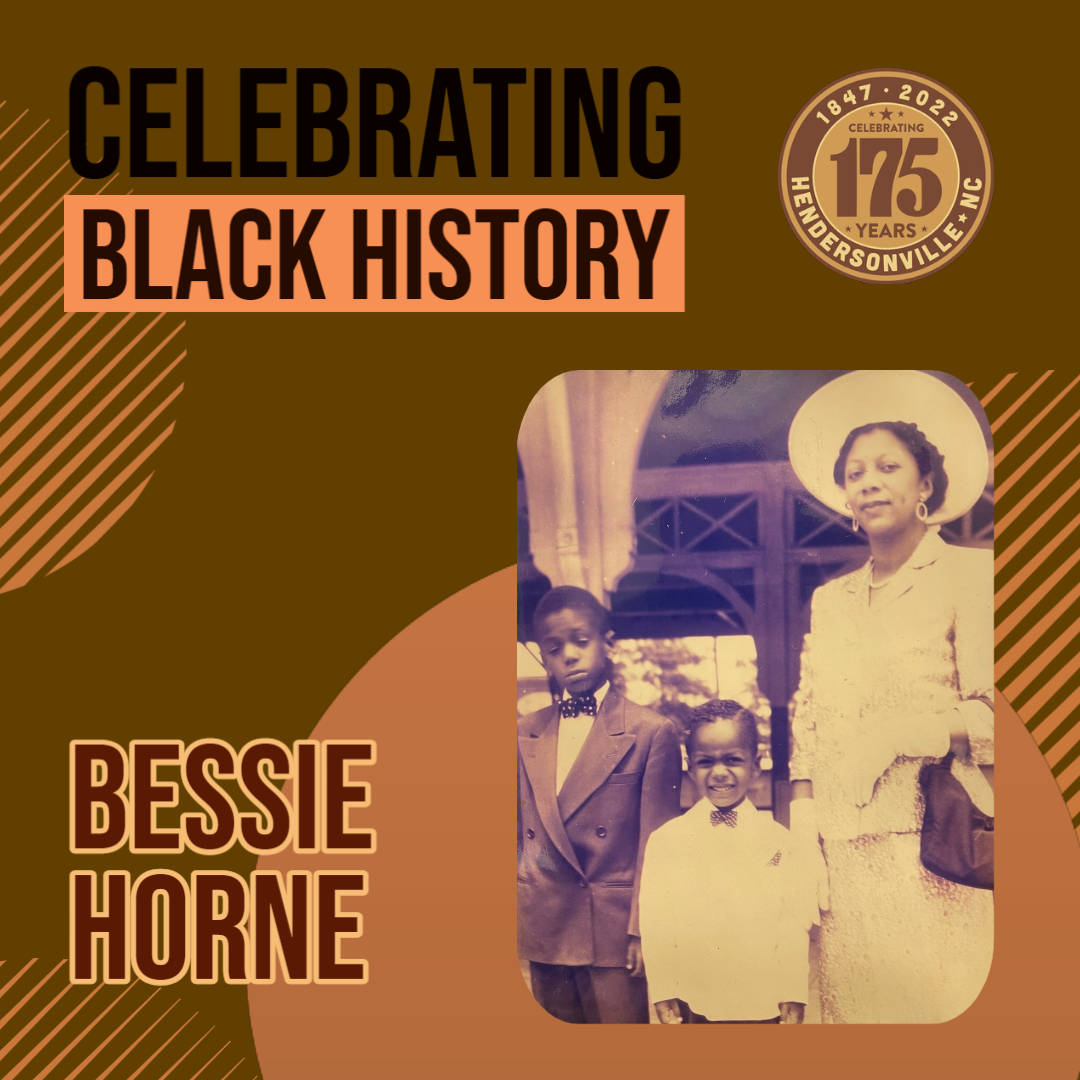
Rev. George Weaver
Reverend George E. Weaver was the pastor at Star Bethel Baptist Church and was the first leader and driving force in the establishment of the Community Council. The Community Council was a local group of civil rights leaders who came together as a united voice for the Black community. The Community Council held meetings with mayors, city councils, school boards, and lawyers to see that the Black citizens of Henderson County were heard. He also served as Vice Moderator of Mud Creek Missionary Baptist Association. Photo - A Brief History of The Black Presence in Henderson County, Rev. George E. Weaver, daughter Margaret, and wife, M.L.
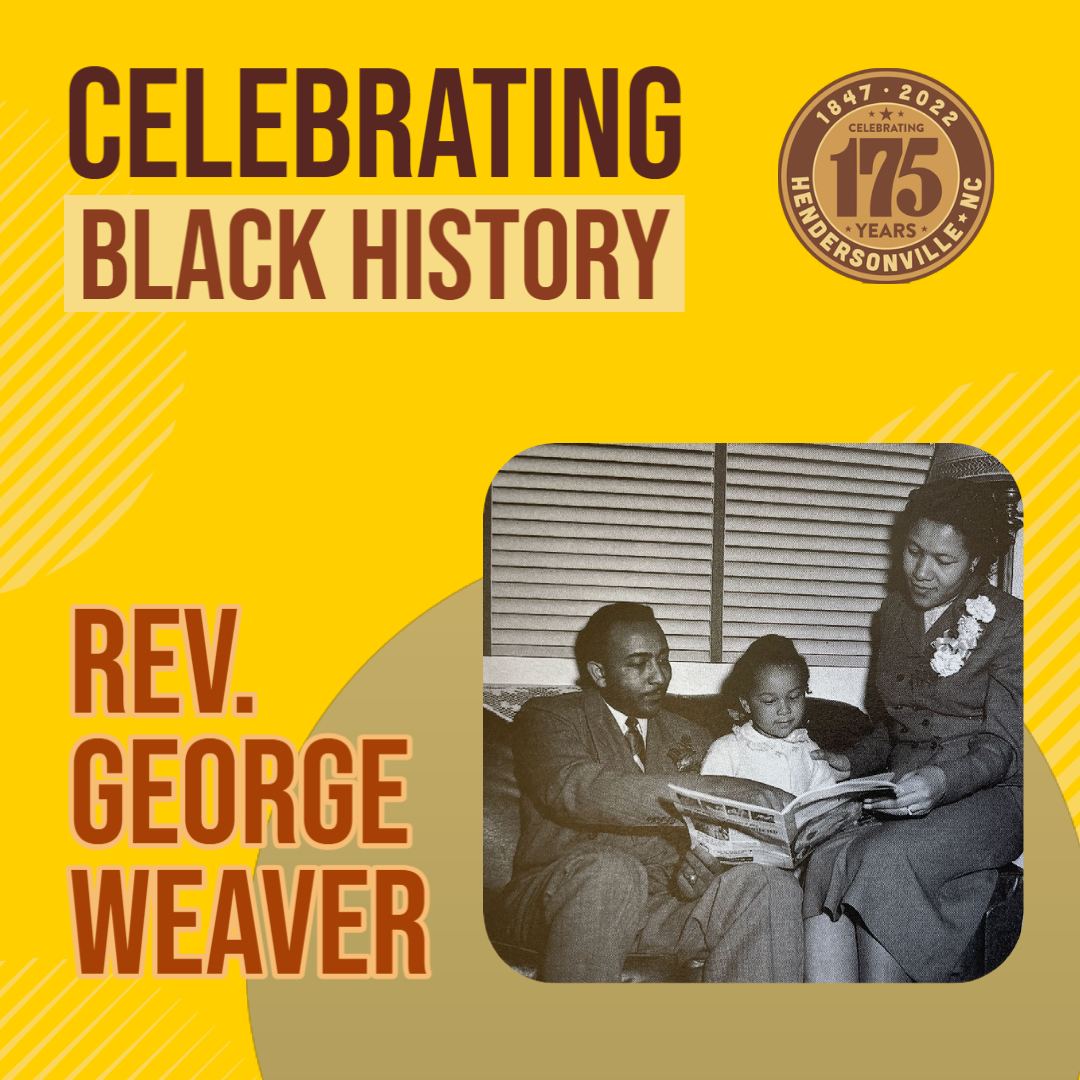
Debbie O’Neal Roundtree
Debbie O’Neal Roundtree was born and raised in Hendersonville and has three daughters, Masha, DeBria, and Jaelyn. Debbie’s father, James O’Neal moved here from Florida in 1949 and her mother Myrtle is a third-generation native of Hendersonville, where she lives today in her home in Green Meadows, part of the Old Brooklyn neighborhood. Debbie received her High School diploma from Hendersonville High School and graduated from Blanton Junior College with a degree in Business Administration. Debbie is active with the Henderson County NAACP, Chapter 5477 and serves as a liaison to the City of Hendersonville Tree Board. Debbie’s other accomplishments include establishing the Back-to-School Fest which is designed to collect school supplies for children in need and to connect them with local organizations and services. Debbie was elected to Hendersonville City Council in 2021.

Fred Means
Fred Means joined Patton Hospital in 1927 doing yard work and was quickly promoted to head orderly. He served as head orderly at Patton Hospital and Pardee Hospital for 40 years. Fred said of his work, “You must have a natural compassion for sick people and the will to contribute to their overall good or you don’t belong on this job.” He was also a member of the St. Paul Tabernacle AME Zion Church where he served on the board of stewards. Photo - Times-News photo and A Brief History of The Black Presence in Henderson County featuring Fred Means, Laura Owens, Jeanette Hutchinson and Mattie Rhoades
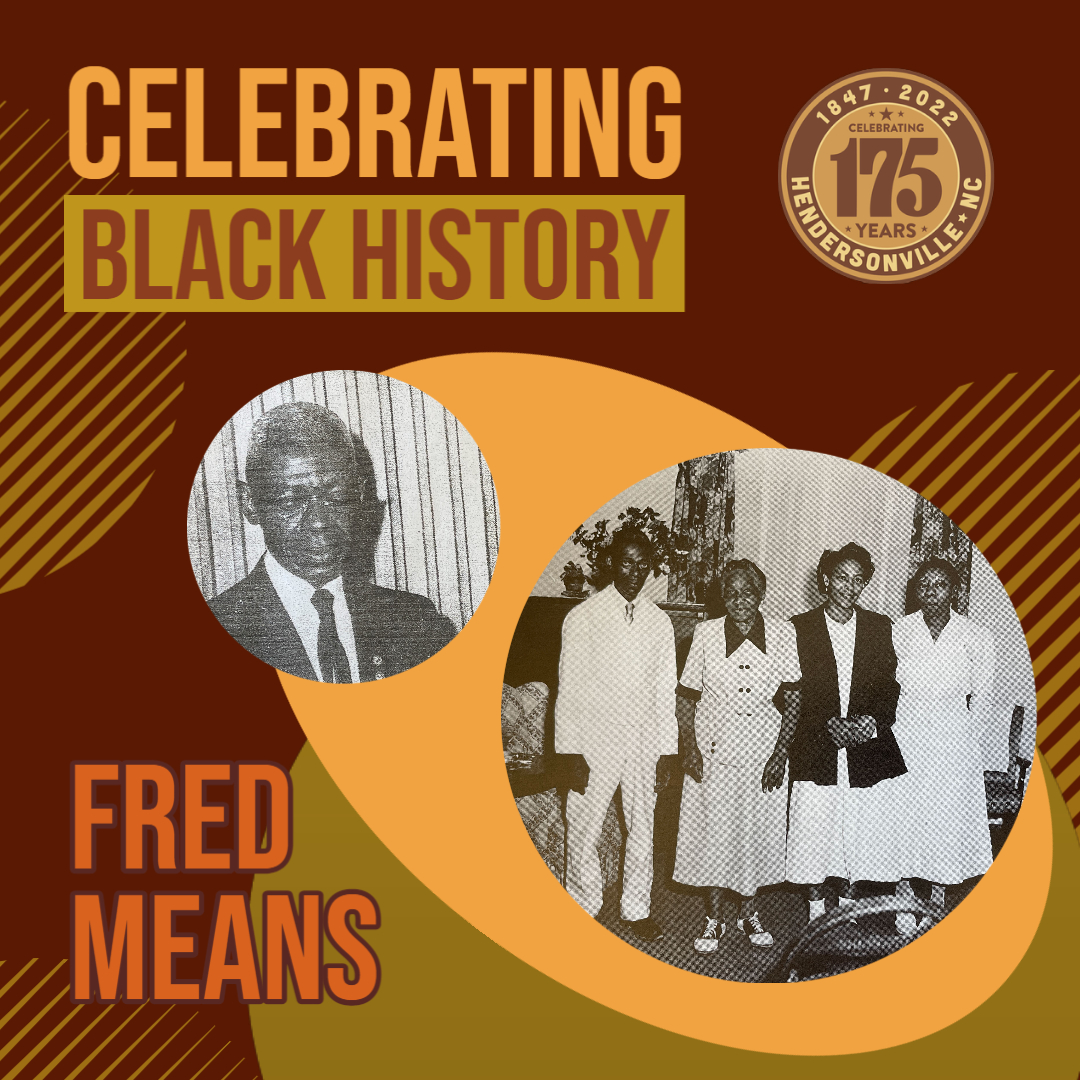
Barbara Johnson
Barbara Johnson was a Licensed Practical Nurse (LPN) at Pardee Hospital for 35+ years. Barbara’s nursing career began in the newborn nursery and ended in the pediatric ward. Barbara was the Valedictorian of Ninth Avenue School Class of 1959. She went on to study at Fayetteville State University and Asheville-Buncombe Community College. Barbara liked to travel, and she enjoyed cruises. Barbara was a 5+ year breast cancer survivor. When cancer returned to other parts of her body, she fought the battle until her passing in May 2011.
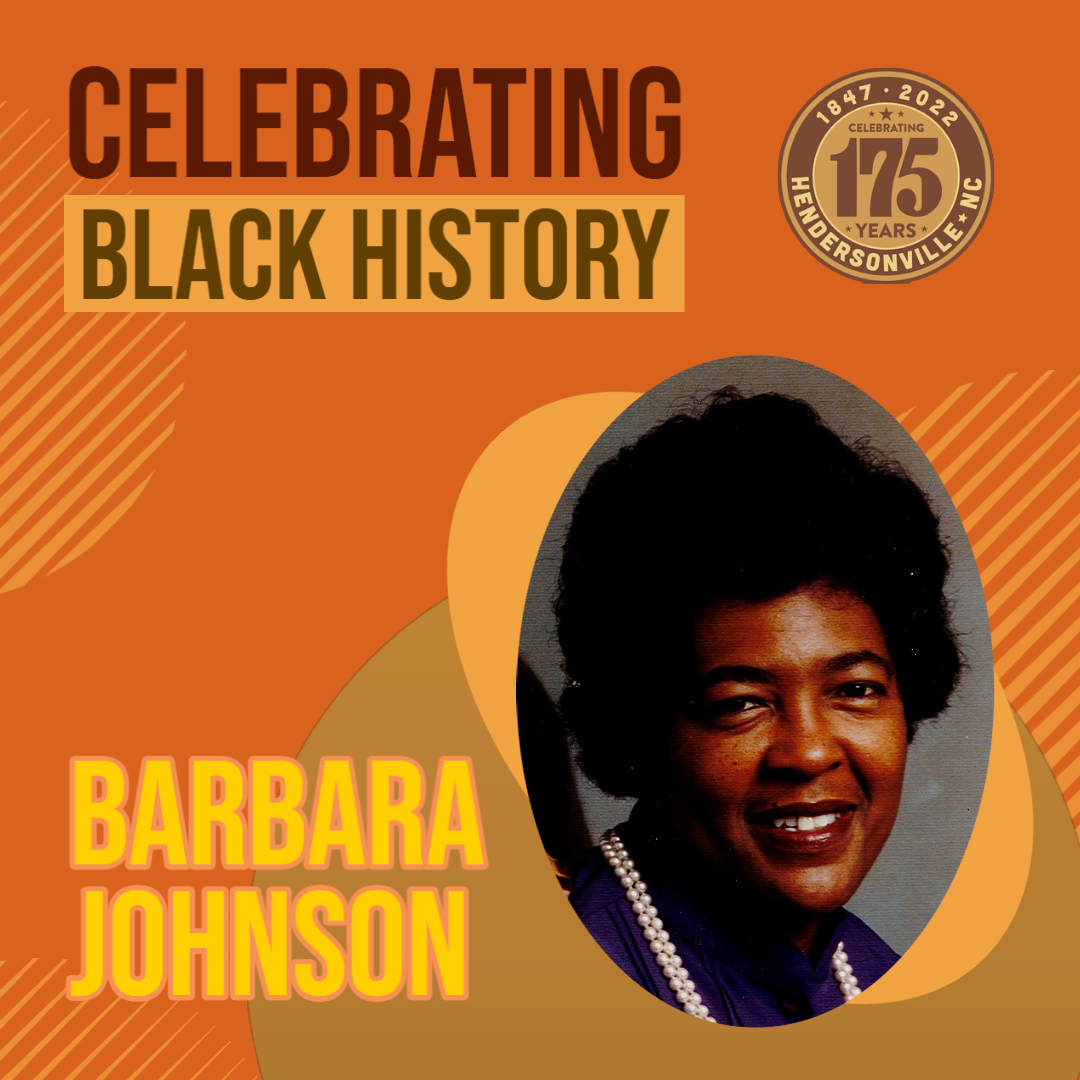
Madeline Cunningham Royes
Madeline Cunningham Royes attended Ninth Avenue School. Madeline Royes has always played an active role in the community. Over the years she has delivered food to people in need through the Council on Aging’s Meals on Wheels program, worked with the League of Women Voters, has been active in the American Association of Retired Persons (AARP), the Carnation Club, Church Women United, Democratic Women of Henderson County, Union Grove Missionary Baptist Church, the Human Relations Council, and Western Carolina Community Action.
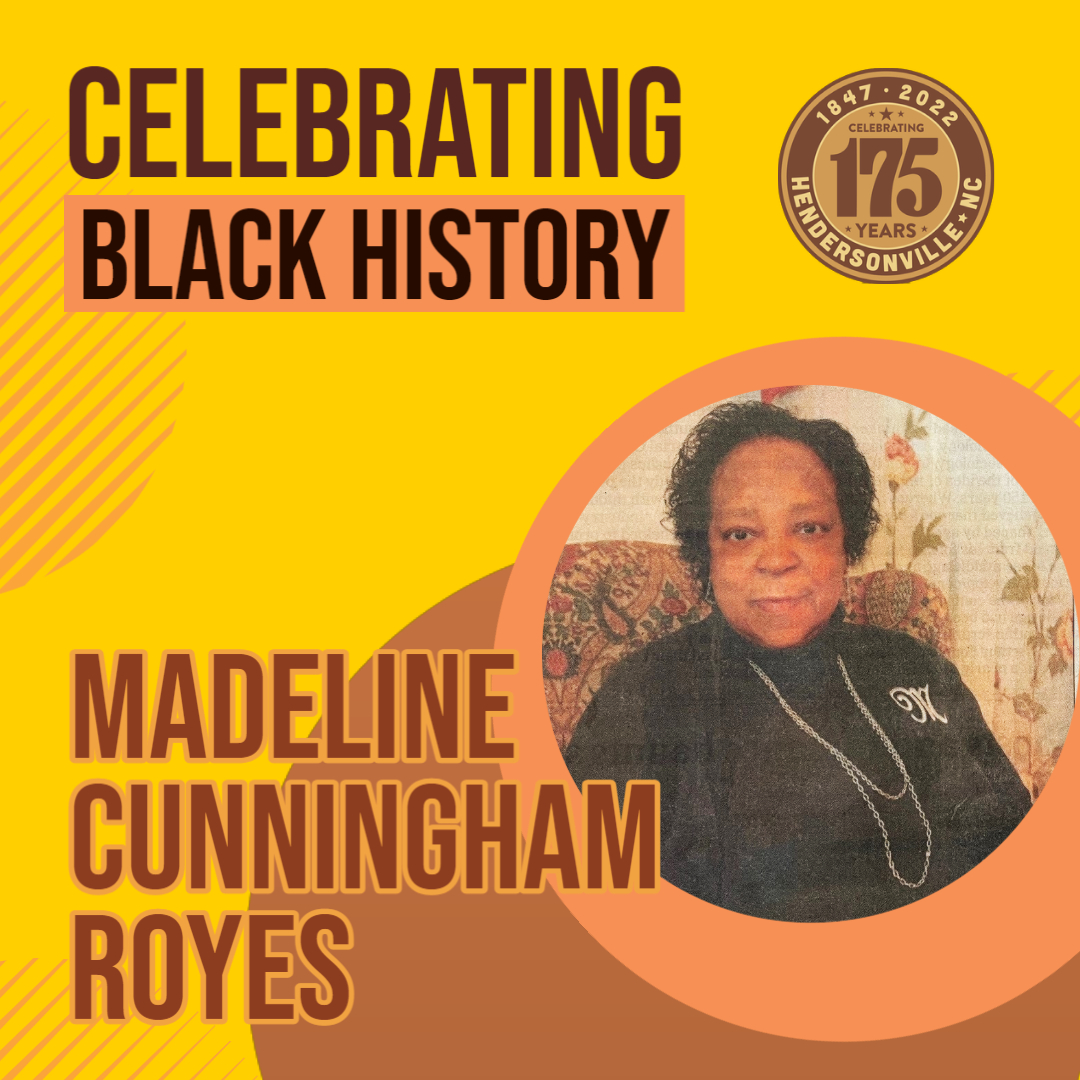
Rev. James Pea
Reverend James Pea was a 1961 graduate of Ninth Avenue School and received his associate’s degree from A-B Tech in Business Administration. He was employed by General Electric, retiring after more than 40 years of service. He was the first black supervisor in the plant’s history. He pastored for seven years at Contemporary First Missionary Baptist Church and retired in 2016. Earlier in his Christian walk, he founded the Gospel group The Golden Tones and The Gospel Testifiers and sang with The Sensationals. He was a man of many passions including being a barber, an avid bowler, fisherman, and golfer. In his later years, his greatest passion was harvesting apples and sharing them with friends and neighbors.
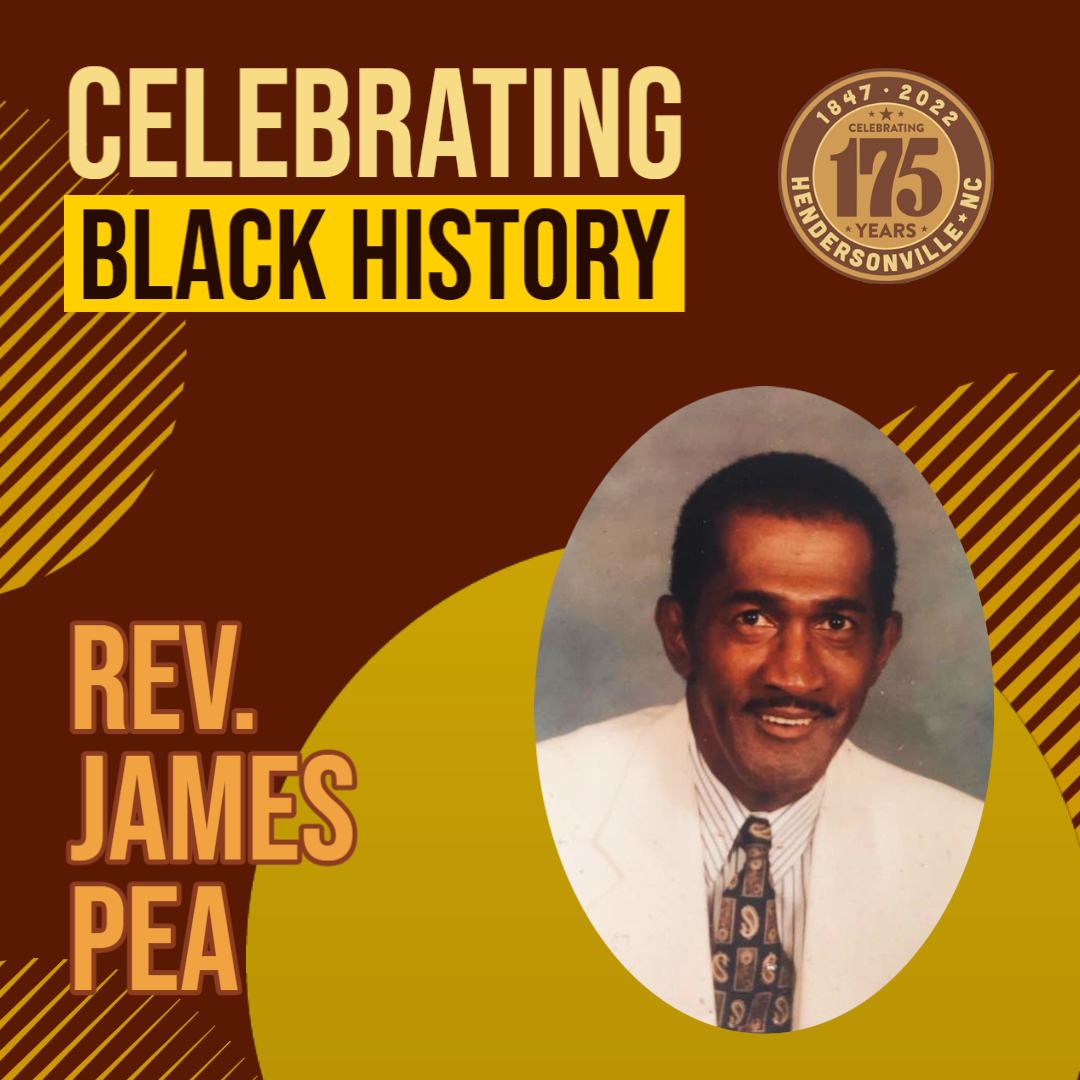
Kathleen Williams
Kathleen Featherstone Williams was a successful businesswoman. She graduated with honors from Stephens-Lee High School in Asheville and went on to the Stewarts Beauty School. She opened Kathleen's Beauty Shop in Hendersonville. Mrs. Williams brought a class action entitled “Williams and others against the Hendersonville City Board of Education.” Mrs. Williams served on the Education Committee of the Community Council. It would be this Committee that would eventually confront the Hendersonville School Board with a legal suit demanding desegregation of the public school system. She was active in many other organizations including Star of Bethel Baptist Church, the League of Women Voters, NAACP, and the Henderson County YMCA.

Rev. Naomi Omega Sitton Bynum
Reverend Naomi Omega Sitton Bynum was one of nine children of the late Elphel B. Sitton and Elma Geneva Bailey Sitton. She was a graduate of Ninth Avenue School and studied at Norfolk State University and Blue Ridge Community College. She graduated Magna Cum Laude at Shaw University in Raleigh, receiving degrees in early childhood education and elementary education. She retired after working 31 years in early childhood education from 1966 to 1997. Reverend Bynum was a life-long member of Union Grove Baptist Church, where she was highly active as an associate minister and many other roles. She was a founding member of the Harambee Committee, President of the Eastside Community Outreach Organization, and co-founder of the shadowing program at Hendersonville High School. She organized the first of the yearly Martin Luther King Jr. Memorial Marches, the Martin Luther King Jr. Mass Choir, and the Kwanzaa Celebration. She was a member of the NAACP, served on the resident board of Western Carolina Community Action, and was a member of the WCCA Board and board of Interfaith Assistance Ministries, LINK, Building Bridges, and Human Relations Council. She was the first recipient of the Martin Luther King Jr. Excellence Award in 2001, and recipient of numerous other certificates of merit and appreciation awards.
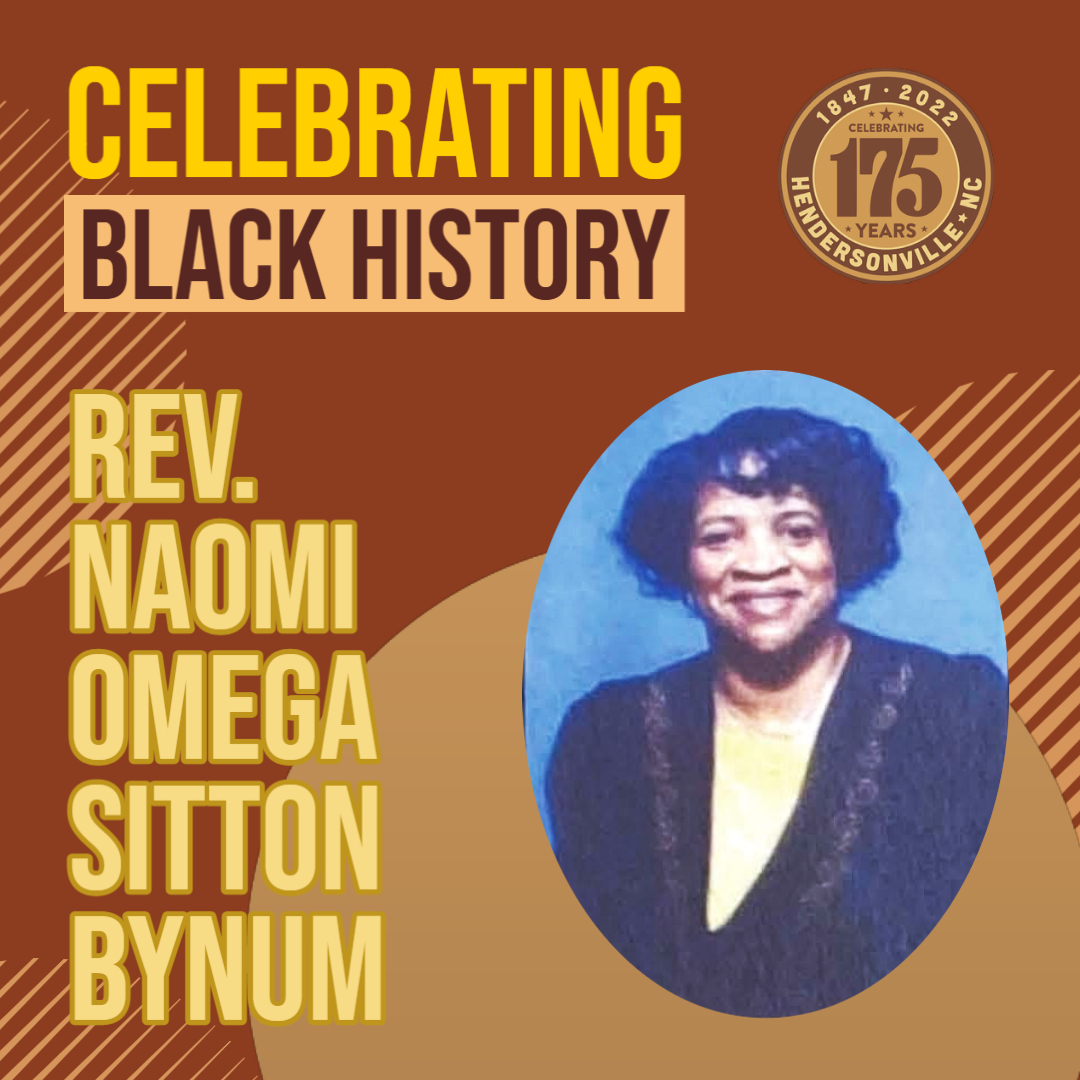
Rod Whiteside
Rod A. Whiteside was elected as Mayor of Fletcher in November 2017. He was Fletcher’s first black mayor and served one term. Whiteside holds a bachelor's degree in political science and public affairs from UNC Charlotte. Before serving as Mayor, he served on the Parks and Recreation advisory board. Photo provided by the Town of Fletcher

Shirley Jackson Davidson
Shirley Jackson Davidson was raised by her Aunt and Guardian Eva Whiteside after the death of her mother Rosa Mary King. She was a 1963 graduate of Ninth Avenue High School and went on to attend Fayetteville State College and the National School of Business in Nashville, Tennessee. She attended Blue Ridge Technical School where she got a Certificate in Blue Printing. She was one of seven Black people that were employed by Kellwood Manufacturing in the mid-sixties, then went on to work at General Electric for 28 years. After her retirement, she became active in Church Women United of Henderson County as their treasurer and was recognized as a Valiant Woman. She served as treasurer of the Democratic Women of Henderson County and received the Star Award followed by receiving the Community Service Award from the Asheville Chapter of Zeta Phi Beta Sorority. She also served on the Human Relation Council where she rotated to the Martin Luther King Jr. Committee, Past Matron of Diamond Circle # 263 OES/PHA, and member of St. Paul Tabernacle AME Zion Church of the Great Hendersonville District of the Blue Ridge Conference, Piedmont Episcopal District, and a Young Adult Missionary Society Coordinator of the Hendersonville District Women’s Home & Overseas Missionary Society. Shirley, along with Doris Young and Diane Washington, organized a July 4 Fest at the Green Meadows Basketball Court in 1994 where Billy Haywood and Joe Smith performed at the festival.
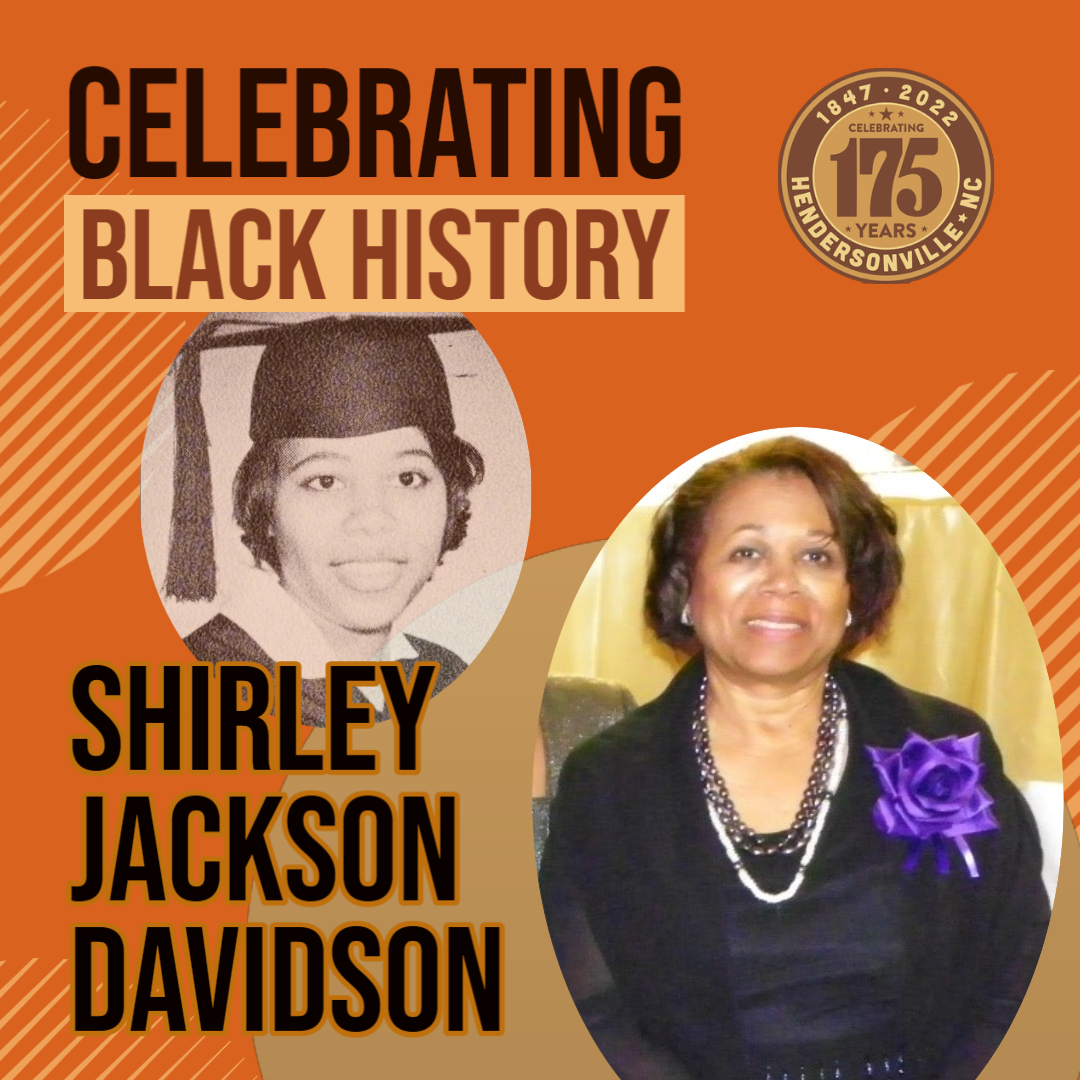
Frank and Harry Wilson Jr.
Frank and Harry were raised in Hendersonville in the 1940s. After graduating from Ninth Avenue School in 1962-63, both Frank and Harry went to North Carolina A&T in 1963. While attending this prestigious HBCU (Historically Black Colleges and Universities) they both participated in the sit-ins taking place at Woolworths in downtown Greensboro. They got to know the Rev. Jesse Jackson, even being arrested with him while protesting during this turbulent time in American history. After two years of being on the Dean’s and Chancellor's list, both were drafted to fight the war in Vietnam. Frank was part of the Army Ranger family, and Harry earned the rank of Army Corporal. Both men stayed active until they were both honorably discharged in the early 1970s. After the service, Frank had a variety of jobs, but most of this period of his life he was a truck driver. In the late 1990s, he began substitute teaching in Henderson County and fell in love with teaching. He finished his bachelor’s and earned his master’s degree in education and went on to teach history at the old Ninth Avenue School, which after integration became Hendersonville Junior High and now is Hendersonville Middle School. He ended up teaching for 19 years from 2000 until his death in 2019 at the age of 75. Harry and his wife of 58 years, Lila Wilson, settled down in Peacock town (1st Ave West). Harry spent his entire life working at plants in Henderson and Buncombe Counties. He worked at Wilson Art, Berkeley Mills, and Print Pack until around 2005. His loving and supportive wife Lila worked at Berkeley Mills for 37 years.
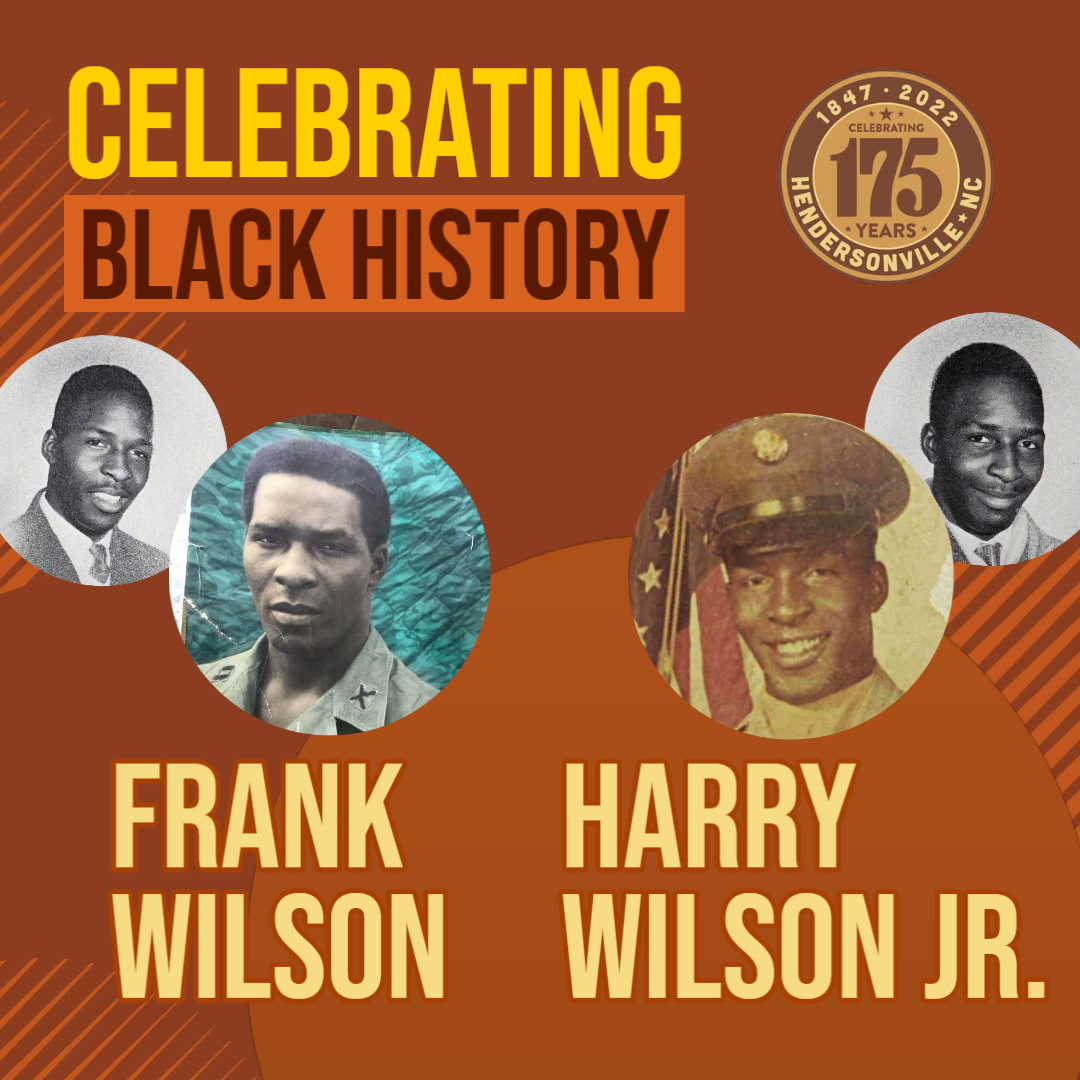
Cora Young
Cora Young was married to the late Johnny Young Sr. and is the mother of three children. She was active in the Union Grove Baptist Church serving as a Sunday School Teacher for 30 years in the primary division. Mrs. Young was an original member of the Silver Stars Gospel group in the late 1950s and early 1960s. This group was the first Black group to sing on WHKP. She continued to sing with the gospel group, the Choralettes, throughout the 1960s. Her interest in children led her to start a pre-school at Union Grove Baptist Church which she called Play and Learn. Play and Learn offered the children of the Brooklyn Community a place to go, to play and learn. Cora was instrumental in the oral history project that assisted in the creation of the book “A Brief History of the Black Presence in Henderson County”. Cora is pictured with her husband, Johnny Young Sr.
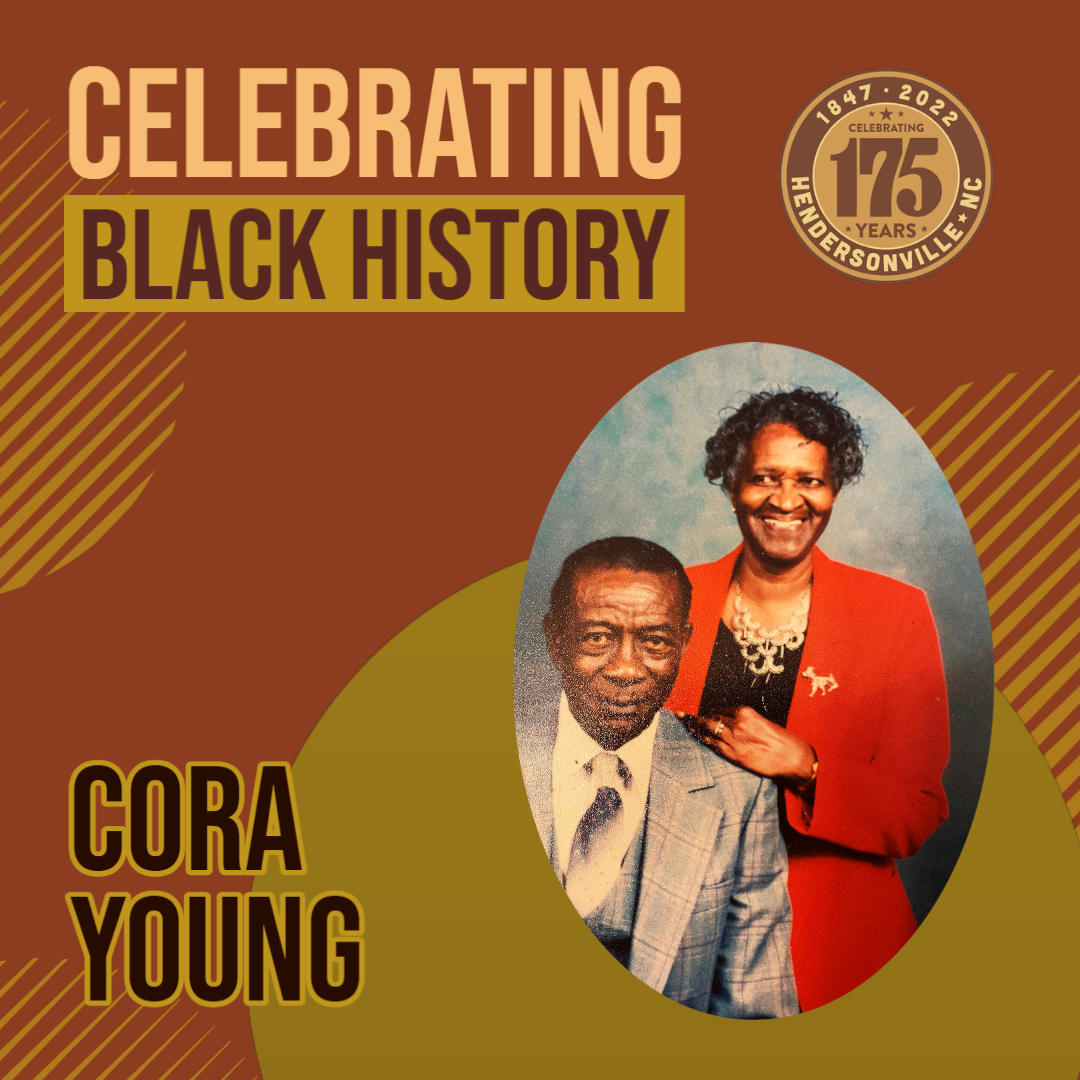
Rev. Henry Marsh
Reverend Henry Marsh served as pastor of St. Paul Tabernacle A.M.E. Zion Church. He served on the Hendersonville School Board and on several community organizations. He was instrumental on the Community Council always giving a voice to the needs of the Black community in Henderson County. His ministry and leadership in the community was supported by his wife. Photo - A Brief History of The Black Presence in Henderson County

Wanda Horne
Wanda Horne’s family are long-standing members at Mud Creek Missionary Baptist Church. She helps preserve the church’s heritage and history for future generations. Her great-great-grandparents were the first slaves to be married at St. John in the Wilderness at Flat Rock and early members of Mud Creek Missionary Baptist. Wanda worked for many years as a seamstress for Bon-Worth in Hendersonville.
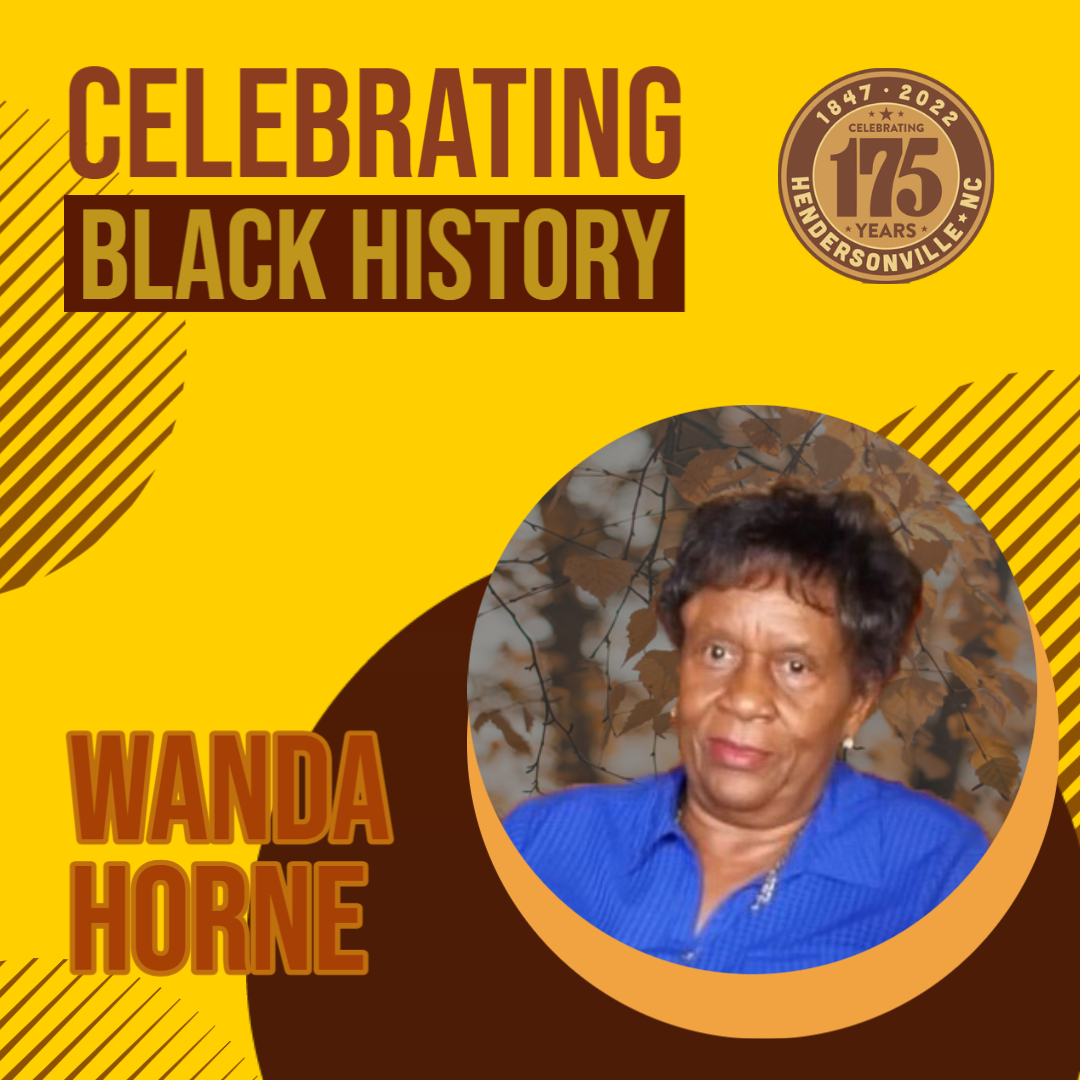
Luretta Cunningham Briggs
Luretta Cunningham Briggs attended Ninth Avenue High School and graduated as Valedictorian of her class in 1962. She married Donald Frederick Briggs of Asheville in July 1963 and moved to Washington, D.C. where she was employed at the Chesapeake and Potomac Telephone Company. She returned to Hendersonville while her husband served in Vietnam and became the first Black telephone operator for Southern Bell in Hendersonville. Following years at Camp Lejeune, Luretta along with her husband and children, Anthony, Teresa, and Andre, moved back to Hendersonville and she began a career with Duke Power Company. She held the position of Supervisor of Customer Accounts and Services with Duke Power Company until retirement. Luretta was the first Black female to run for a seat on the Hendersonville City Council in 1985. She was an active member of Greater Mt. Zion Church located in Fletcher, NC.

Miles Campbell
Miles Campbell was a local Black photographer that chronicled the black experience in Henderson County from the 1940s to his death. His photographs are depicted in the book “A Brief History of the Black Presence in Henderson County.”
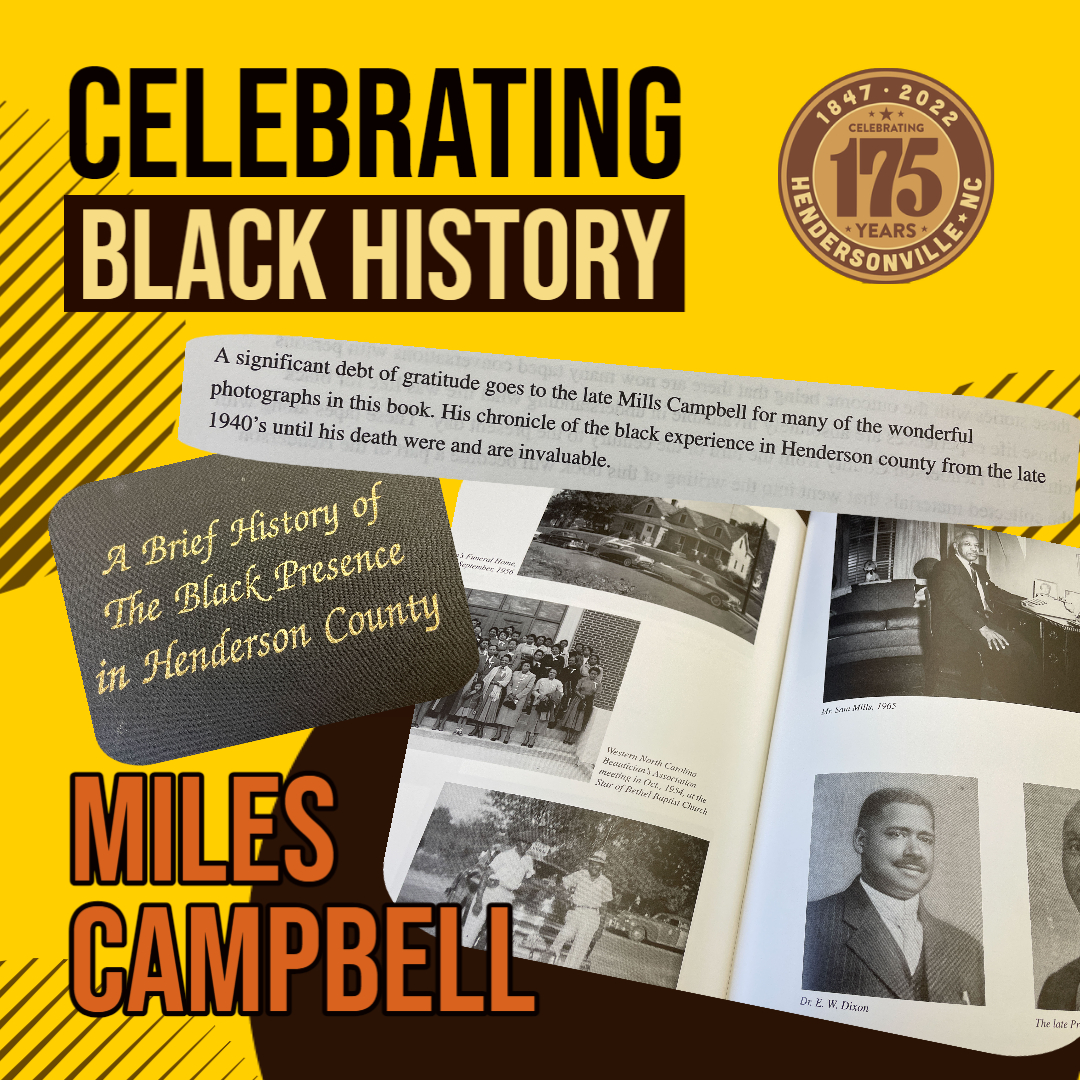
Cora Robinson
Cora Featherstone Robinson worked at Pardee Hospital for 33 years as a Licensed Practical Nurse (LPN) in the intensive care unit. Cora made a lasting impression on the doctors and nurses. She always had a smile and a caring word to everyone. After retiring in 1997 she continued to care for others working as a private duty nurse. In 2018 she returned to Pardee as a Cardiac Rehab Assistant. She finally retired in 2015. She made an unforgettable impression on all she came in contact with.

Jessie Jenkins Wilson
Jessie Jenkins Wilson was born to Ruth Carson Jenkins and Wiley Jenkins. She attended Ninth Avenue School and was valedictorian of the last graduating class from the school. She attended North Carolina A&T State University for two years before graduating from Phillip’s Business College in Columbus Georgia, in 1968. She continued her education at Columbus College, receiving a BBA degree in accounting in 1982. Upon her return to Hendersonville, she served as the first Black Chief Accountant for the City of Hendersonville. She was also active in the NAACP, Christian Business and Professional Women’s Club, and Star Bethel Baptist Church. Jessie played an important part in preserving the history of the Sixth and Ninth Avenue schools. She served on the Sixth and Ninth Avenue Alumni Committee with Raymond Coleman, Billy Dean Cox, Randy McMinn, Wilhelmina Robinson-Mills, Mildred Hopper-Mooney, Madeline Cunningham-Royes, and Frank Wilson. Jessie has received many awards and recognition from School Superintendents, former Mayor Newman, and other local leaders for her work in preserving local history. She is proud of all that has been accomplished by students of the Sixth and Ninth Avenue schools in spite of the challenges they faced: “Even though we received second-hand books, equipment, and supplies – we excelled.” Images: Photos provided by Jessie Jenkins Wilson. Former Mayor Newman recognizing Ms. Wilson; Photographed with activist and member of the Greensboro Four Franklin McCain and former BRCC President Dr. David Sink Jr at a lavish reception held following the MLK breakfast; Speaking at the unveiling ceremony for the Sixth and Ninth Avenue Schools Tiger Monument on Main Street

Cary Booker
Hendersonville native Cary A. Booker was born on December 10, 1936. He was raised by his mother, Jessie Lucille Booker, and a large extended family in Hendersonville. Cary attended North Carolina Central College in Durham and obtained a degree in business. He served in the Army and then moved to Washington D.C. and later New Jersey and Georgia. He spent most of his professional career at IBM and was happily married to Carolyn Booker for 49 years. The Bookers were among the first Black executives for IBM. When they moved to New Jersey in 1969, the Bookers encountered a practice called ‘real estate steering’ and were denied housing because of the color of their skin. They took their case to the Fair Housing Council and were eventually able to purchase a home. Cary Booker is the father of John Taylor, Cary Booker II, and Cory Booker. Cory Booker is a United States Senator and former mayor of Newark who often credits his father with being a principal reason for him entering public service. Photo: Cary II, Cary, Cory and Carolyn from forevermissed.com and Tiger Yearbook 1955
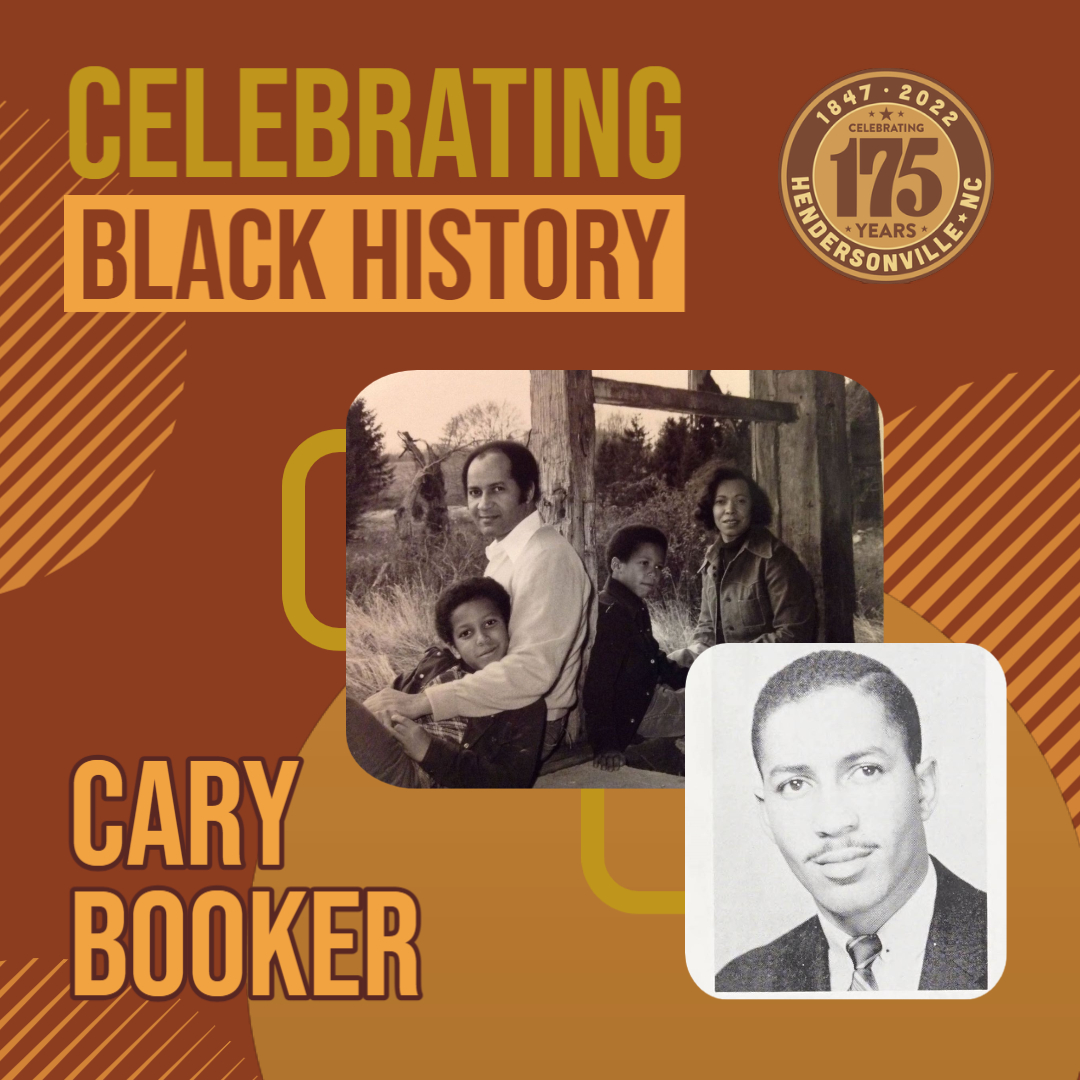
Henry Simmons
Henry Simmons was born in 1867 in the East Flat Rock area. As a young man, Henry saw a need to support his community both financially and spiritually. In 1885, he assumed the duties of president of the Society of Necessity. The Society of Necessity was widely recognized as a community charity. He served as president until he died in 1949. The Society of Necessity provided short-term loans to help people to make it through the long winter months. The Society was also instrumental in helping families find affordable places to bury family members. The Society of Necessity was just the beginning of a long life of service for Henry. He served as legal counselor for many members of Mud Creek Baptist Church and was instrumental in buying and selling land to other Black families in the Mine Gap Road area. Photo: blackhistories.org - Henry Simmons, President of the Society of Necessity, Courtesy of Hortence Potts
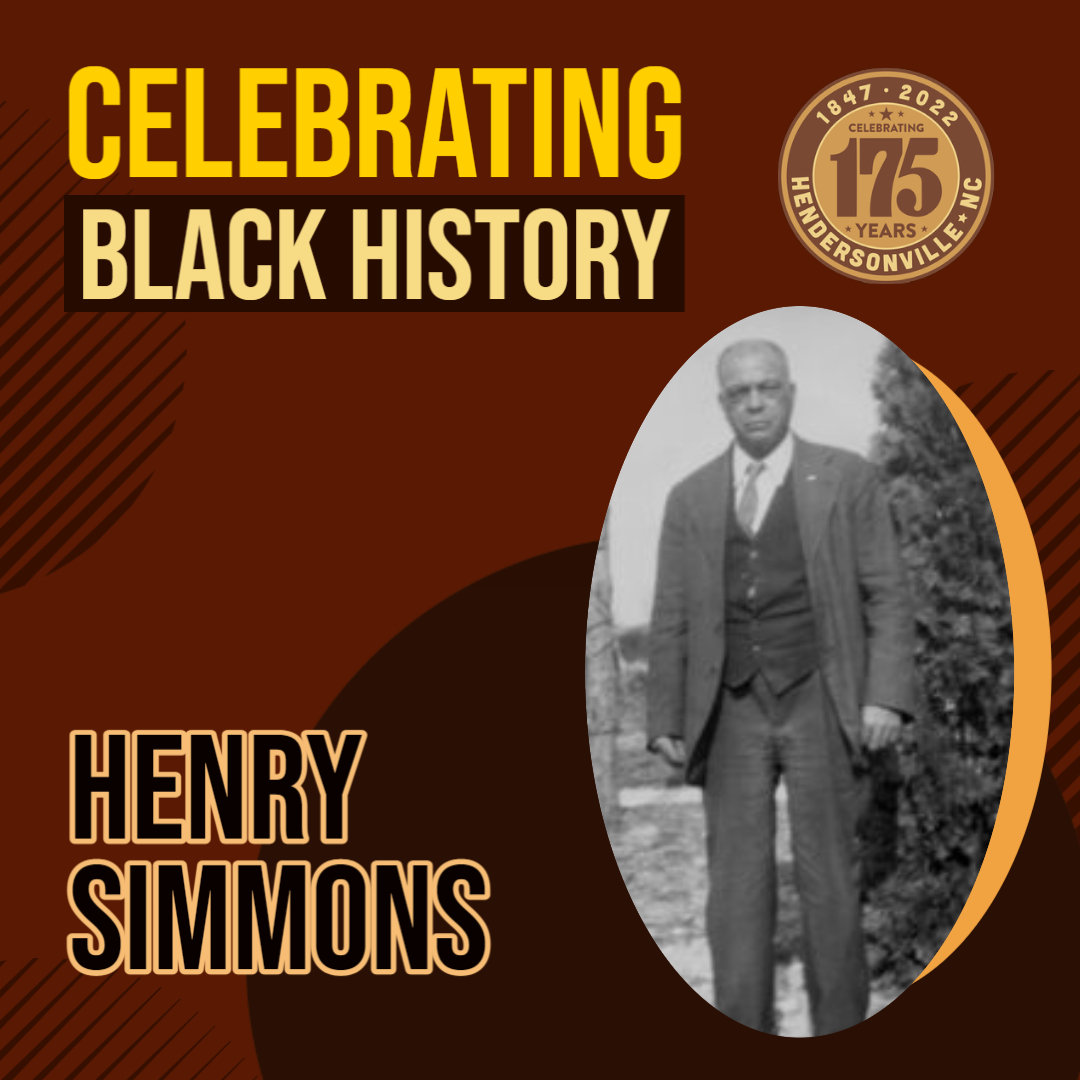
Eva Owens Austin
Eva Owens Austin graduated from Ninth Avenue School. She was employed at Pardee Hospital as a lab technician.
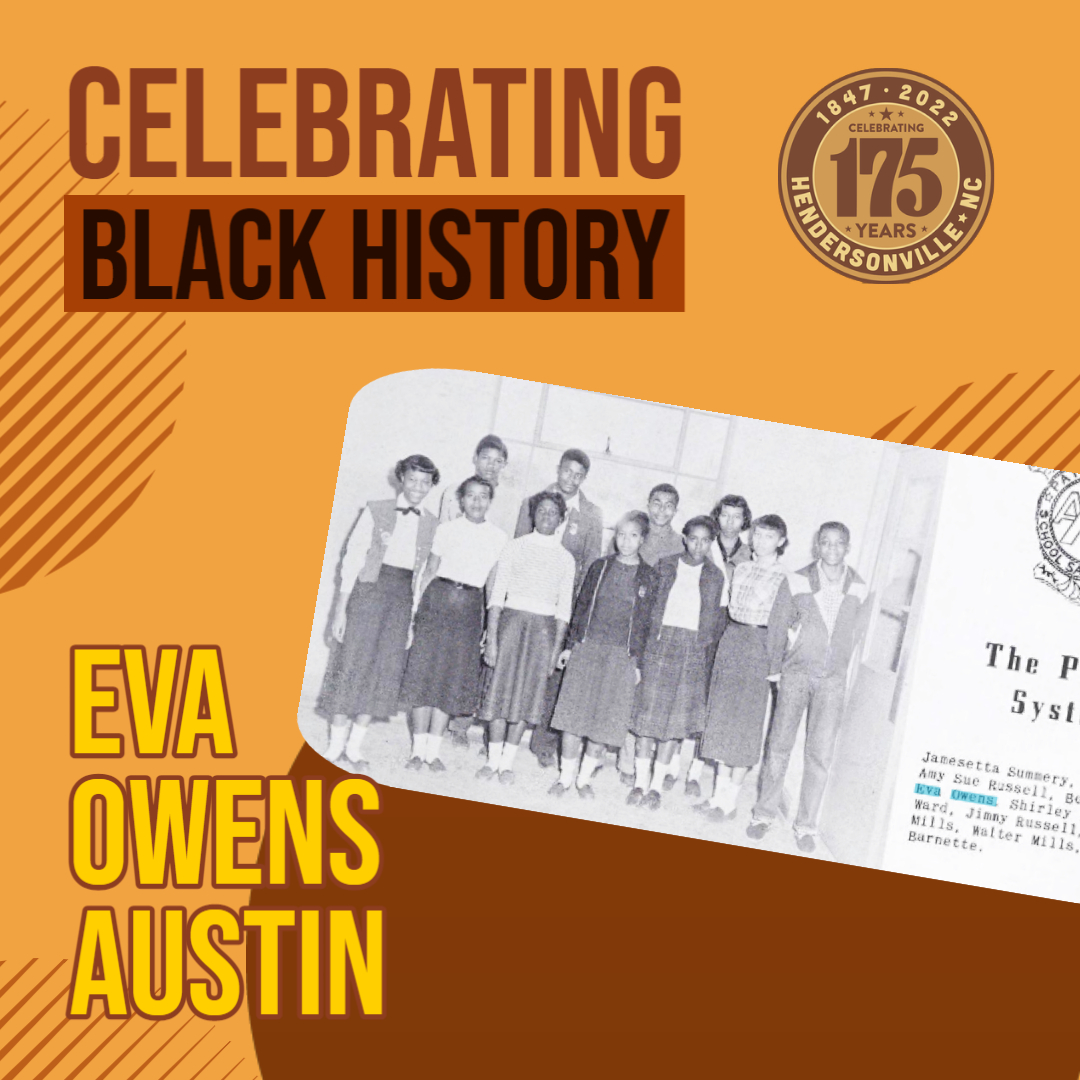
Johnny Young Jr.
Johnny Young Jr. Is the son of Cora and Johnny Young. He is a veteran of the Army and a Vietnam veteran. He worked with the local VISTA program under the direction of WCCA and he was instrumental in organizing a transportation program for the community. He also established a craft organization for senior citizens in Henderson County. He supervised VISTA programs in Columbia, SC, and Denmark, SC. Following his career with VISTA, he went to work for McDonald’s Corporation working his way up from grill cook to store manager in Greenville, SC. He and his wife Ruth have four children: Jonathan, Kim, David, and Greg.
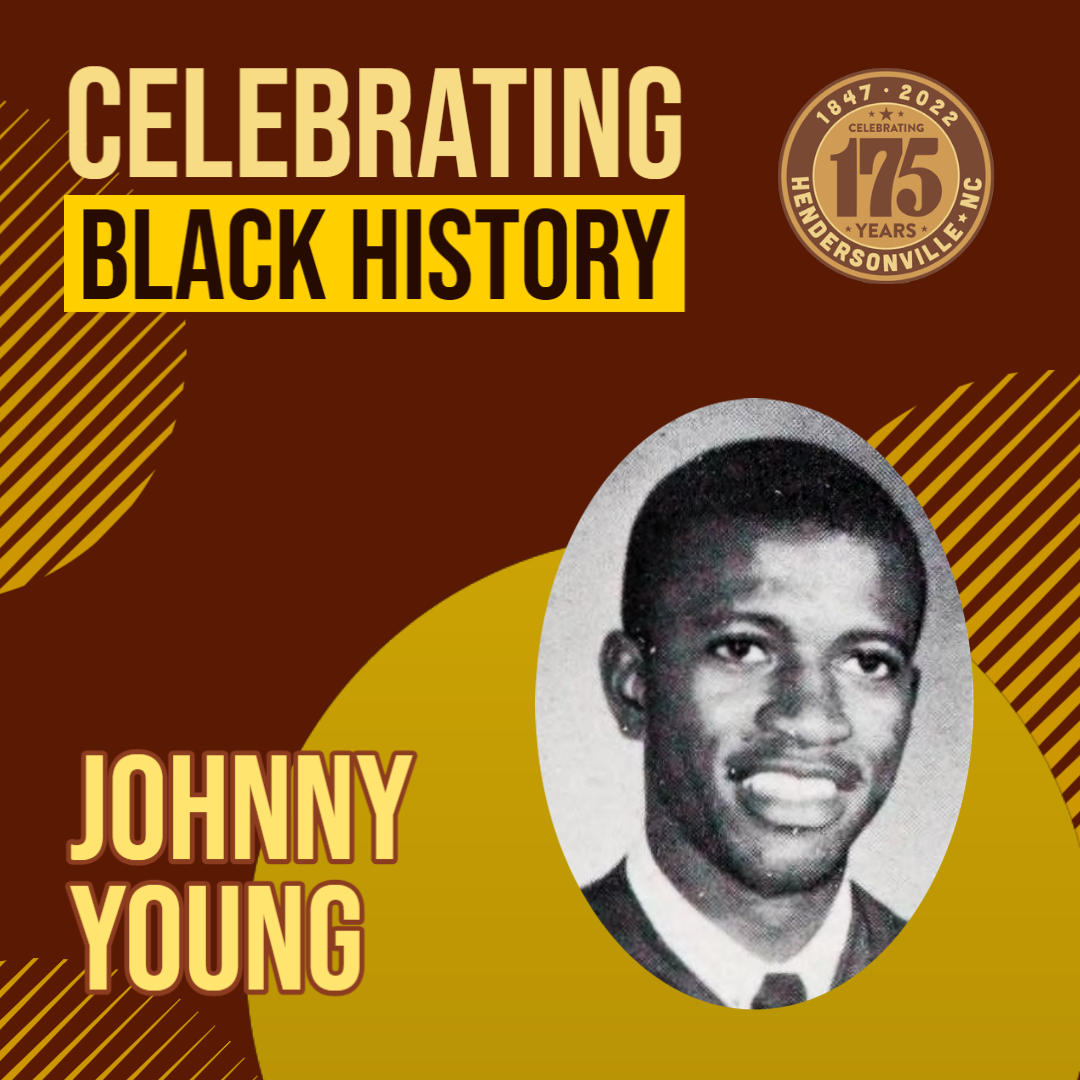
Lance Allen
Lance H. Allen was the son of Cress and Elizabeth Allen. He graduated from Ninth Avenue School and was drafted into the U.S. Army in 1965 and served as a drill sergeant. He began his career with Duke Energy in 1963 and over twenty years worked his way up from storeroom clerk to Operations Supervisor. He and his wife Roberta, who worked for Berkeley Mills, had two sons, Rodney and Kevin. Lance served on the Board of Directors for the Henderson County Dispute Settlement Center.

Hortense Potts
Hortense Potts was born in East Flat Rock to Fred and Ethel Potts. She attended Ninth Avenue School and received a bachelor’s degree from Bennett College and a master’s degree from Western Carolina University. She taught home economics for sixteen years in Rutherford County and was the first Black teacher at West Henderson High School where she taught special education. She was a member of the Society of Necessity, Alpha Kappa Alpha Sorority, and was a board member of the Dispute Settlement Committee. Photo of Hortense Potts appearing in Bold Life Magazine. Photo by Rimas Zailskas. https://www.boldlife.com/learning-from-the-past/
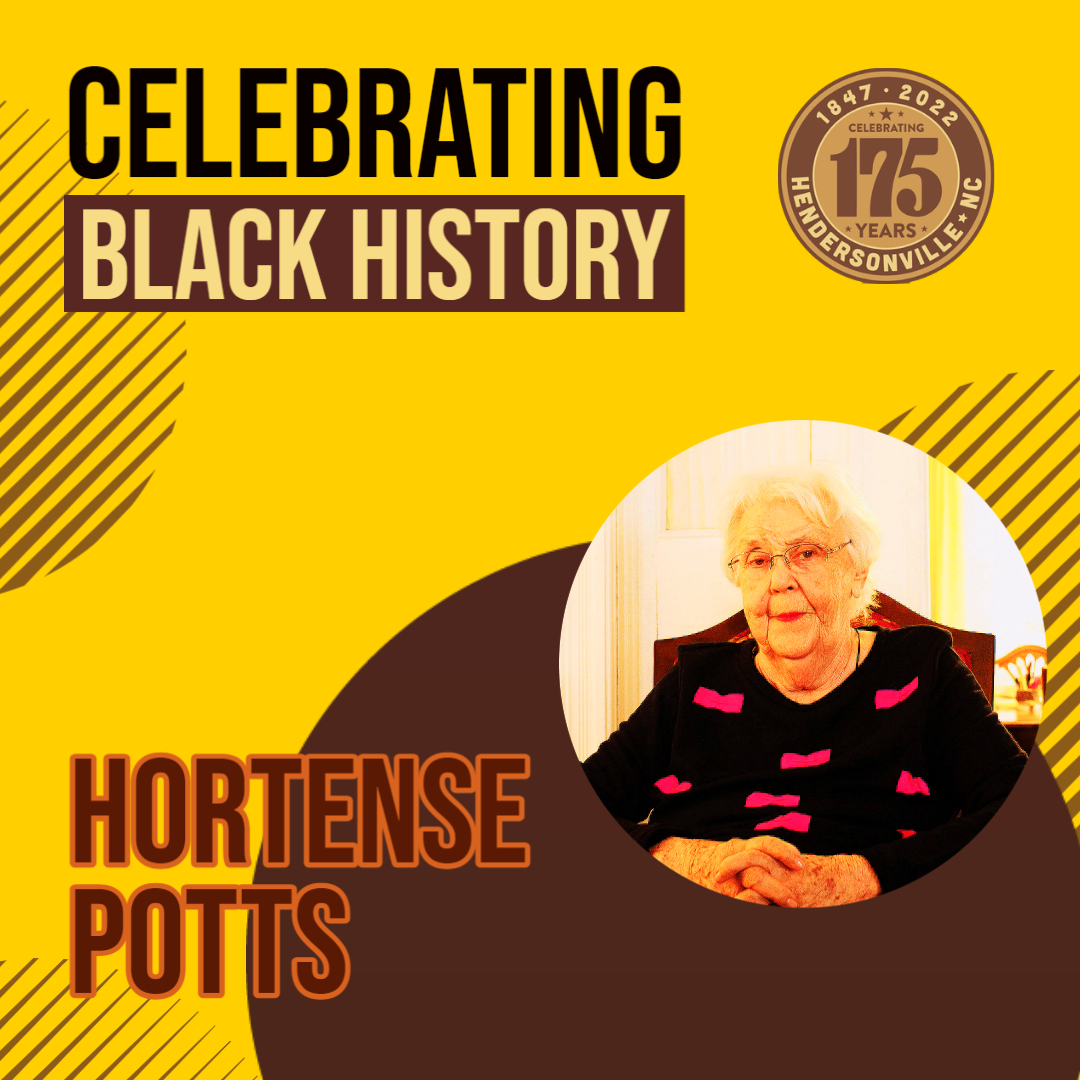
Callie Mae Green
Callie Mae Green was a native of Henderson County. She worked as a nurse at Margaret R. Pardee hospital.

Herbert Blake
Herbert Blake served as Hendersonville’s Chief of Police from 2008 to 2020. He holds a B.S. in Criminal Justice Administration from Park University and a Master's Degree in Management from Webster University. Prior to serving in Hendersonville, he was Police Chief in Loris, SC, and currently serves as the Chief Deputy at the Buncombe County Sheriff’s Office. During his tenure with HPD, Chief Blake implemented the police department’s body camera program to improve accountability and transparency. The motor bike unit and business district officer program were developed under his watch.
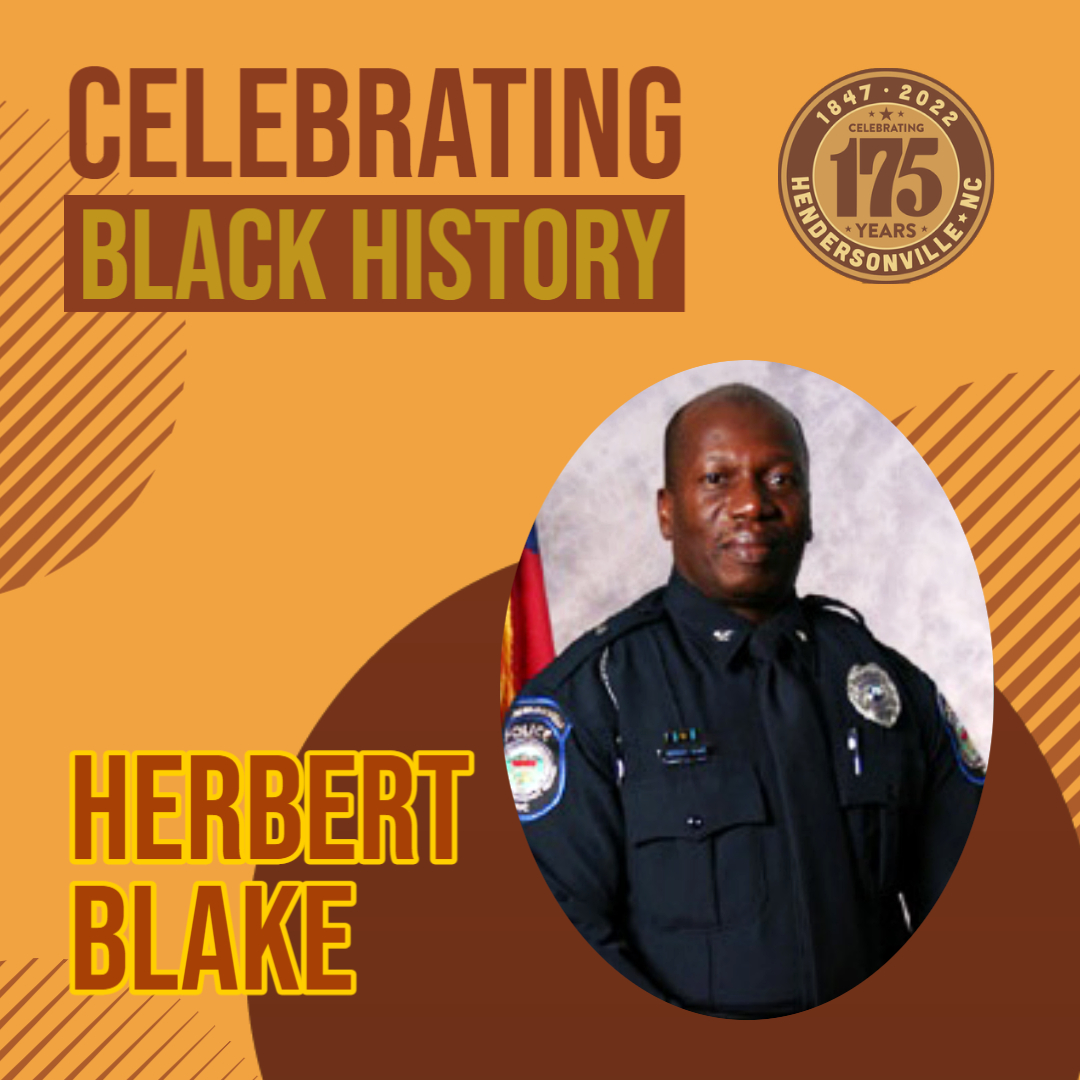
2021 Black History Month
The City of Hendersonville celebrated Black History Month on social media by celebrating local leaders who made or are making a difference in the community. There are many, many more champions beyond this list.
2021 Black History Month
Blair Craven
Blair Craven is a graduate of East Carolina University and a local financial advisor. He currently serves as the Chairman of the Henderson County School Board. Craven is described as having strong leadership skills and being highly respected by his peers and the community.
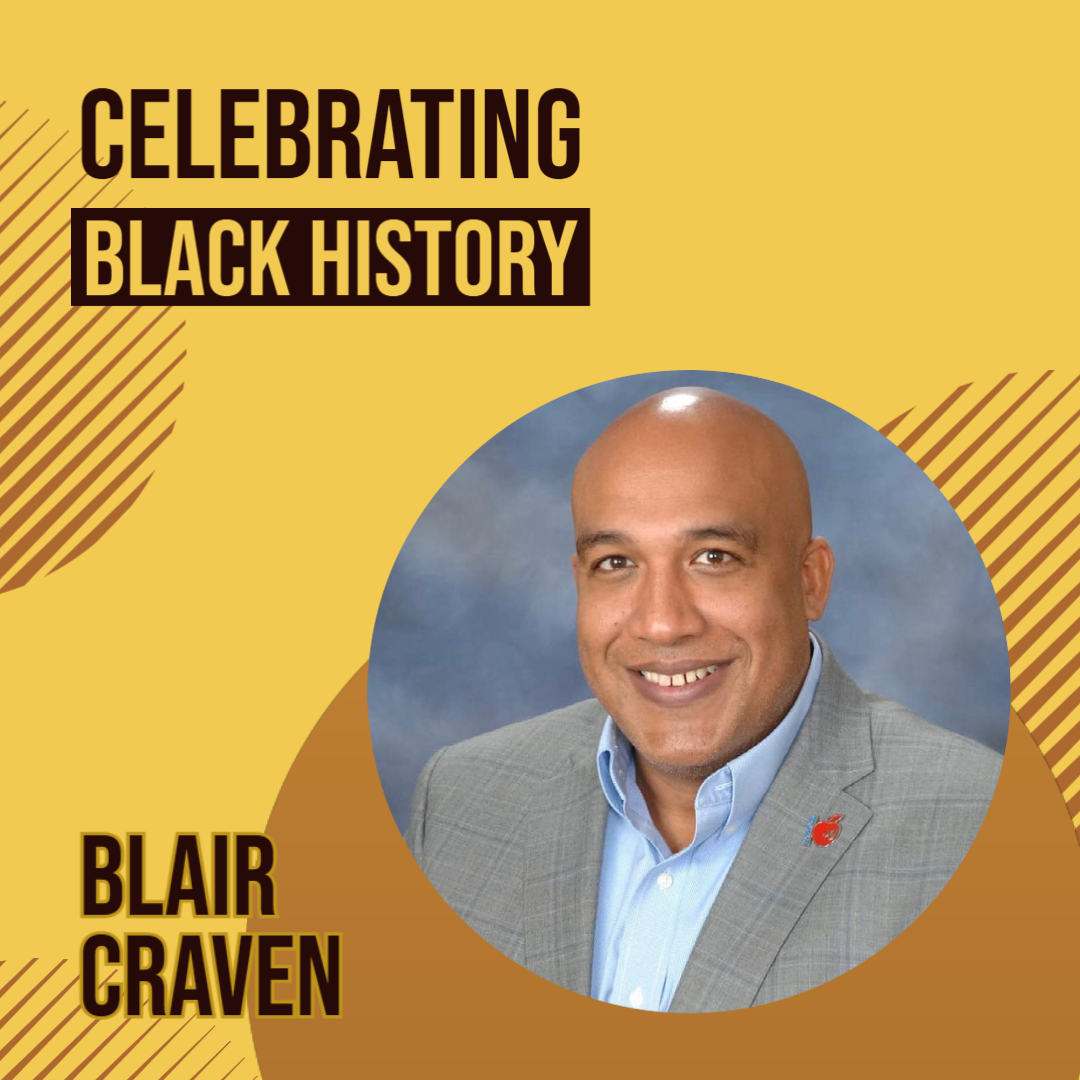
Melinda Lowrance
Melinda Lowrance, President of the Henderson County chapter of NAACP, business owner, and board member of IAM (Interfaith Assistance Ministry) among other titles has served our community faithfully for many years. She attended Ninth Avenue School as well as Hendersonville High School.
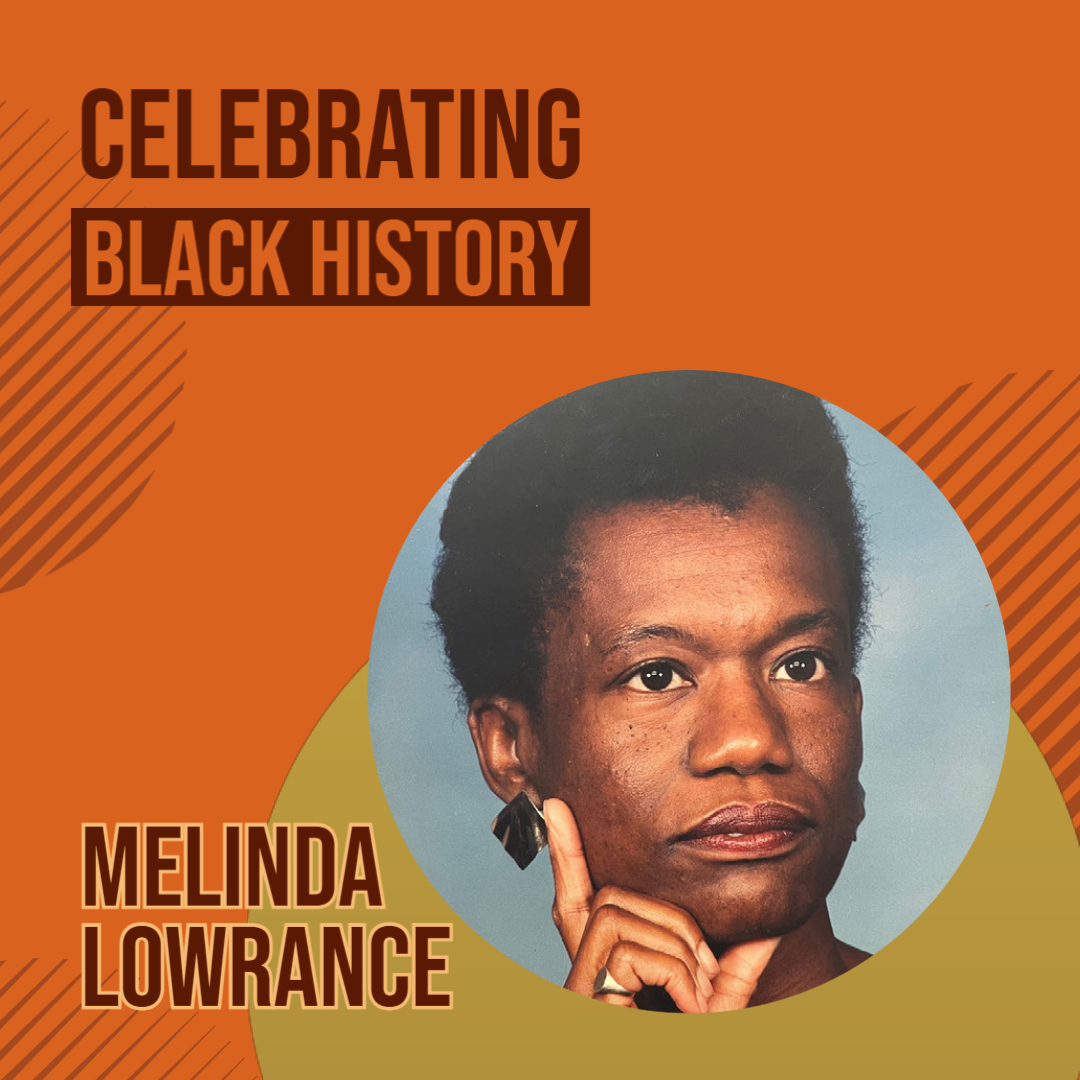
John Marable
John Marable was a teacher, coach, and principal at the Ninth Avenue High School serving from 1946 to 1959 as well as a School Board member from 1990 to 1996. He was a leader in two major educational transitions, the desegregation and the merger of county and city schools. He is described as a “pillar of strength during integration, seeking a quality education for all youth”. In 2003, Marable was inducted into the Education Hall of Fame by the Henderson County Education Foundation.

Preston Blakely
Preston Blakely is a graduate of the University of North Carolina at Greensboro and Western Carolina University. He is employed with his family’s business, a Town Councilman at the Town of Fletcher and serves on the Board of Directors for Henderson County Smart Start Partnership for Children and Thrive. In addition, he serves on the Executive Committee for Land of Sky Council of Governments.
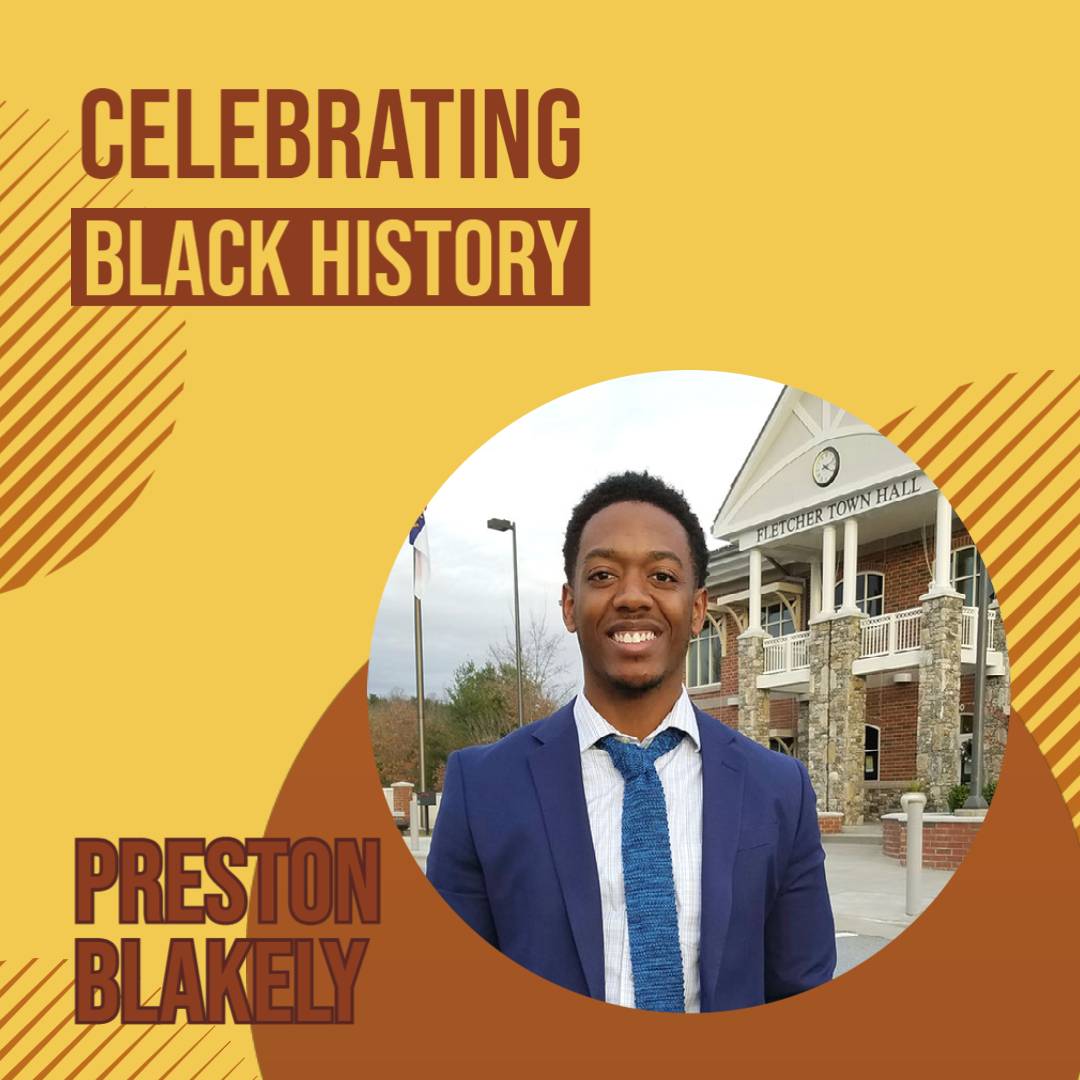
Dorothy Means
Dorothy Means had strong beginnings becoming the Valedictorian and youngest member of the Class of 1945 at the Ninth Avenue School. After graduation she enrolled in Livingstone College in Salisbury, N.C. and received her Bachelor of Arts degree in English and French. Later in life she obtained a Master of Science degree in Counseling and Guidance from Indiana University in Bloomington, IN. She was an English teacher and guidance counselor in Gary, IN for many years before retiring and returning to Hendersonville. She established the Lucile V. Means scholarship in her mother’s name to help African American graduates reach their goals to attain higher education.

Ronnie Pepper
Ronnie Pepper, a Hendersonville native and graduate of Hendersonville High School, is a predominant figure in the local community. He has served on several boards and organizations throughout his lifetime, including the American Red Cross, Hendersonville YMCA, Flat Rock Playhouse, Blue Ridge Community College, Hendersonville Housing Authority, and NAACP to name a few. Pepper works at the Henderson County Public Library and is an avid storyteller as well as educator, spending more than 25 years with the Head Start Program. He also worked with the Black History Research Committee of Henderson County and has served on the Walk of Fame committee.

Donnie Parks
Donnie Parks is a Hendersonville native, graduating from Hendersonville High School in 1974 as well as Southern Wesleyan University, Asheville-Buncombe Community College, and the 139th session of the FBI National Academy. Parks joined the Hendersonville Police Department in 1977 and became Acting Chief in August of 1987. He was officially appointed to the position of Chief in March of 1988. He served as Chief of Police for 20 years and retired in 2007. Colleagues describe Parks as “... one of the finest people anyone could ever come across.”
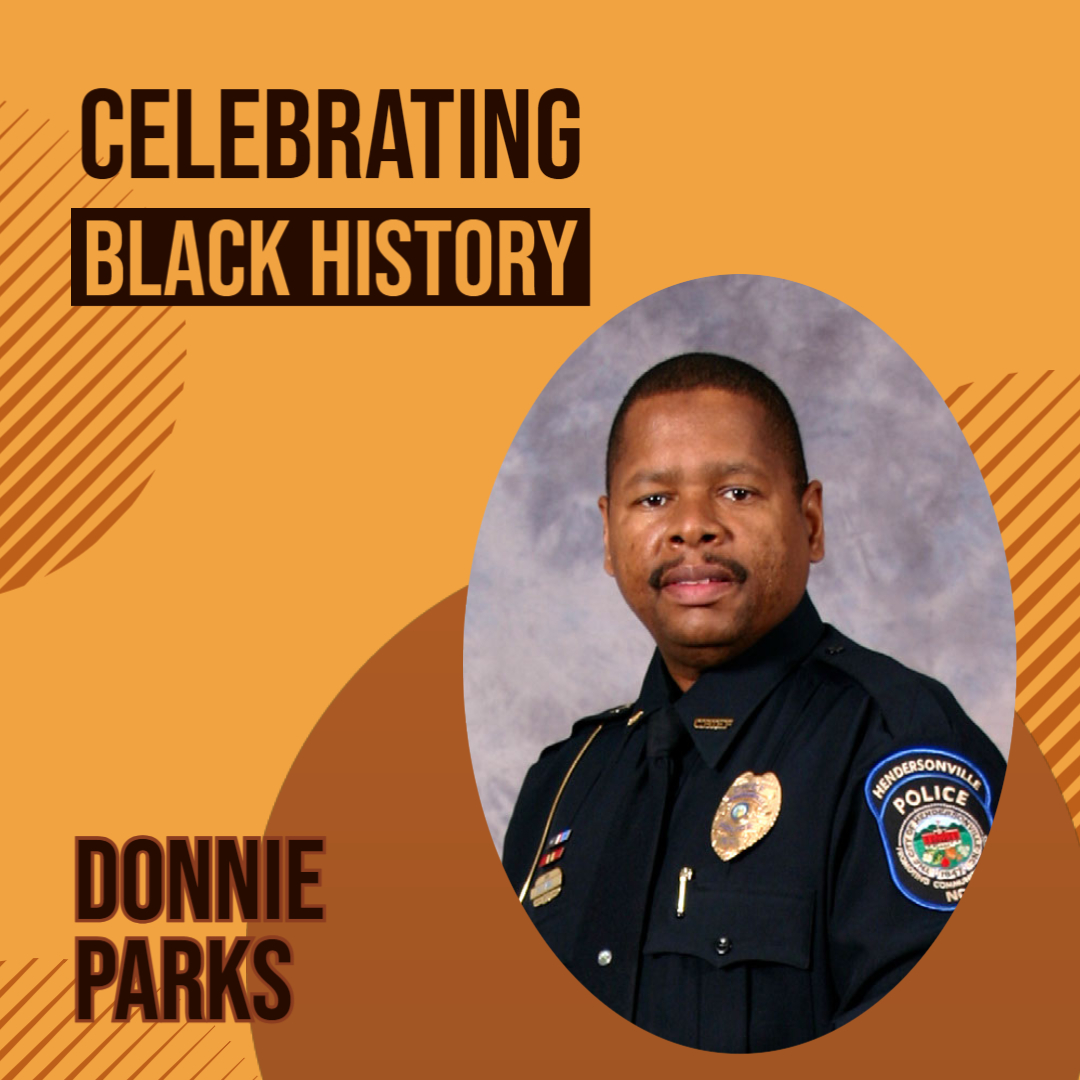
Betty, Eric, and Sam Gash
Betty Gash is a graduate of the Ninth Avenue School and the mother of Eric and Sam Gash. She served on the former Hendersonville City School Board and the boards of Henderson County Elections, Blue Ridge Community College and the Salvation Army. She is a member of the Diamond Circle, Chapter 263 of the Order of the Eastern Star and Worthy Matron.
Eric Gash is a graduate of the University of North Carolina at Chapel Hill where he played football. He has served in many capacities with Henderson County Public Schools including teacher, head coach, and Assistant Principal. In 2019, Eric was named Principal of Bruce Drysdale Elementary School. Eric is also the pastor at Speak Life Community Church and a chaplain with the Hendersonville Police Department.
Sam Gash attended Penn State University where he played football. He went on to play in the NFL for the New England Patriots, Buffalo Bills and Baltimore Ravens followed by an NFL coaching career. He is an avid financial supporter of Hendersonville High School athletics.
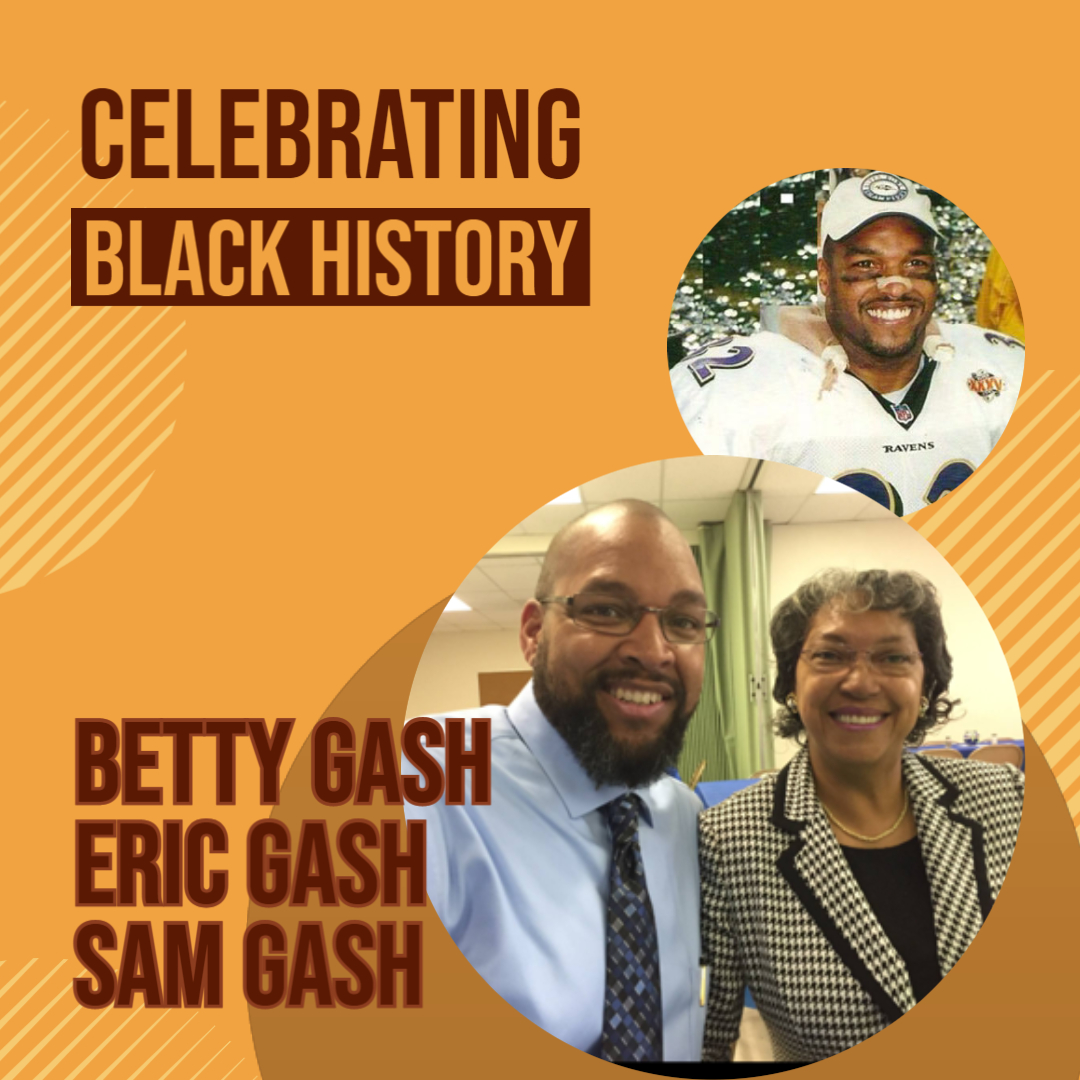
Diane Caldwell
Dianne Caldwell is a lifelong native and influential member of the Hendersonville community. She attended the Ninth Avenue School and is a champion of preserving local Black history. Caldwell was a founding organizer of Hendersonville’s Harambee festival. She served as a Hendersonville City Council Member as well as serving on non-profit boards in the area.
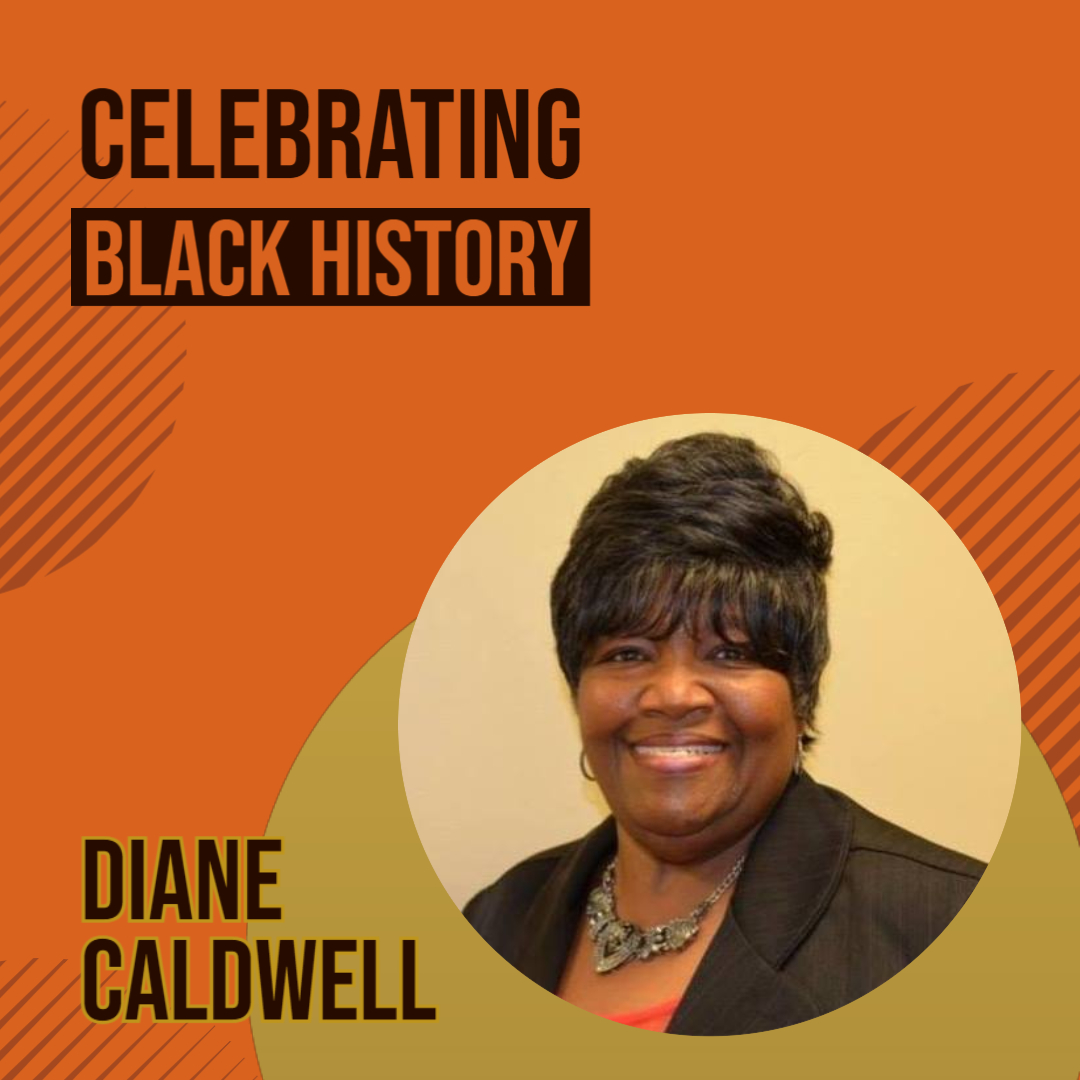
Sam Mills
Sam Mills was born to Caroline and Jess Mills and educated in the Hendersonville School system. His great grandparents were among the early settlers in the area. Mills ran for Hendersonville City Council in 1968. He did not win his first race but was elected in a later race and became the Vice-Mayor for the City. During his tenure, Mr. Mills worked to bring about the integration of schools during the Civil Rights Movement and led the Hendersonville Redevelopment Commission and the Urban Renewal Program.
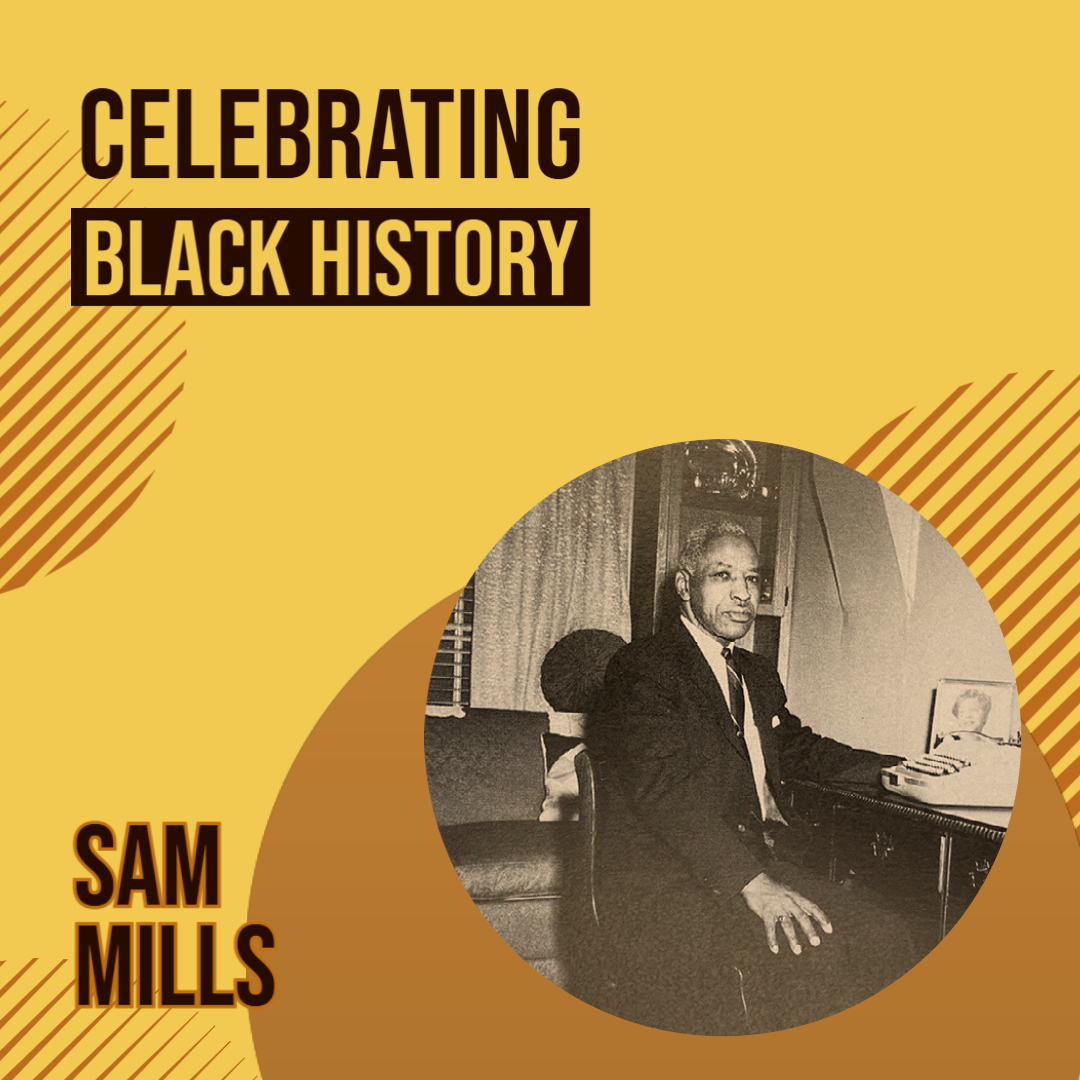
James Pilgrim Sr.
James Pilgrim was born in 1915 and was a graduate of Stephens-Lee High School in Asheville. Pilgrim worked several jobs in downtown Hendersonville before joining Thomas Shepherd’s Funeral Home. In 1934, Pilgrim founded Pilgrim’s Funeral Home which served the area for over 60 years. Pilgrim also was in the real estate business building homes and apartments as well as a deacon of the Star of Bethel Baptist Church. He was the national chaplain of the National Funeral Director and Mortuary Association and named “Man of the Year” by the National Organization in 1977.
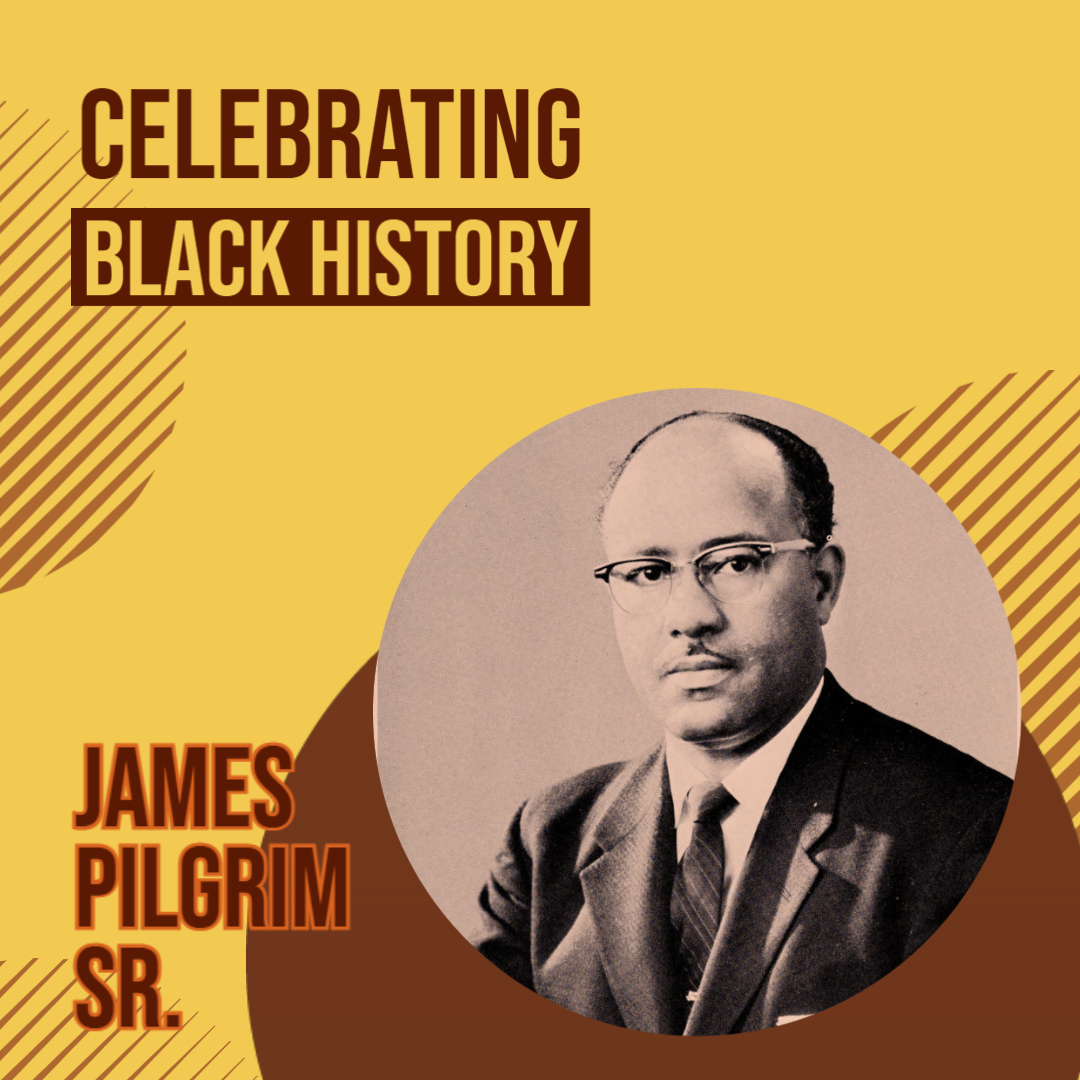
Roxanna Pepper
Roxanna Pepper is an Early Childhood Program Consultant at the Children and Family Resource Center. She has also served as a health and wellness instructor at the Hendersonville YMCA and as a teacher with the Head Start Program. Pepper has volunteered with the African American Cultural Committee, United Way, Hendersonville First Baptist Church, and Henderson County Partnership for Health. Roxanna is the recipient of the Athena Award and serves as a life coach.
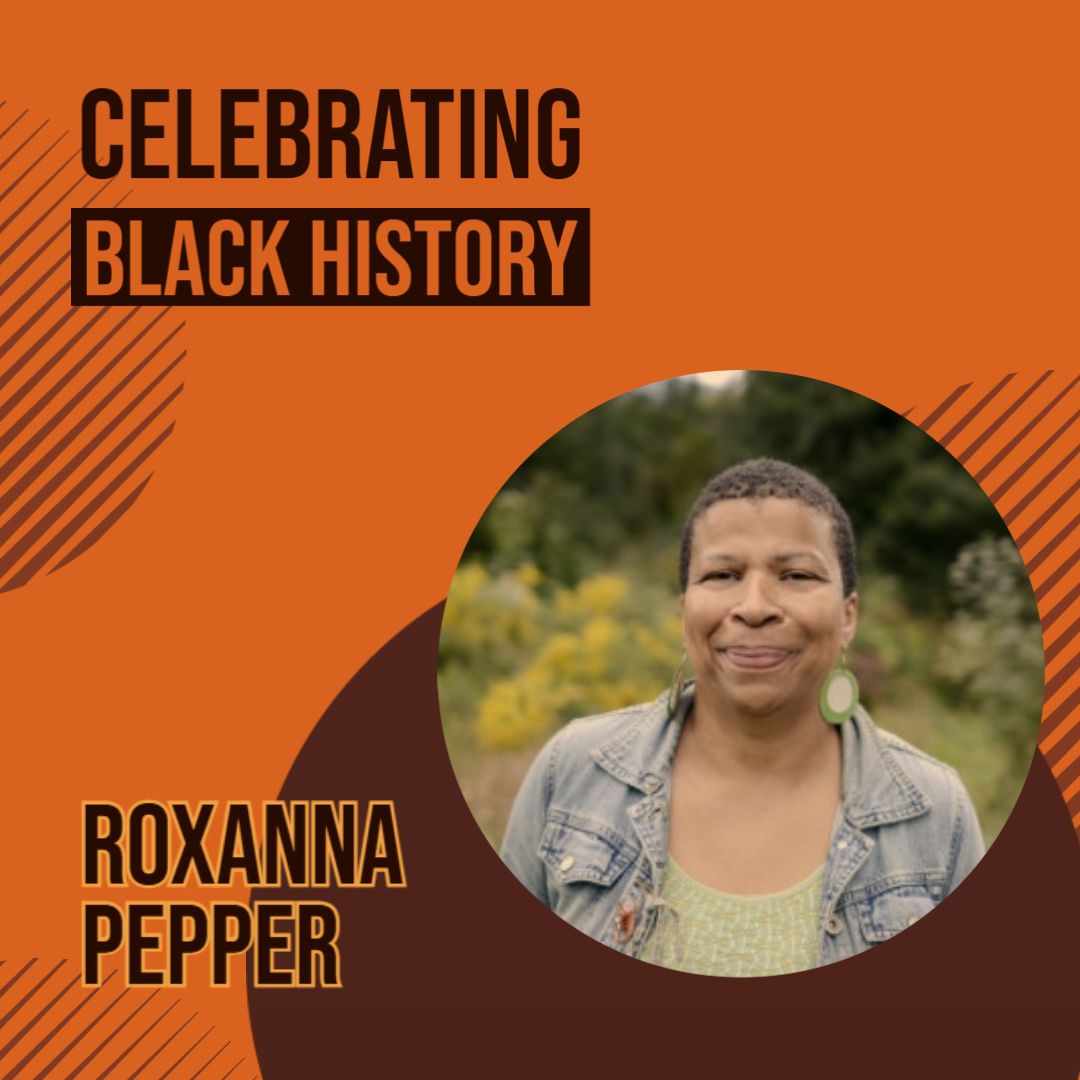
Rev. C.E. Rowe
Rev. C. E. Rowe is the pastor of Star of Bethel Baptist Church. Star of Bethel was organized in 1873 and is one of Henderson County’s historically black churches. Reverend Rowe also serves on the Community Foundation of Henderson County’s Board of Directors.
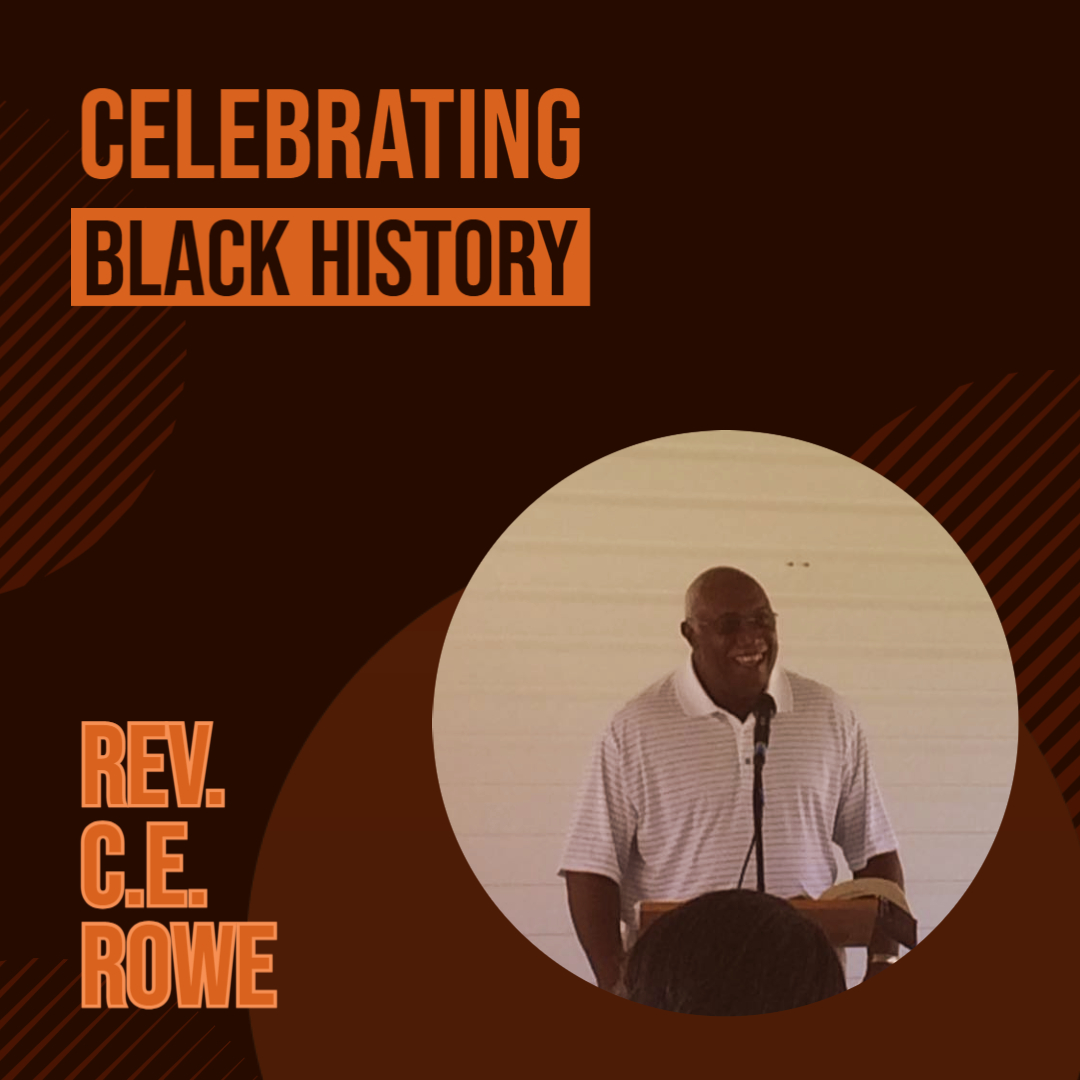
Johnny Landrum
Johnny Landrum played a vital role in the integration of the city’s schools. Landrum was a member of the Ninth Avenue School and Hendersonville City School Board of Education during the time of desegregation. He was also a WWII veteran wounded in action. He was honorably discharged and received the Purple Heart.

Odell Rouse
Odell Rouse taught first grade in the black school system from 1926 to 1965 and special education at Bruce Drysdale Elementary School until she retired in 1972. Her dedication to the welfare of students was highlighted when the Ninth Avenue School students dedicated the 1958 yearbook in her name. The students thanked Mrs. Rouse for her faithful years of teaching and the confidence she had in her students.
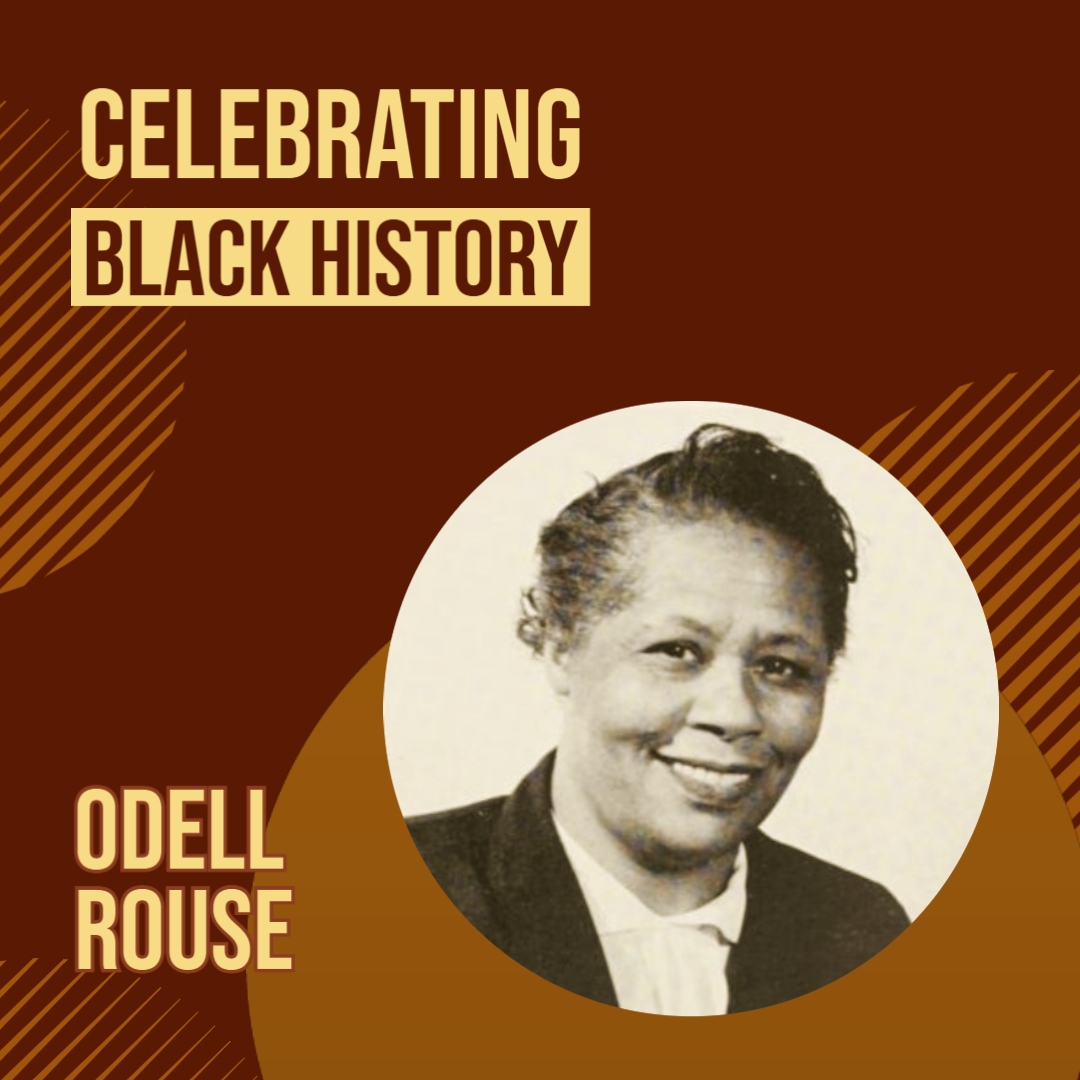
Hannah Edwards
Hannah Edwards was born in 1929 and is a native of Etowah, North Carolina. She taught in the Hendersonville School System from 1953 to 1964 at the former Ninth Avenue School, and from 1964 to 1990 at Hendersonville High School. Edwards was a member of the NAACP, Hall of Fame recipient (HHS), and 1997 Woman of The Year Award presented by her church, St. Paul Tabernacle AME Zion.
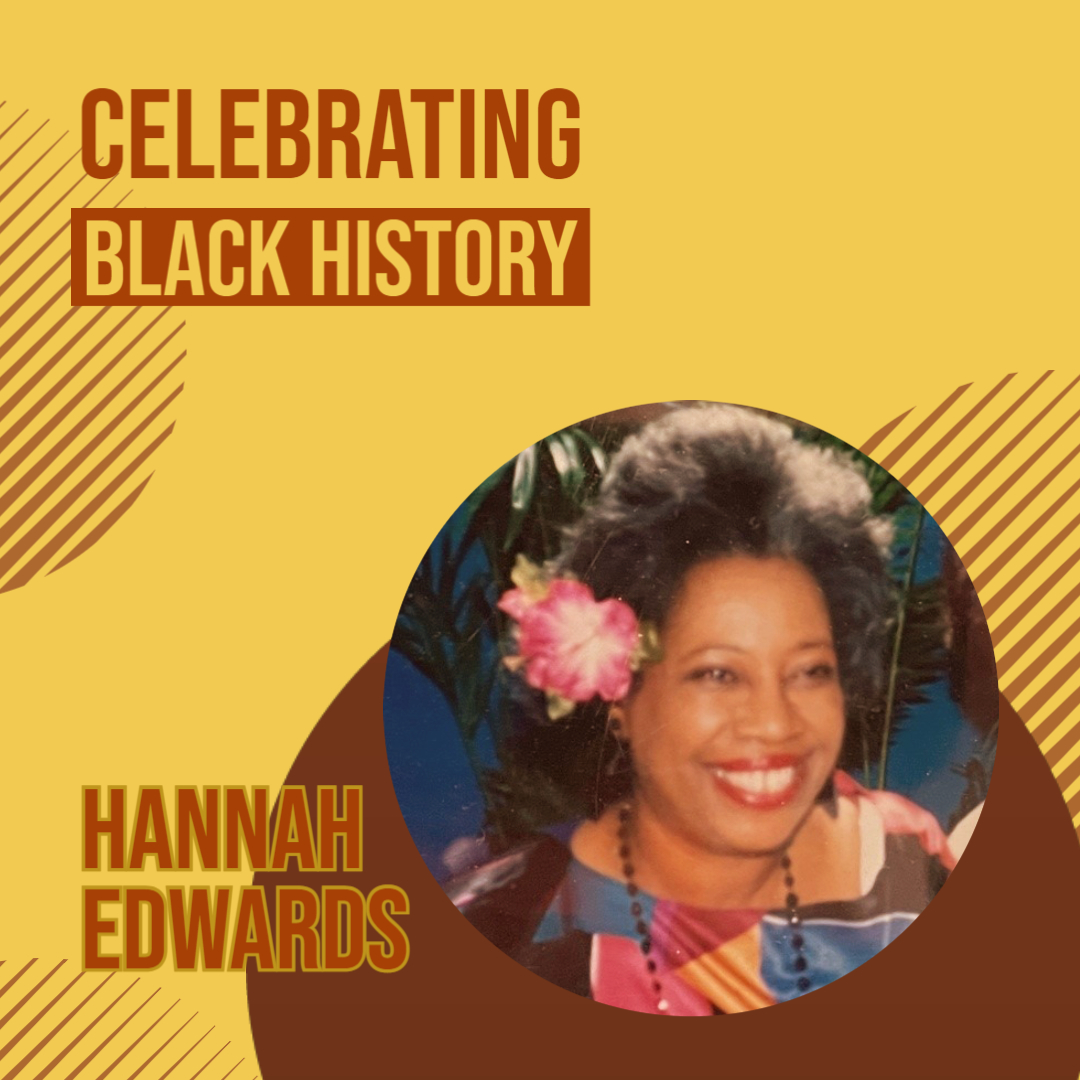
William H. King
William H. King is a Hendersonville native. King was a civic leader and active in his church. He was the scoutmaster for Boy Scout Troop 684, Sunday School Superintendent for the Union Grove Baptist Church, coach of a Little League team, former chairman of the Western Carolina Community Action Board, and Chairman of the Community Chest of Berkeley Mills. He was recognized by the community for his good works by having a park in the Green Meadows section of Hendersonville named after him.
William H. King is pictured with his wife, Willie Mae King, who also actively served the community.
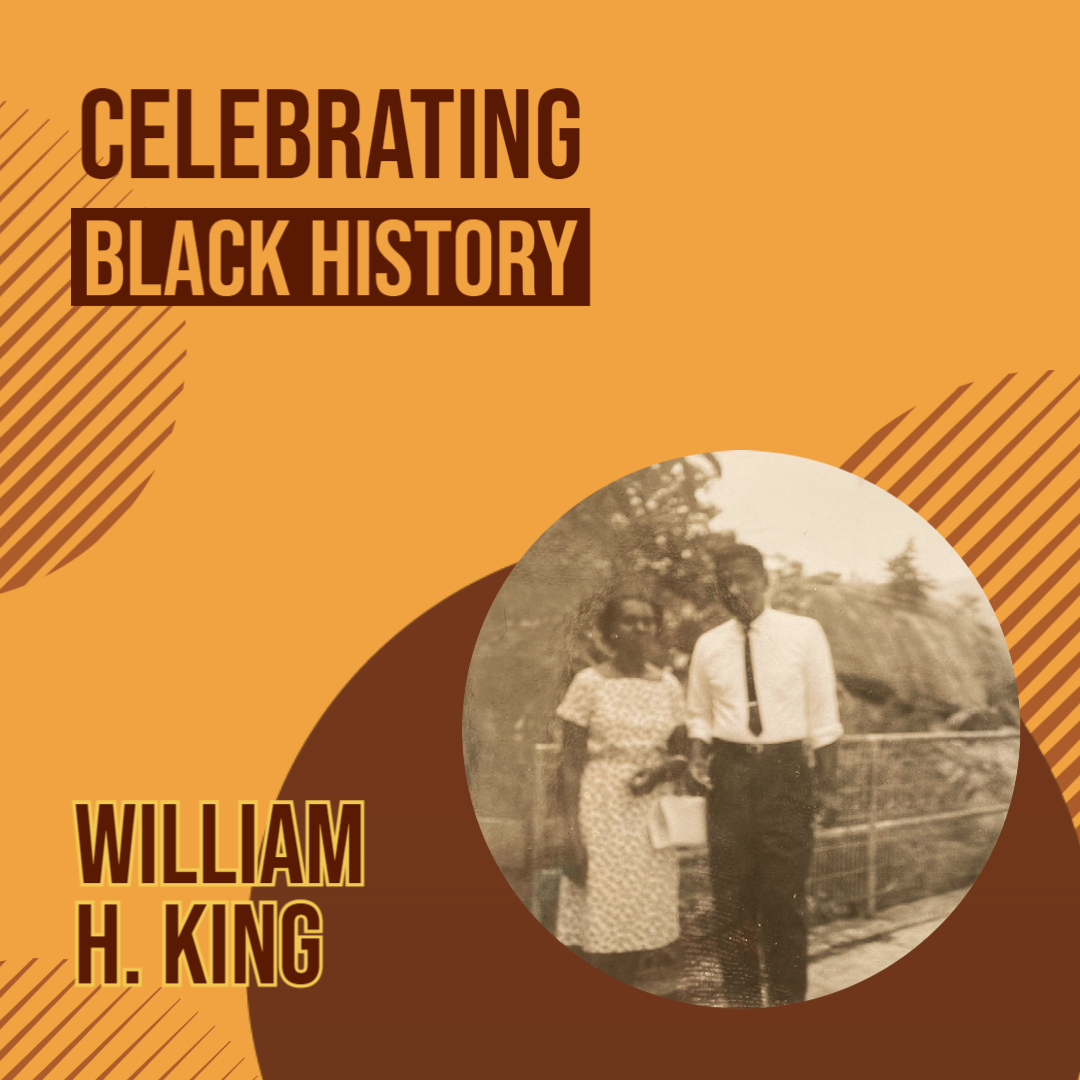
Terry L. Martin
Terry L. Martin was born on March 11, 1960, and is the son of two Hendersonville natives Minnie and Harris Bohannon. After graduating from East Henderson High School, he joined the Army National Guard. In 1981 he began work with the City’s Public Works Department and in 1985 became Hendersonville’s first Black Firefighter. Terry is currently an Engineer and works for Green River and Valley Hill Fire Departments outside of his service to the City of Hendersonville.
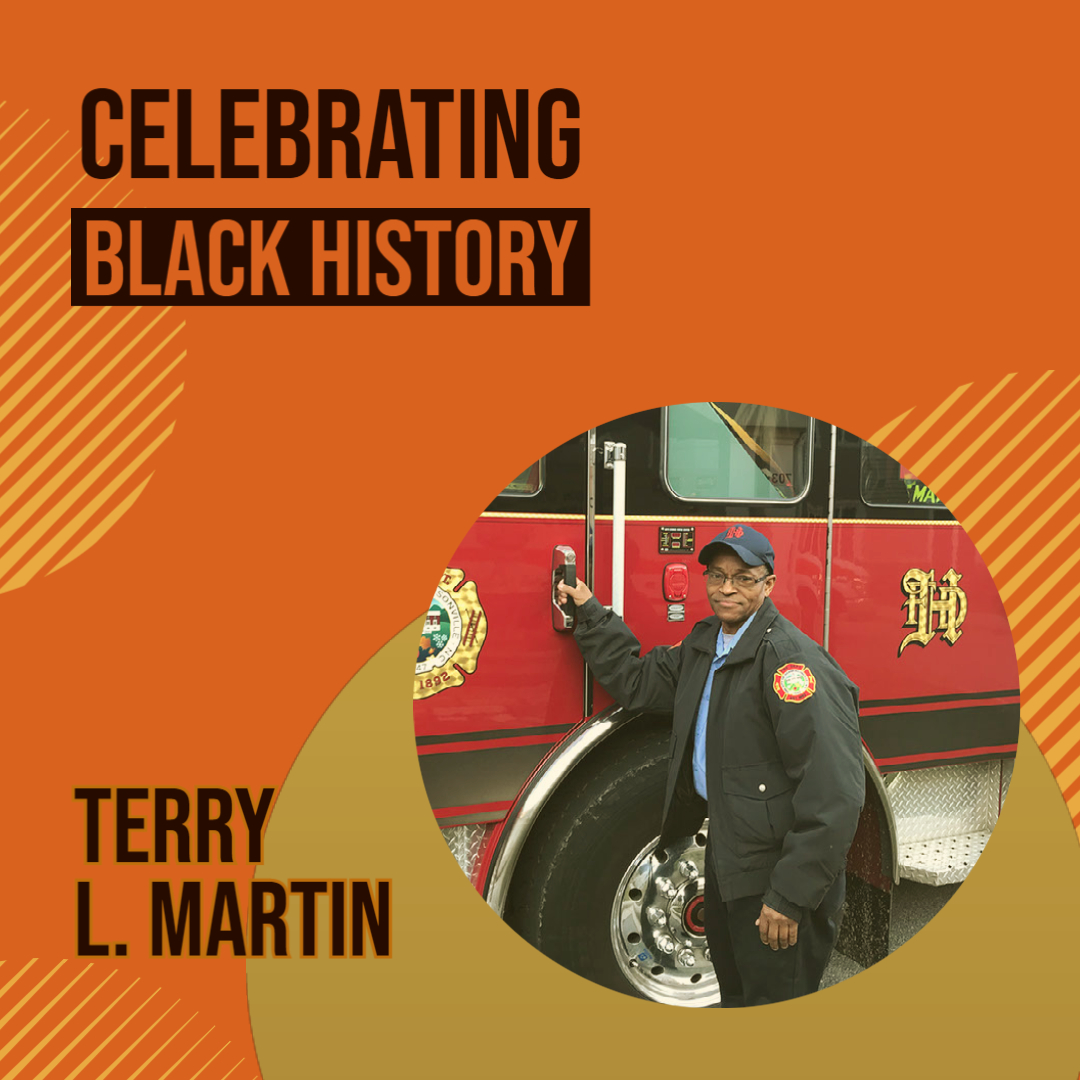
Joseph Knight
Joseph Knight is the Executive Director at Hands On! Children’s Museum. He has also served as deputy museum director of KidSense in Rutherfordton. In the words of Knight, “Play is truly the work of childhood, and in my heart, I truly believe in the mission of children’s museums”. He is currently leading efforts to create the People's Museum in Downtown Hendersonville.
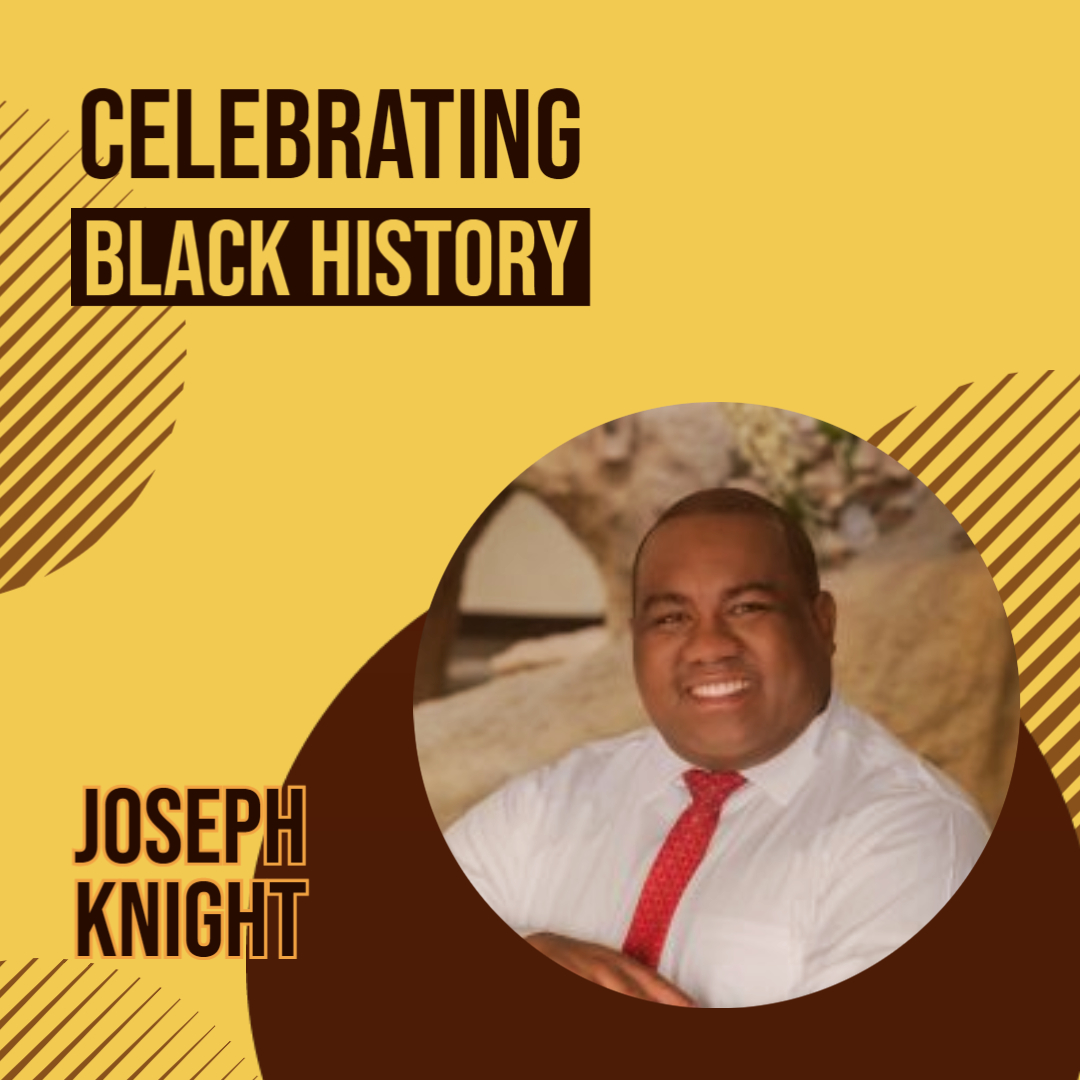
Danaé Aicher
Danaé Aicher is a mother of two and journalist of 20 years, covering local and state politics. Aicher was a candidate for N.C. House District 117. She was instrumental with the group Henderson County Race Equity Collective and serves as Co-Chair of Building Bridges of Asheville. She is currently the Equity Director at Rainbow Community School.

Rev. Dr. James McMinn
Rev. Dr. James A. McMinn was a native of Hendersonville, and a graduate of Ninth Avenue High School and Fruitland Bible College. He worked for the Henderson County School System and helped organize the after-school mentoring program. He mentored many young people in our community. He also founded and pastored Contemporary First Baptist Church and served as a Chaplain for Pardee Hospital. He was a member of the NAACP and served on numerous boards in our community.
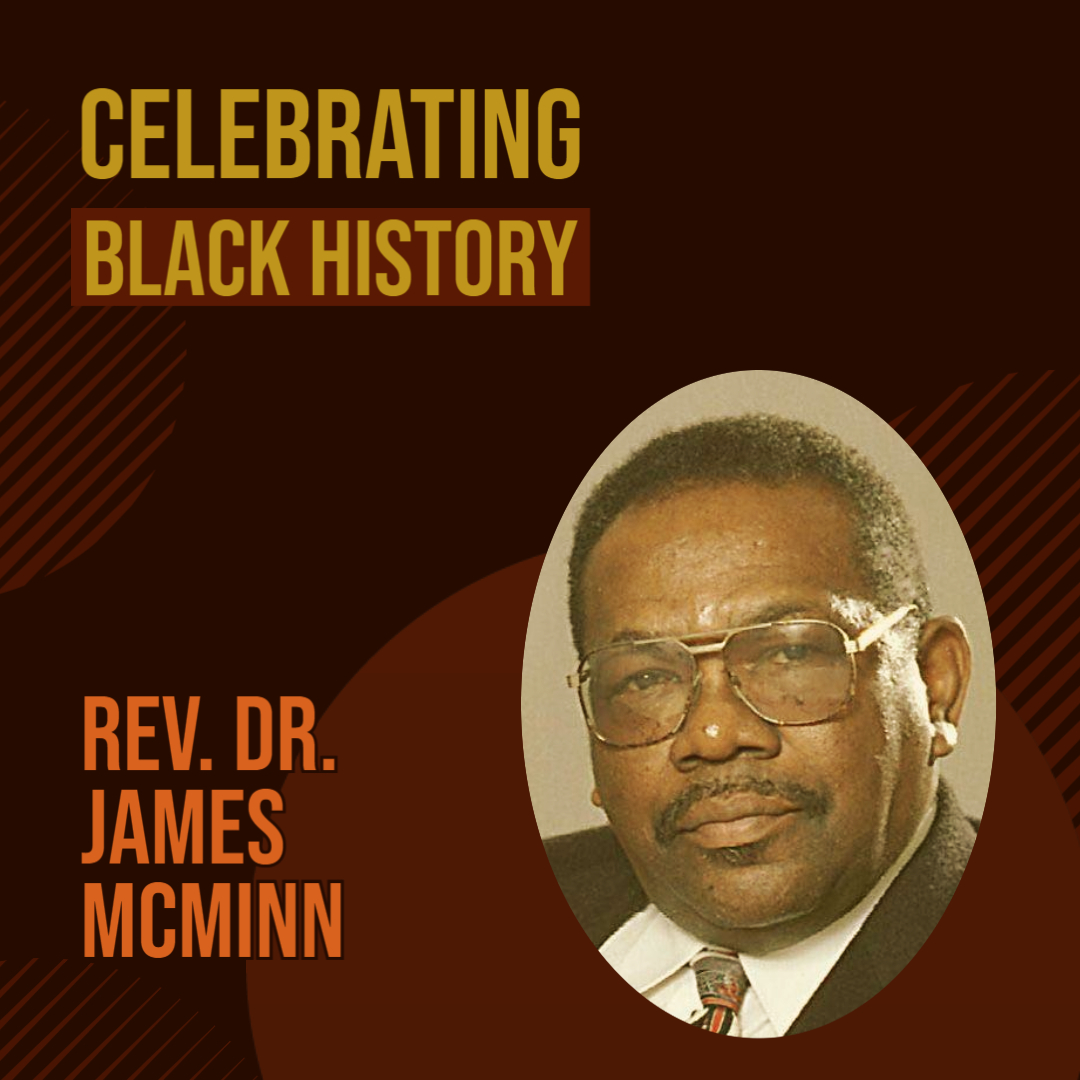
Rev. Anthony McMinn
Rev. Anthony McMinn is the President/C.E.O. of the Hendersonville Rescue Mission. McMinn is a Hendersonville native who attended West Henderson High School and Lees McRae College. He coached football at Hendersonville High School (HHS) and served in the mentoring programs at HHS and Bruce Drysdale Elementary School. He also serves as a Chaplain for the Hendersonville Police Department and has served on boards for the Boys & Girls Club, State Employees Credit Union, African American Cultural Committee, and AdventHealth Foundation among others. In 2013 he received the President’s Call to Service Award from Barack Obama and in 2018 was honored with the Old North State Award for years of exemplary service and commitment to North Carolina.
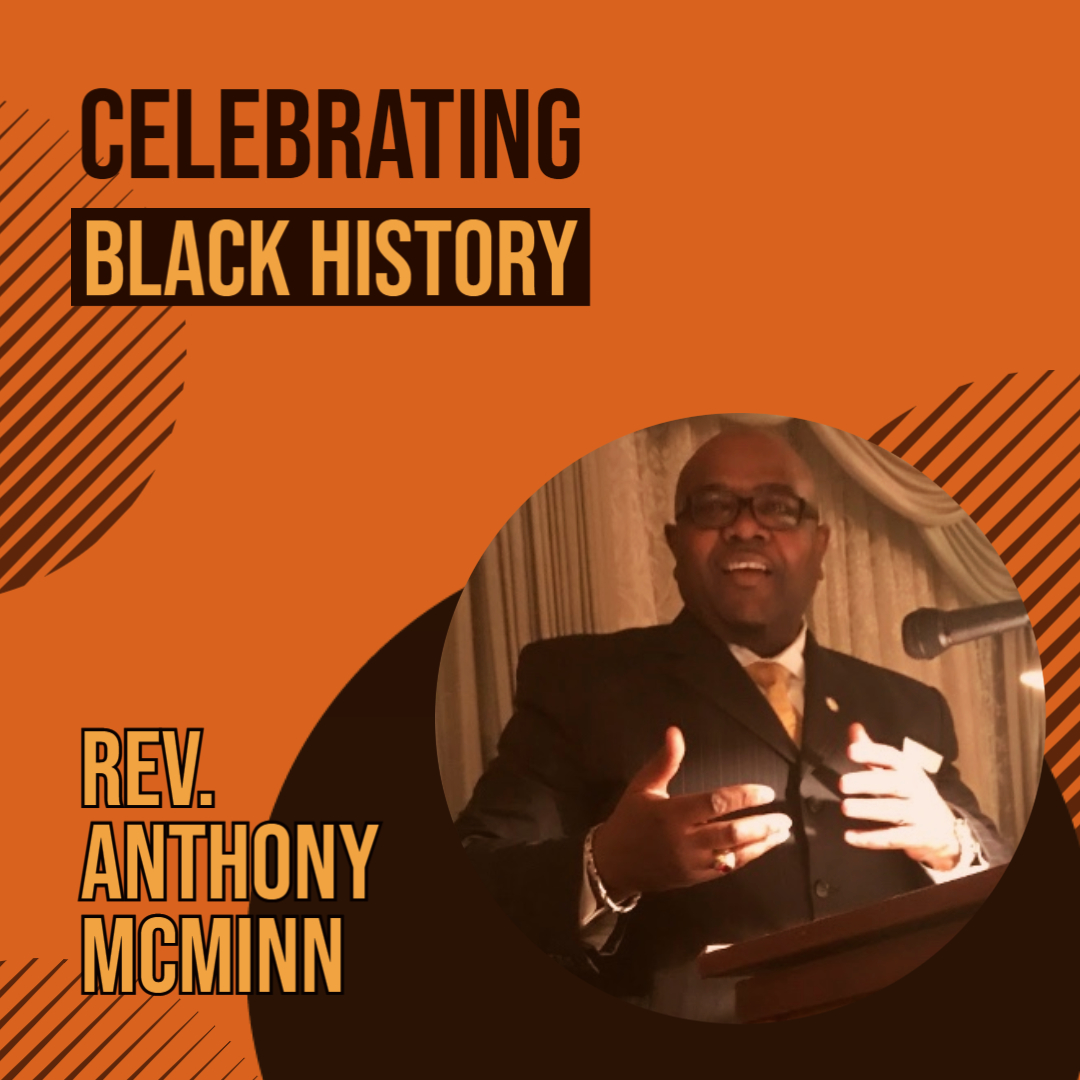
Yvonne Mims Evans
Yvonne Mims Evans attended Ninth Avenue School until 1965 and then went to Allen High School where she graduated at the top of her class. She attended Wellesley College in Wellesley, Massachusetts as well as Duke University Law School graduating with a Juris Doctor degree. She is a member of the Greater Bethel Church in Charlotte, North Carolina. She is also affiliated with the Charlotte-Mecklenburg Planning Commission, and works for the law firm of Chambers, Ferguson, Wyatt, Wallas, Atkins, and Fuller. She was the first female Chief District Court Judge in Mecklenburg County and in 2020 was honored by the NC Bar Association as a Legal Legend of Color Honoree.
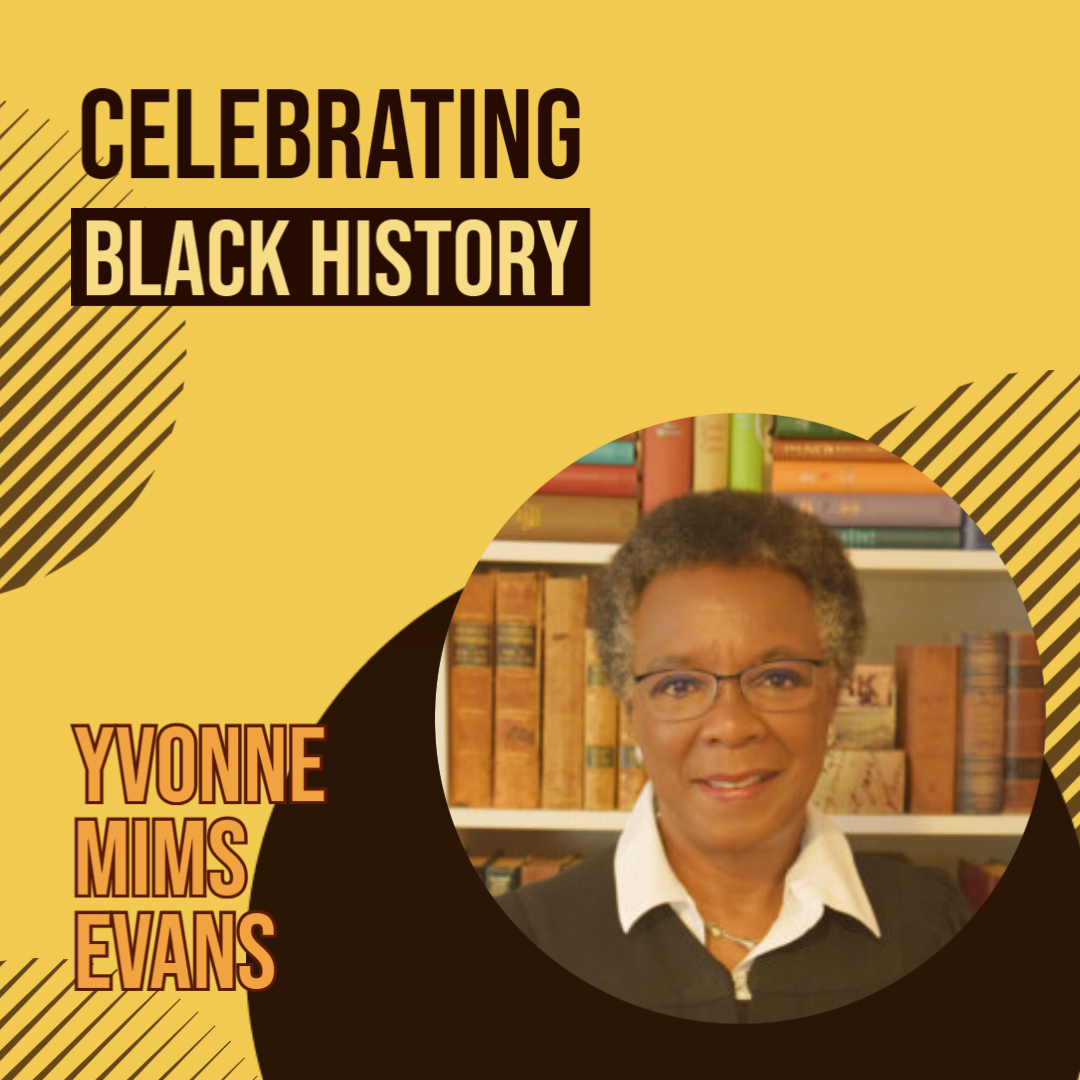
Rev. Billy Waters
Rev. Billy Waters has served as the Pastor for Union Grove Baptist Church since February of 2000. Under his leadership, the membership of Union Grove increased dramatically. On October 15, 2005, Union Grove broke ground on their new Family Life Center.
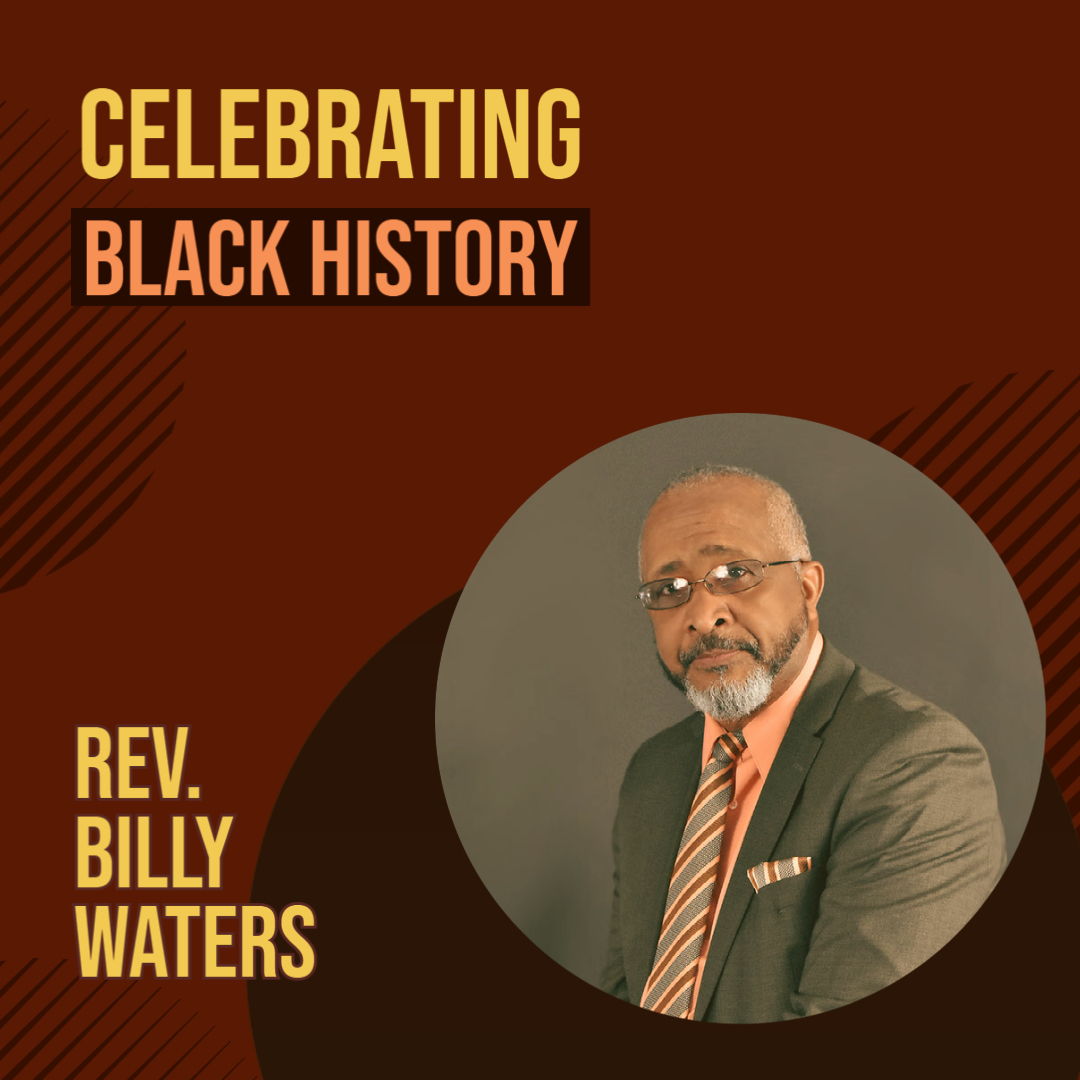
Tippy Creswell
Tippy Creswell has been an integral part of the WHKP radio station team since he joined them in 1978 after attending Winston-Salem State University. Tippy works in production at the station as well as serving as an announcer, gathering news, and working in sales. He is a graduate of Hendersonville High School and was a member of the 1972 Hendersonville HS Basketball team. With the help of Creswell, the team was able to bring home the 3A State Basketball Championship.
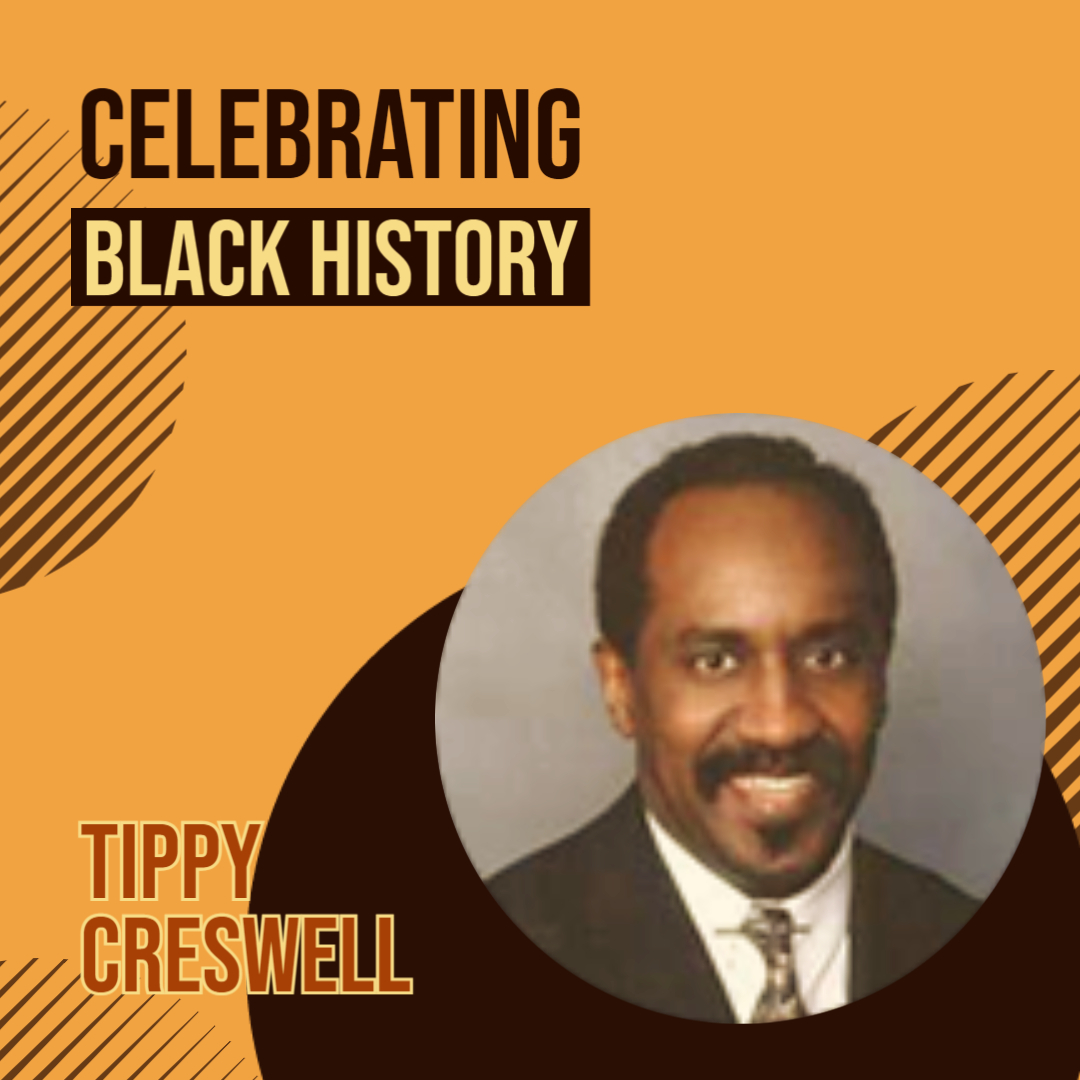
Rev. James H. Sullivan
Rev. James H. Sullivan was born on March 28, 1924, to Bessie Sullivan of Hendersonville. He was a Pastor in several local churches for over 30 years. The City of Hendersonville presented him with a certificate recognizing him for his unselfish efforts in the civic interest of his community. In the late 1900s, a newly constructed park in the Green Me a dows neighborhood was dedicated in his honor.
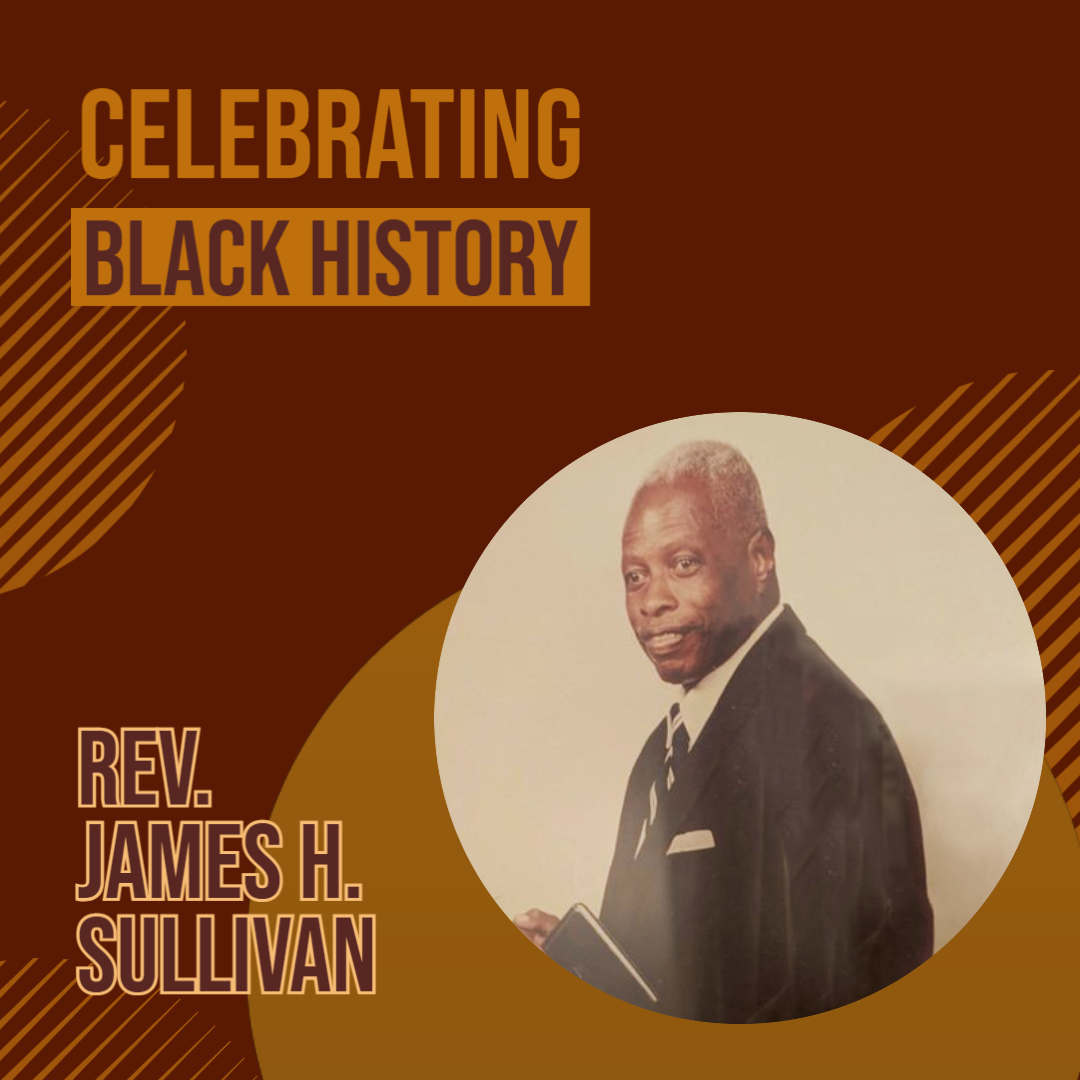
Gary Rivers
Gary Rivers is a longtime Hendersonville resident and Ninth Avenue School attendee. Rivers has served as head basketball coach at Hendersonville High School and was the first African American baseball signee at the University of Tennessee in 1975. He has served as Director of Minority Services at Blue Ridge Community College as well as Athletic Director. Rivers plays a crucial role in coordinating the Martin Luther King, Jr. Unity Breakfast which takes place annually at Blue Ridge Community College.
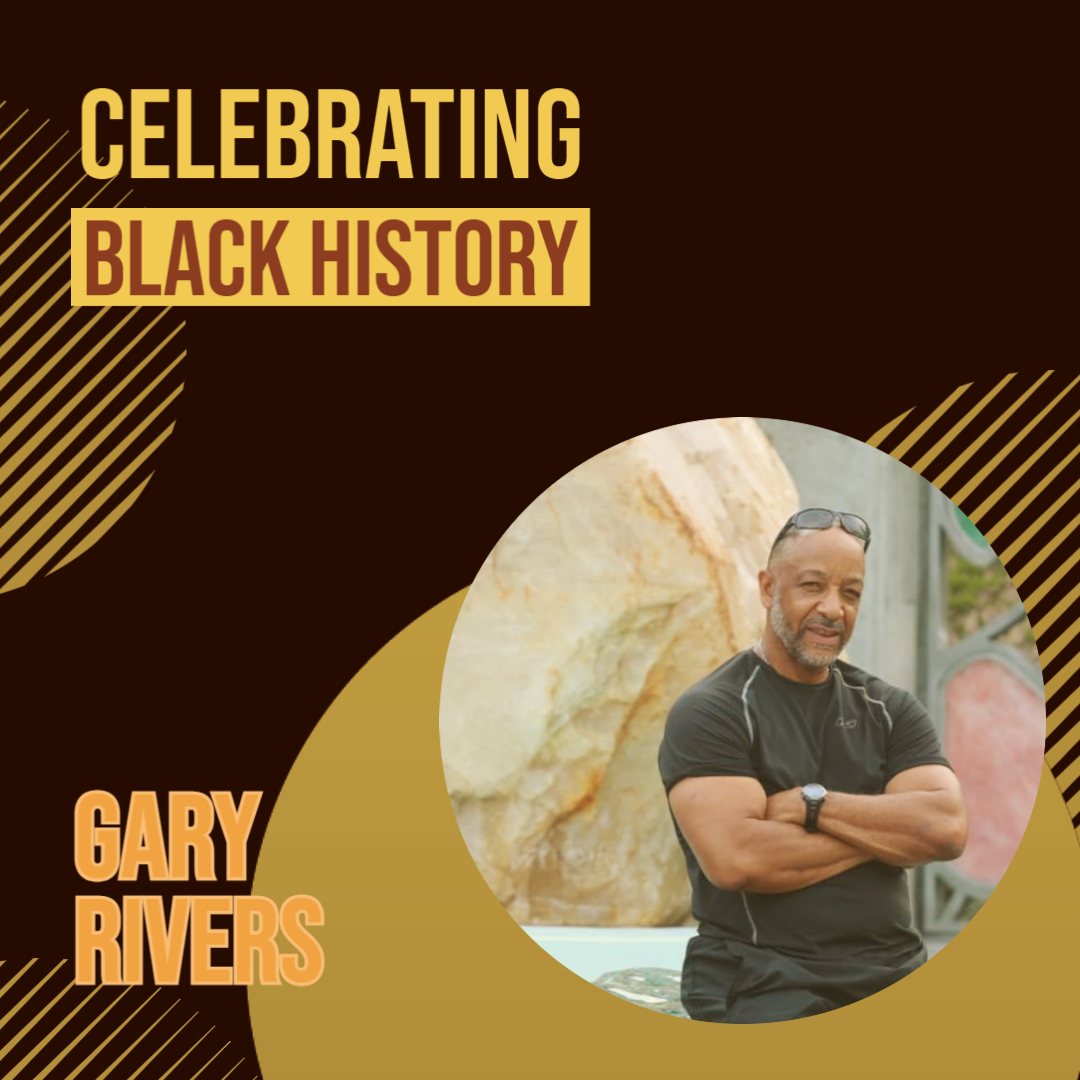
Pat Jones
Pat Jones was a Hendersonville educator and civic leader, serving her hometown for over 50 years. After graduating from Shaw University in Raleigh in 1963, Jones took a job at the Ninth Avenue School. After teaching in Hendersonville for two years, she returned to her hometown to teach. She went on to move back to Hendersonville and teach at Bruce Drysdale for over 20 years. She also served on the Community Foundation of Henderson County and other boards and committees at Blue Ridge Community College.
